There is much talk about Syria since the beginning of the civil war, but it doesn’t seem that the situation is getting any better. During the conflict, millions have become refugees, but even those people who have lost everything or almost everything are being used for political purposes.
Some politicians believe that throwing mud at refugees is absolutely normal, as most of them are Muslims and thus (for some unknown reason) they are a potential “threat” and unfortunately, many believe this logic. This can be seen by the rise of politicians like Donald Trump (USA), Geert Wilders (the Netherlands), Marine Le Pen (France) and similar who are too popular in their countries. All of them are known for their anti-immigrant rhetoric. The recent Brexit also party happened because UK citizens were unhappy with their country’s immigration policy.
This situation is absolutely normal — people are afraid as they don’t trust “aliens”. This is due to our genes and it saved our lives in the past. Today, unfortunately, it breeds distrust between people and dishonest politicians use this.
Instead of listening to the stories of these politicians and uneducated people who won’t even find Syrian on a world map, I suggest taking a look at a hundred shots made by me in August 2010, which will give the outside observer some idea about the country and its inhabitants.
Over the past few years, Syria has lost a lot in its image. Today, the public opinion of Syria is the same as of the North Korea, Iraq, Afghanistan, and Pakistan. And this is very bad as the residents of the Northern hemisphere believe that the country was always like this and Syrians don’t know how to live in peace, don’t know how society functions and so on. Therefore, it is very important to demonstrate the peaceful pre-war life of the country.
It just so happens that I’m half a Belarusian and half a Syrian Kurd, while I grew up in Moscow, Russia. Although I am familiar with the Syrian diaspora in Russia I have no emotional ties with the country and I see it without embellishment. However, things like the Arabic language (which I don’t know), Islam, prayers, headscarves, holidays, etc. that are part of the everyday life of a Syrian, such things don’t cause me any disturb unlike other residents of the Northern hemisphere.
This material has a certain purpose — to introduce the reader a bit (who probably has never encountered with Syria and Syrians in his life) with this country and to show how it looked before the war. For many people, the Middle East is a one big territory where people speak Arabic and practice Islam, but it is an extremely simplified viewpoint and it is as offensive as presenting the Latin America as “Brazil” or the whole Eastern Europe as “Russia”. Territorial, linguistic and cultural proximity does not mean “sameness”.
After my first year at the university, our family decided to travel to Syria in August 2010 to visit our relatives. The next year the conflict will begin — only 7.5 months before its start on 15 March 2011.
We flew to Damascus from Moscow and got a visa on arrival. The first trouble occurred when retrieving the luggage. I took my suitcase from the carousel without the lock and with a partly opened zipper. Fortunately, nothing was missing, but that definitely caused some stress.
I have to admit that it was extremely uncomfortable to be in a country where you can’t understand a word and people look a bit different (clothes, manners, etc.). Although the Arabic language is familiar to me, but only in the Russian-speaking environment — as a “minority”.
Another shock was the weather. When you exit the airport you find yourself in a sauna — it is plus 40 outside! For an Eastern European, who is used to the cold, it’s just hell. You are accompanied by a claustrophobic feeling of suffocation from the lack of air, which can only be avoided indoors — in a car or a building with air conditioning.
Overall, these were the biggest shocks upon arrival. Let’s now start with the photo report. I apologize in advance for the artifacts on some photos — seven years ago I expected to use these photos only for personal reasons.
In the previous century Syria was under French and then under Soviet influence and it is odd to hear people saying that the United States are (mostly) responsible for the situation in Syria. Translating it into their language: “In a unipolar world whose leader is the US, Syria is part of the Russian (and previously Soviet) geopolitical sphere of interests and influence.” Soviet and Russian influence is immediately apparent by the presence of the Soviet and Russian cars:
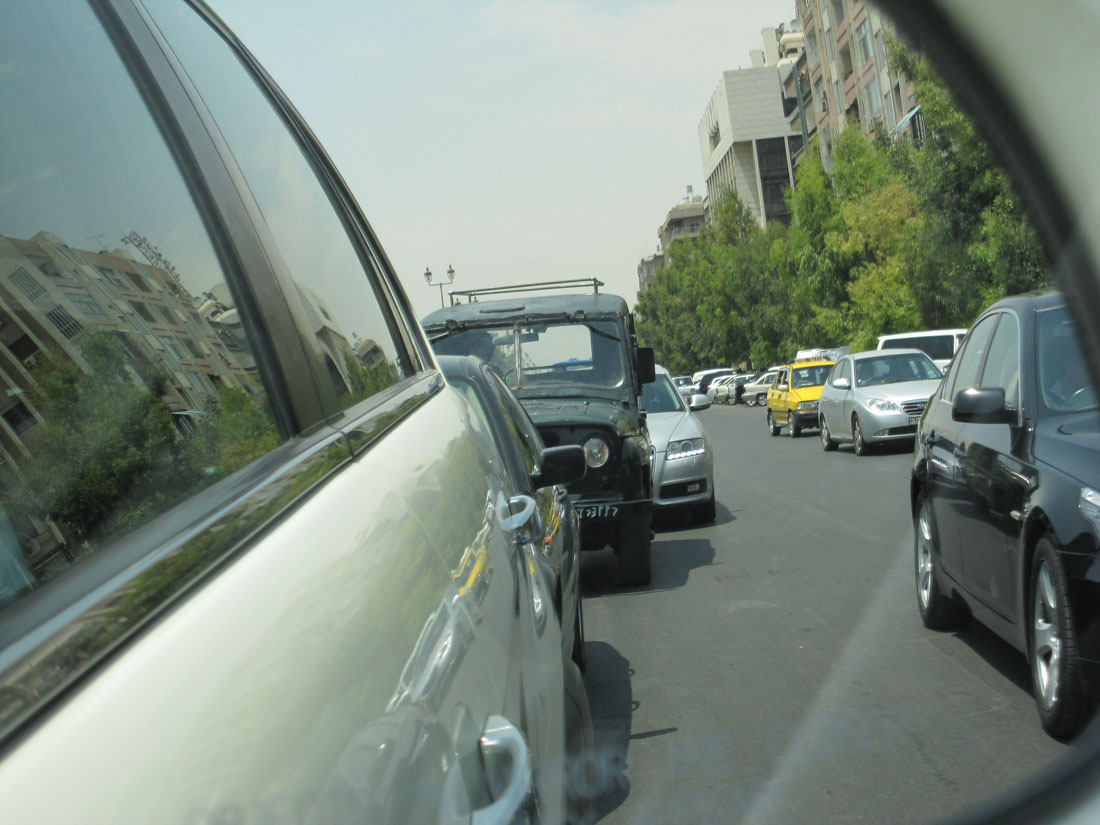

So it’s logical to start with Russia if we are going to talk about who is “guilty”.
The first thing I noted during the review of the photos was the condition of the roads — in general, they are in a great shape for a dictatorship in the Middle East.

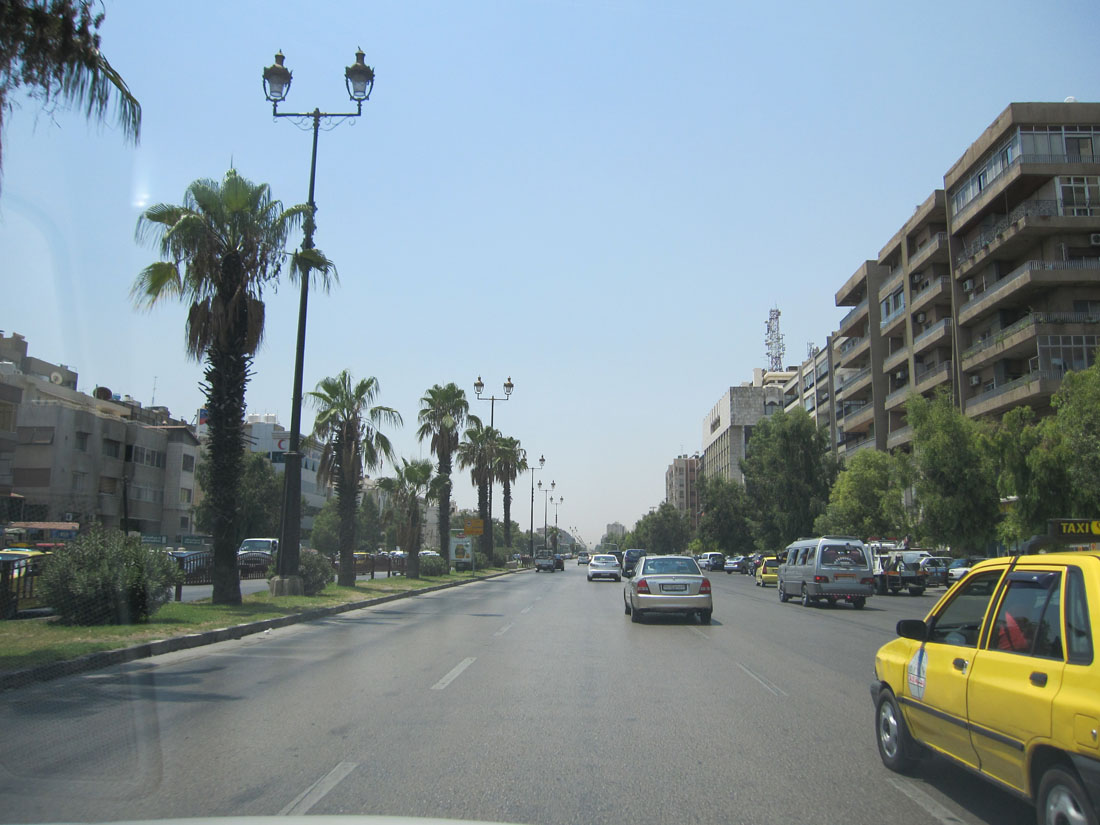
Like many cities in neighboring countries, Syrian cities are almost faceless. A lot of gray buildings with crippled facades and the weather don’t encourage walking and exploring the city.
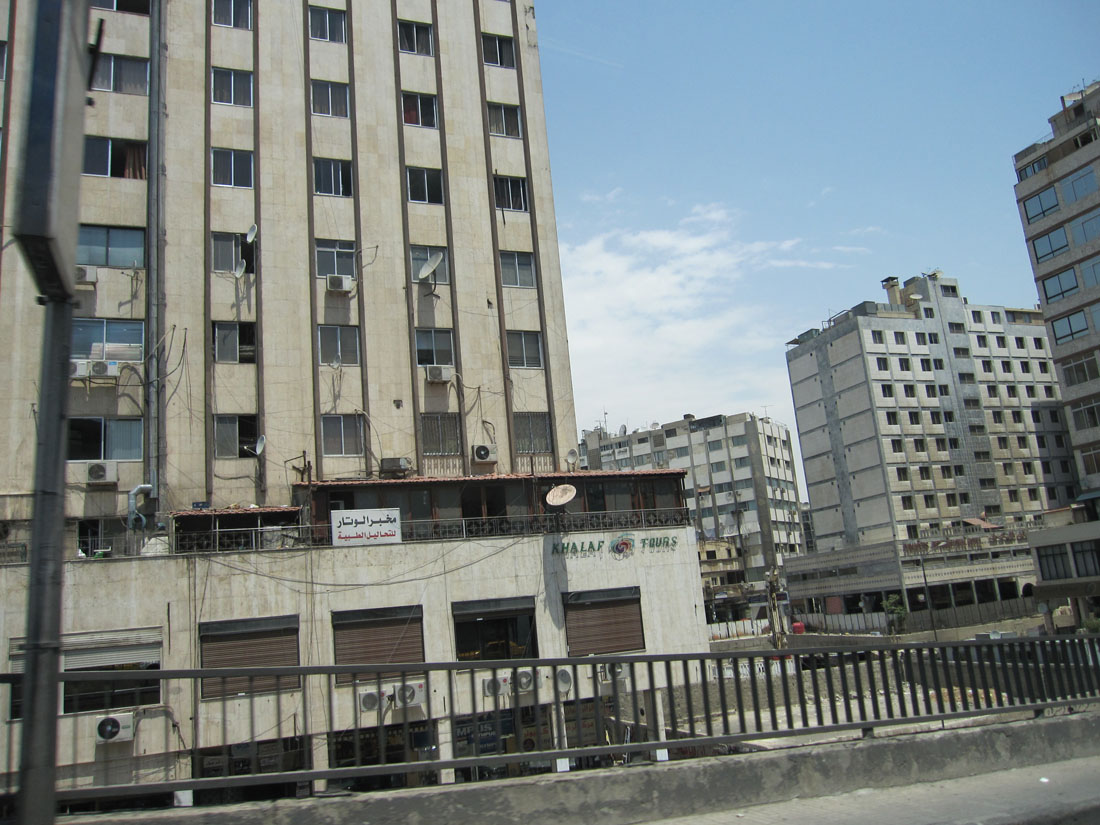

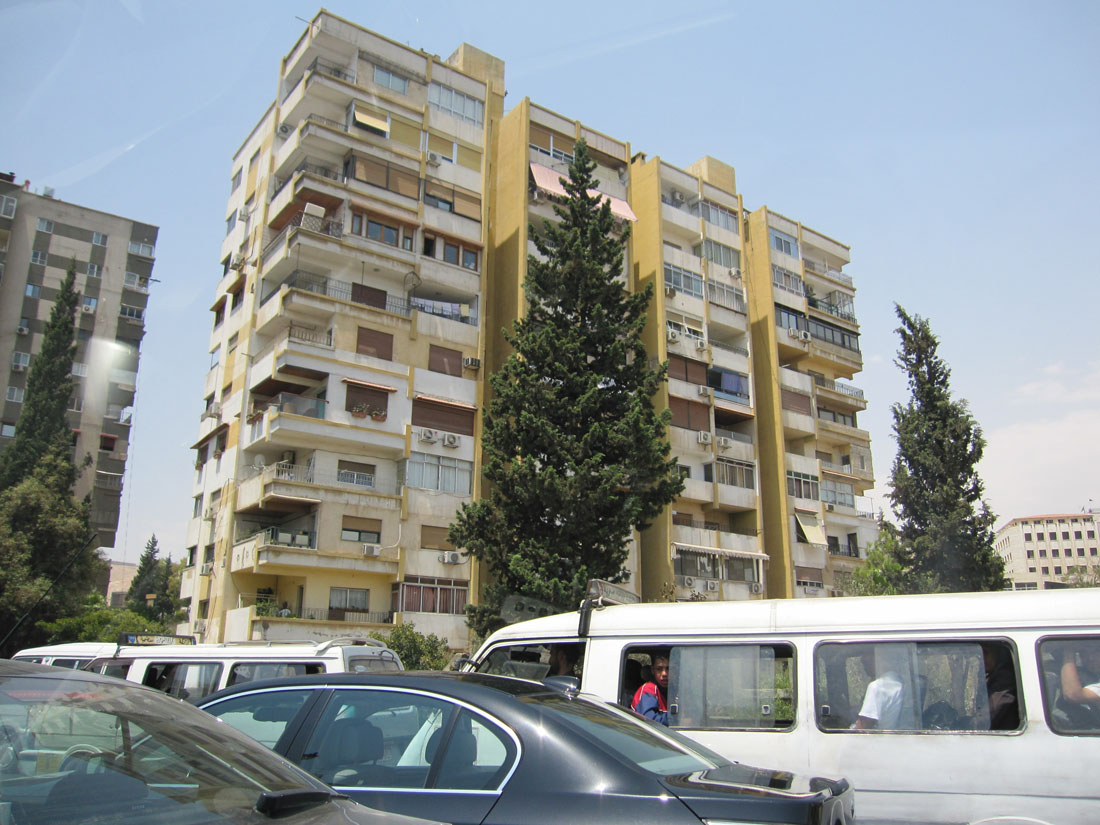



The concept of “architecture” and some kind of “environment” is virtually absent.

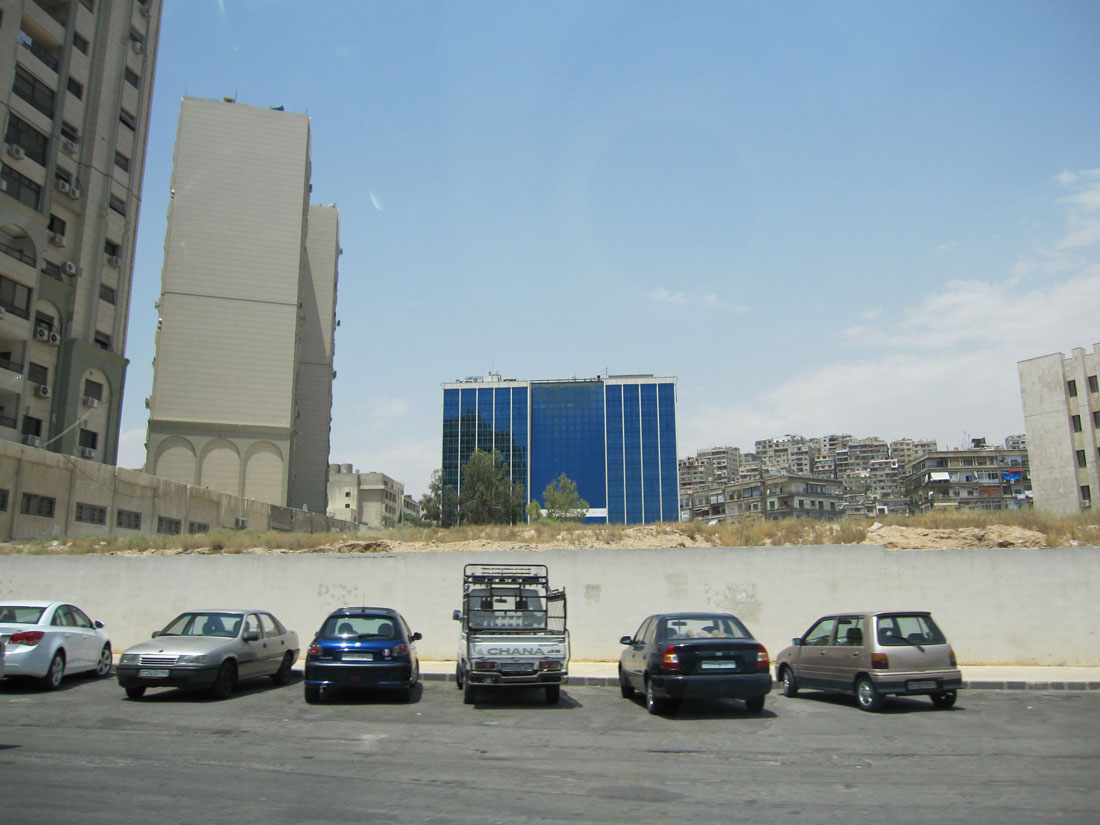
Let’s take a look at the nature. In some parts of the country, it is a sandy landscape with mountains in the background.
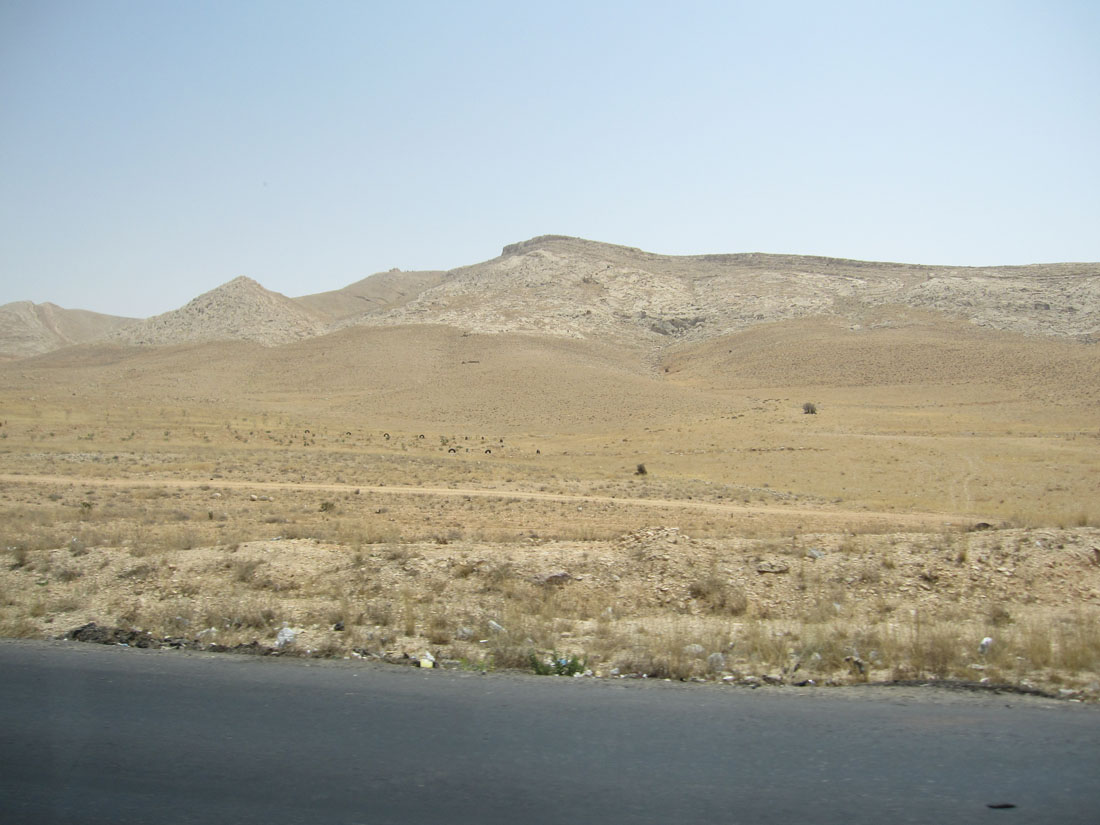
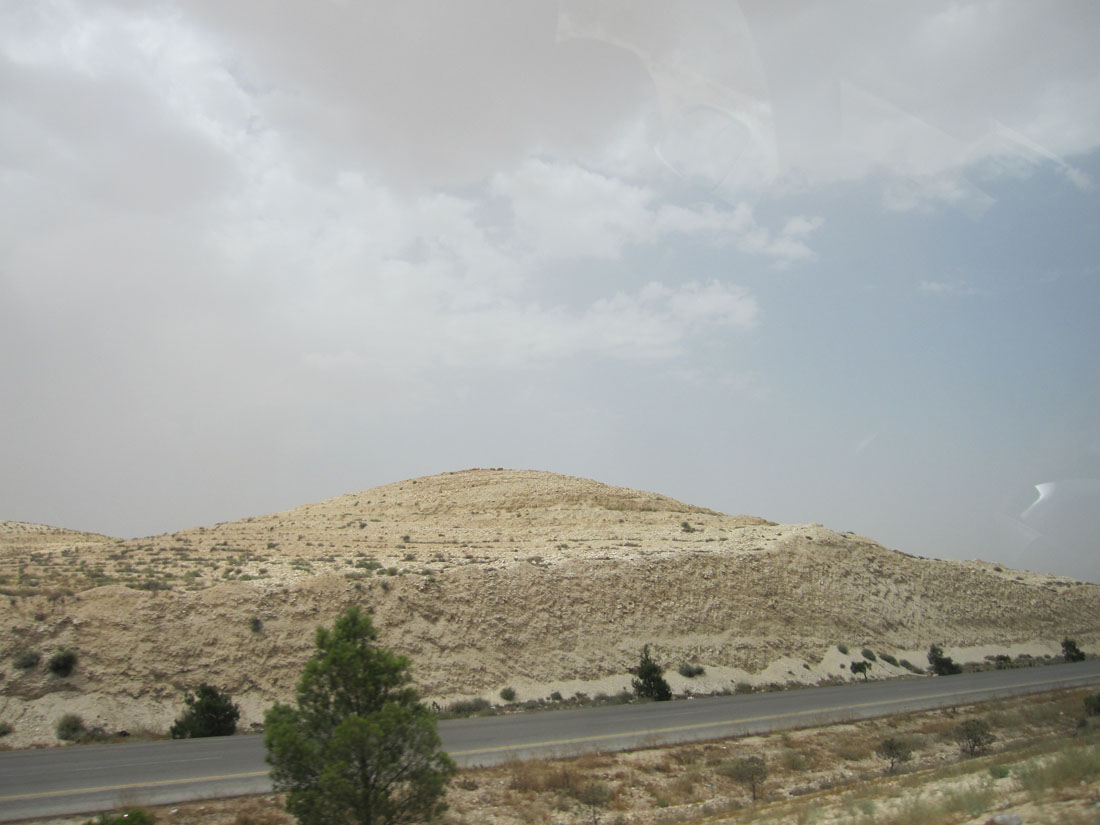
Some parts include more greenery and the mountains are closer.

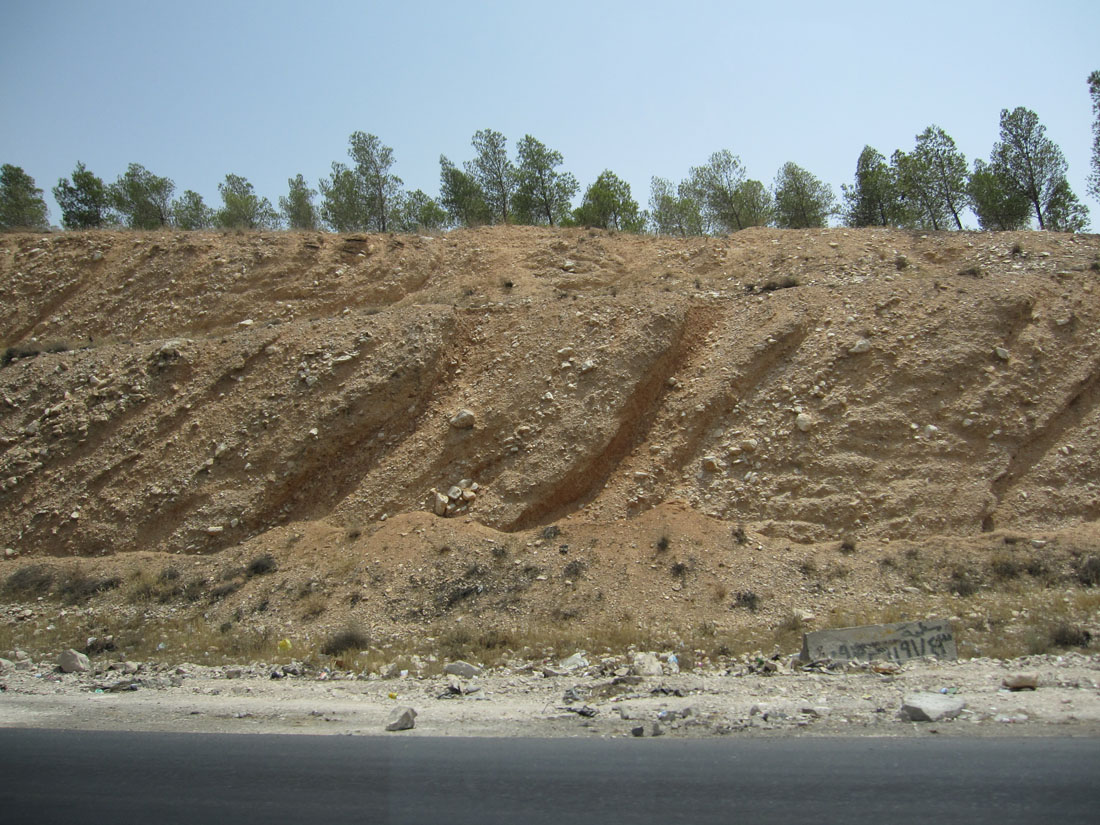
The Golan Heights are visible in the South of the country, which Syria lost during the Six-Day War with Israel.
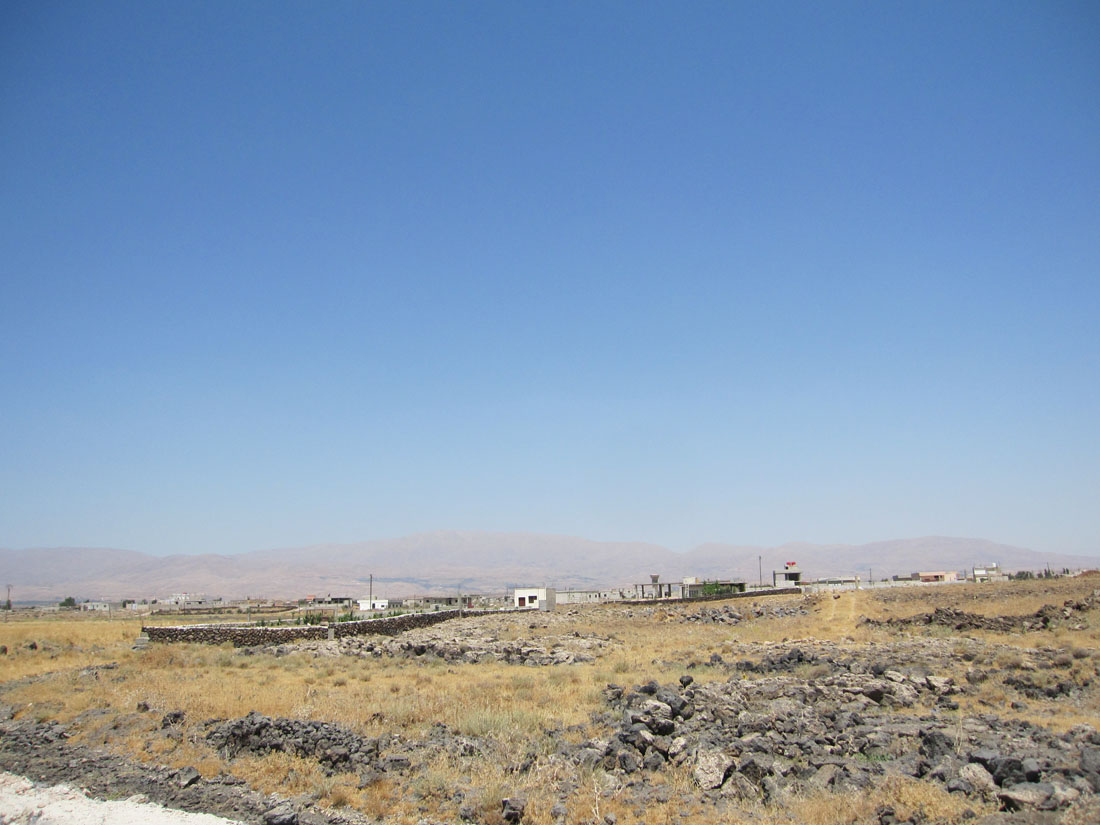
On the way to Latakia, more plants appear…
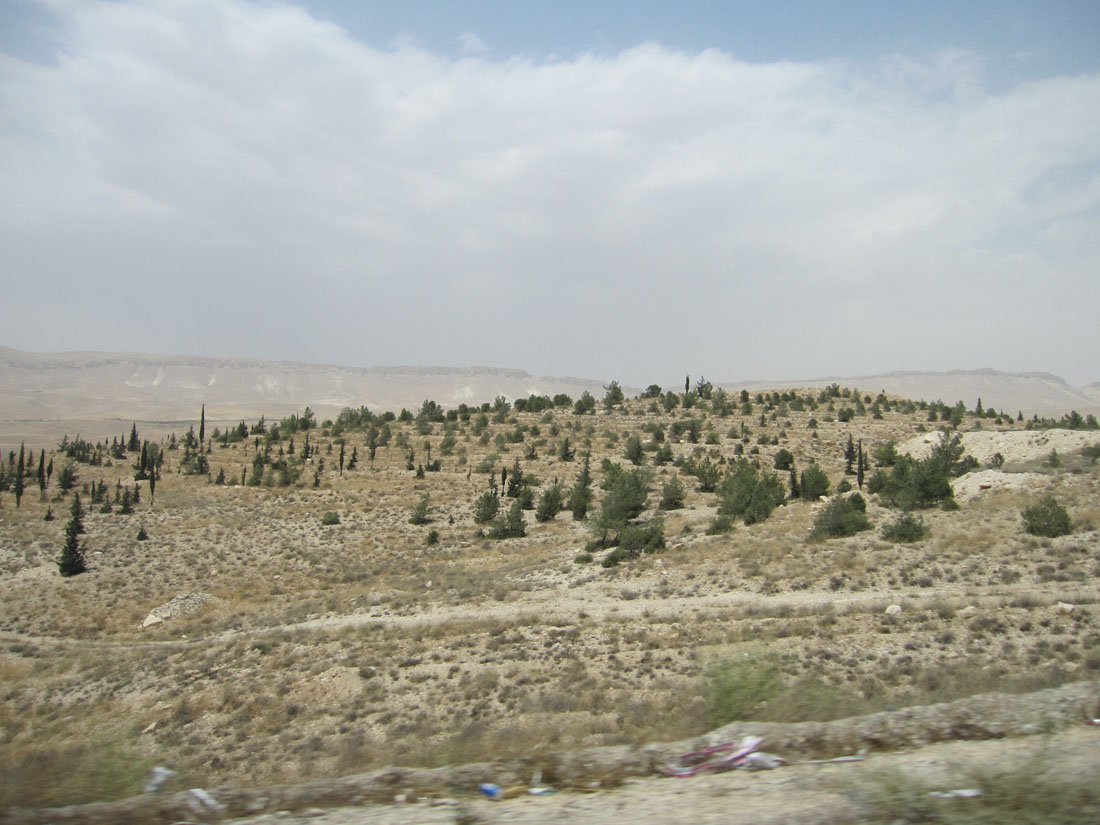
…as well as trees bent by strong winds.
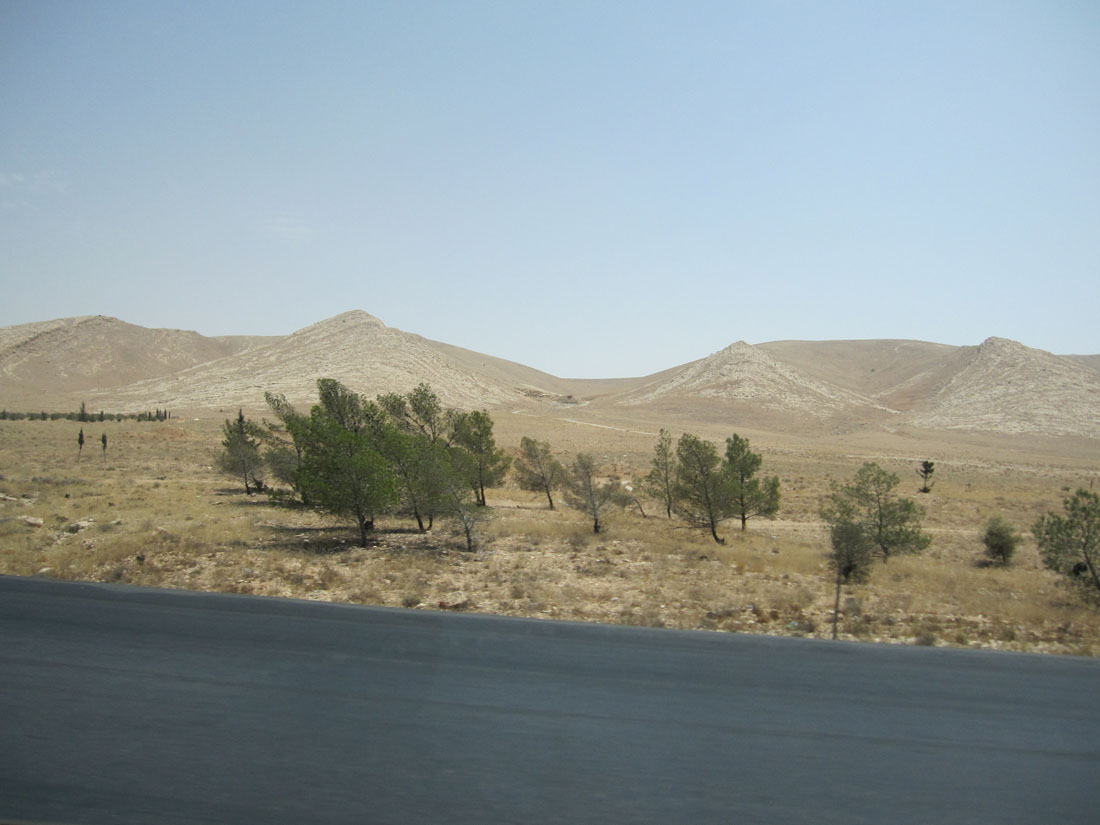
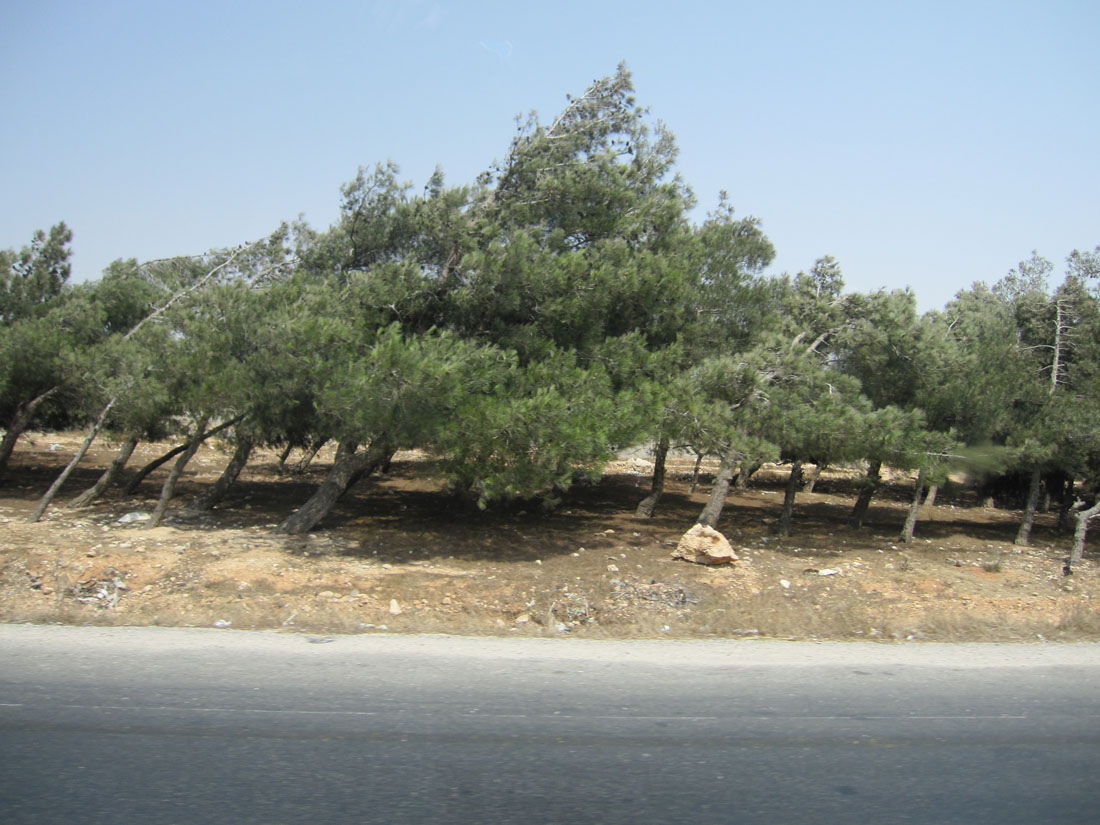
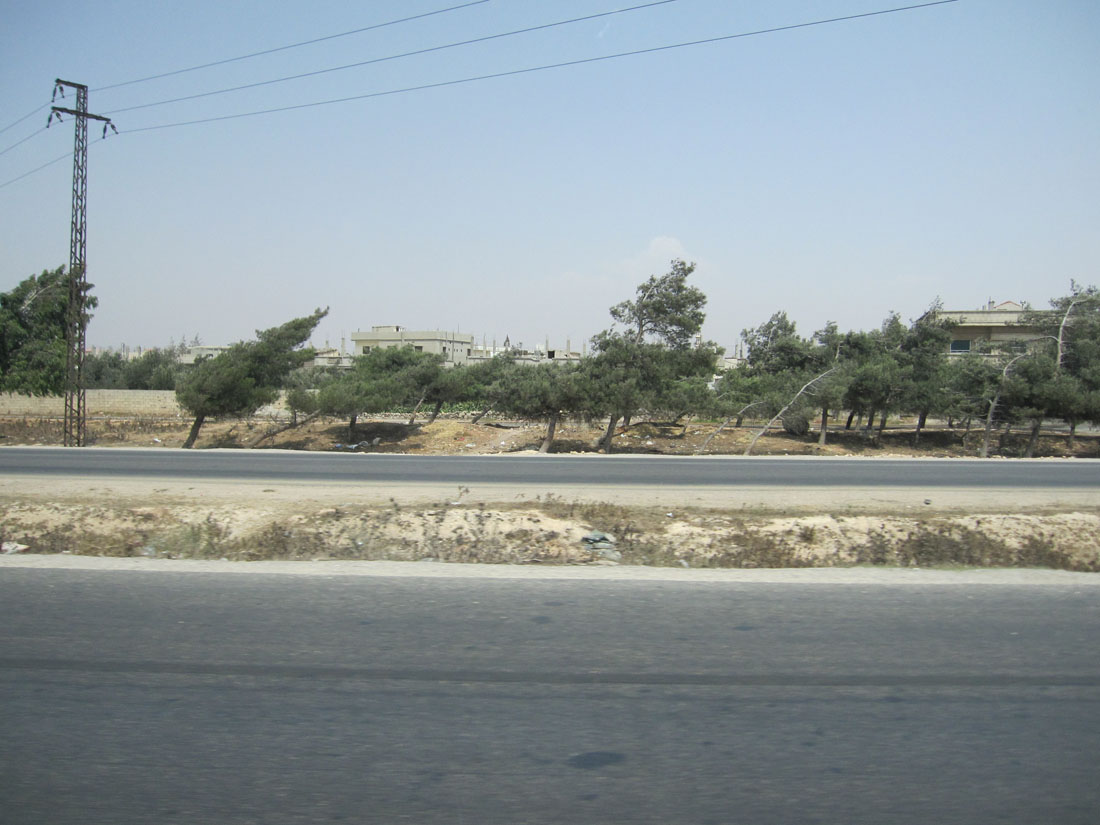
The Latakian landscape is more familiar to a European.

And this is the Syrian coastline:

As the readers have probably noticed there is plenty of garbage on the pictures. Unfortunately, it is very dirty in Syria regarding this aspect.
The garbage is lying on the roads and there is plenty of it.


Even a small pier with a beach is awfully spoiled with litter.

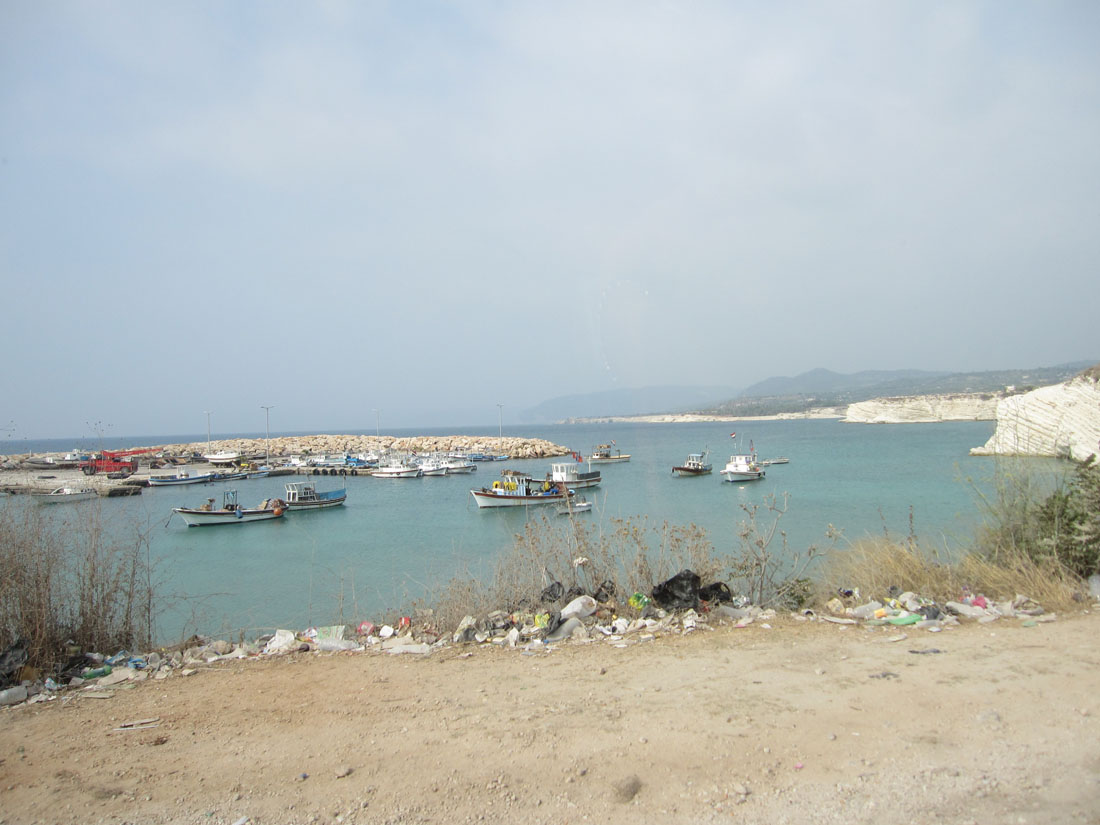
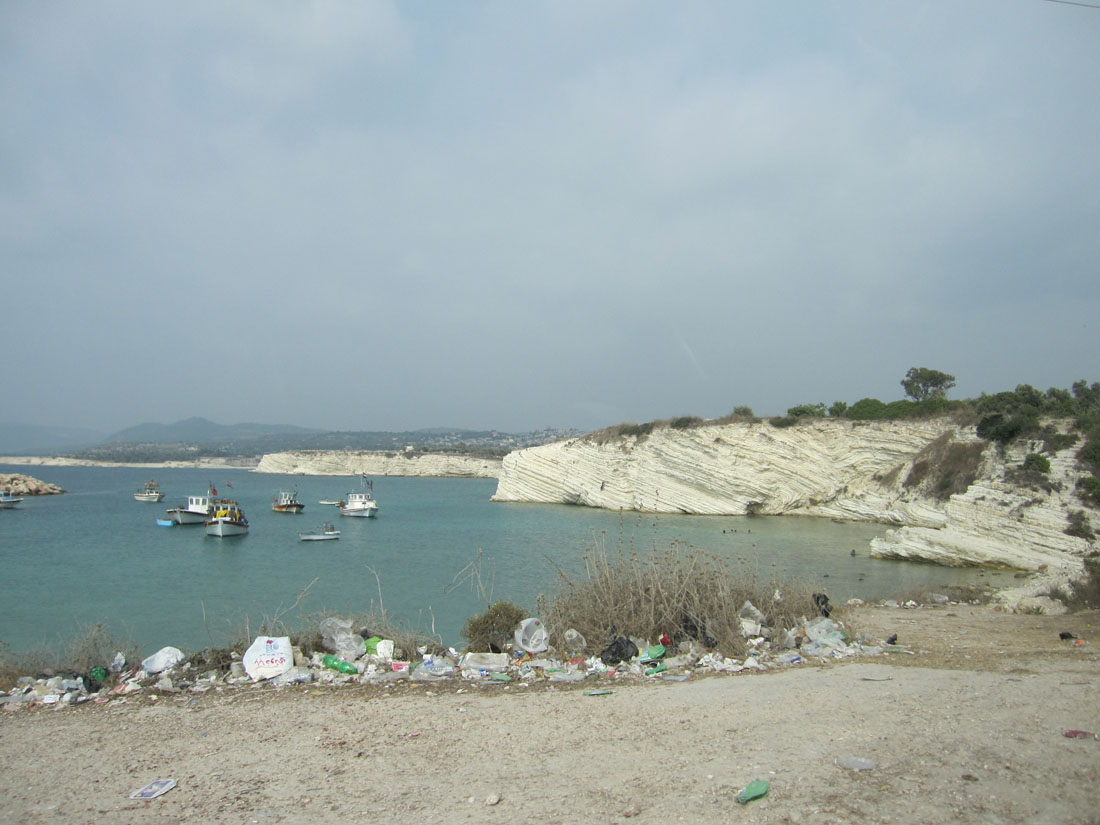
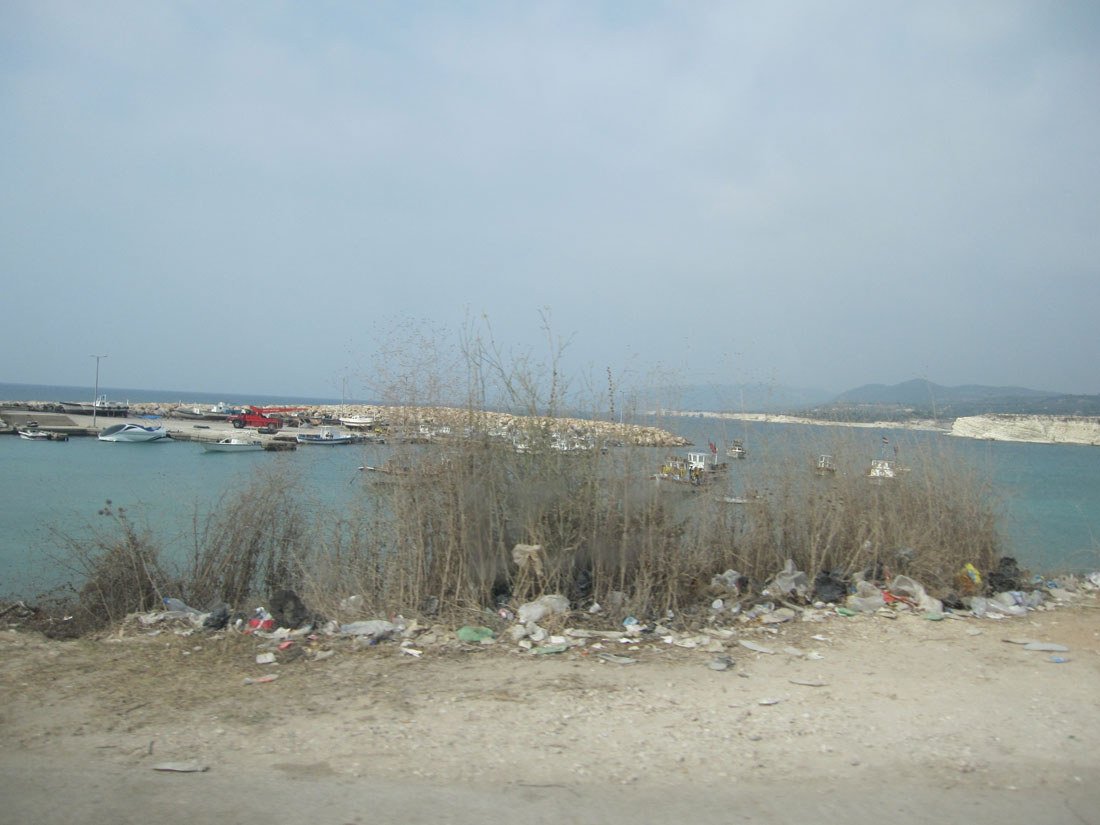

It is hard to watch this but I would not claim that Syrians are pigs. The environment shapes a person and one needs to put a lot of effort to go against the flow. If it is a norm in the society to litter, then everybody will litter (especially considering the fact that, as we have seen, no one is paying attention to this issue in the country).
Also, in addition to the garbage a large number of unfinished buildings, construction sites, and just mess can be evident in Syria.
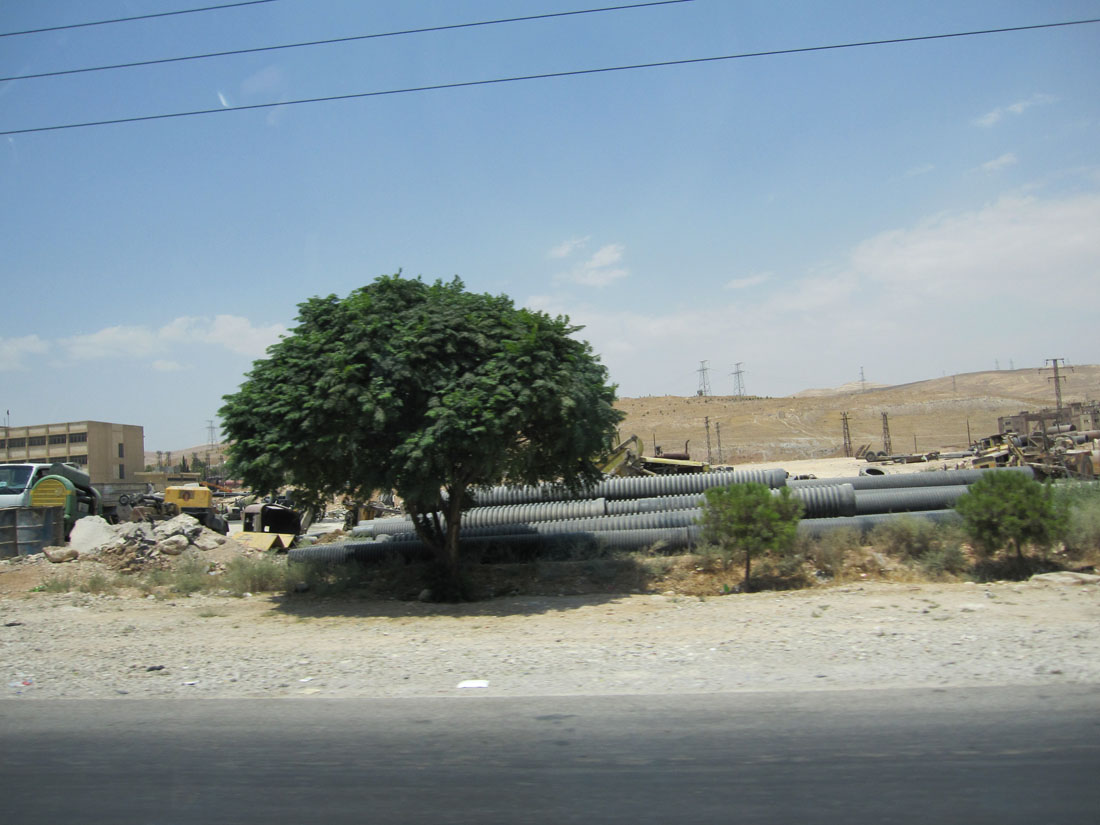
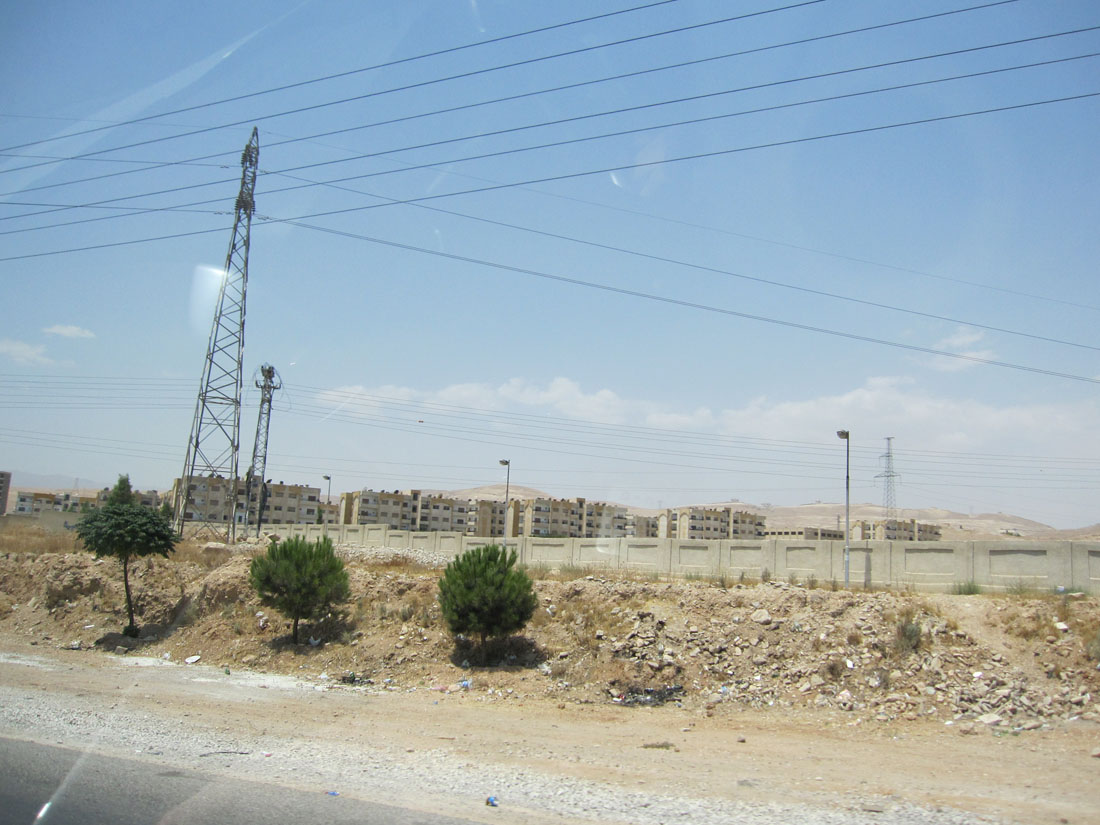
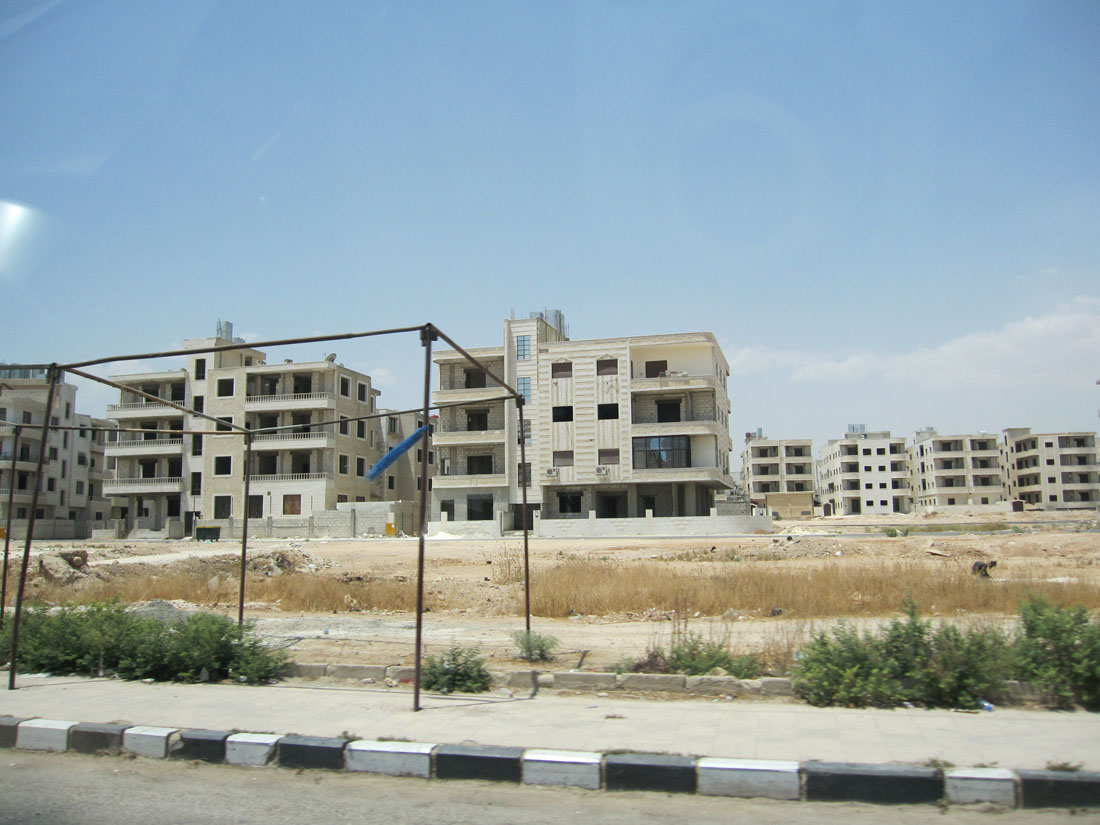
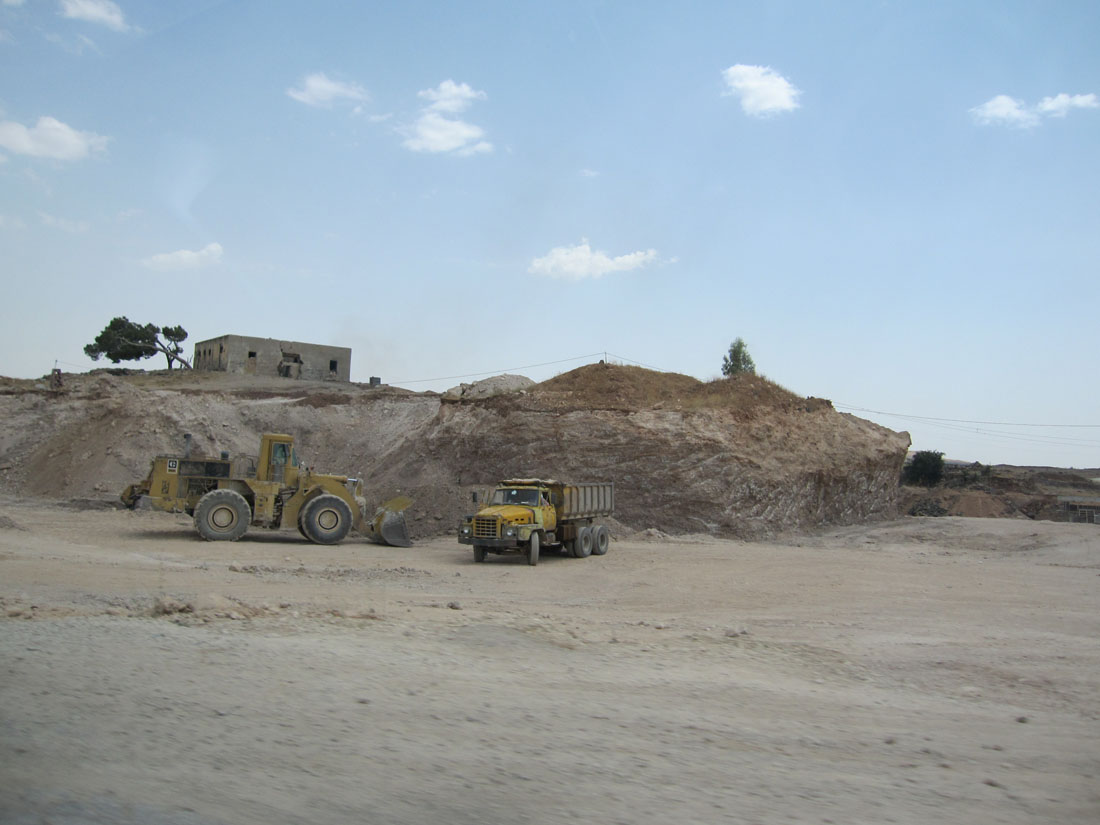
Judging by the fact that I’ve almost never seen that in developed countries and it is quite common in developing countries it can be safely assumed that it is the result of corruption in the country.
While there is road marking in the city, if you go outside the city the roads are more or less “free” from any restrictions.
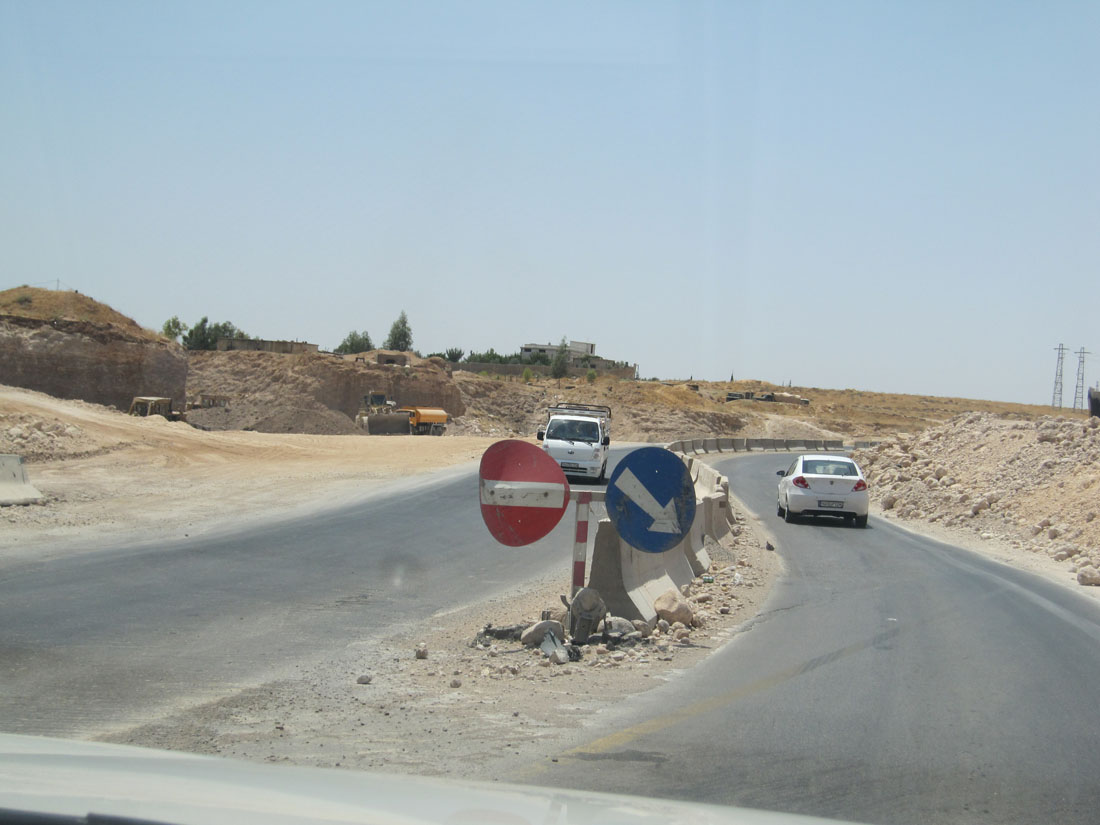

However, it is not even present everywhere in the city.
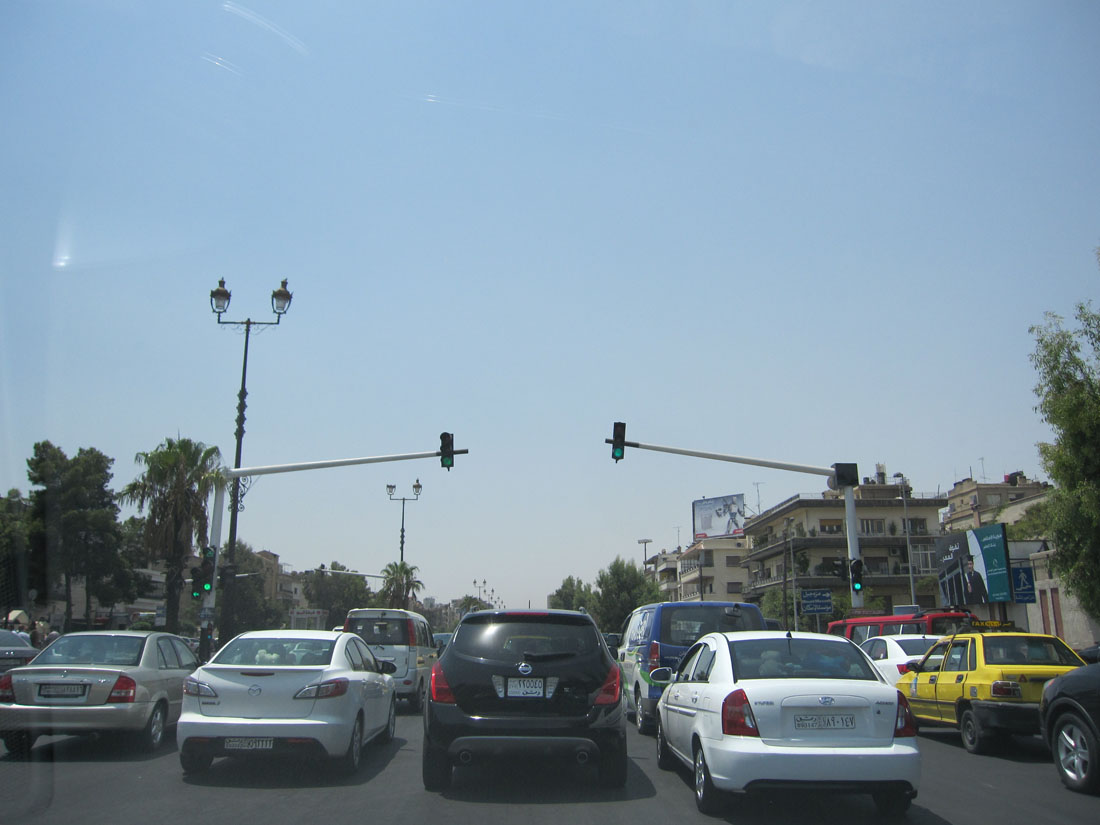
It is hard to find a shot and not to find a photo, banner or an ad with the country’s president Bashar al-Assad.
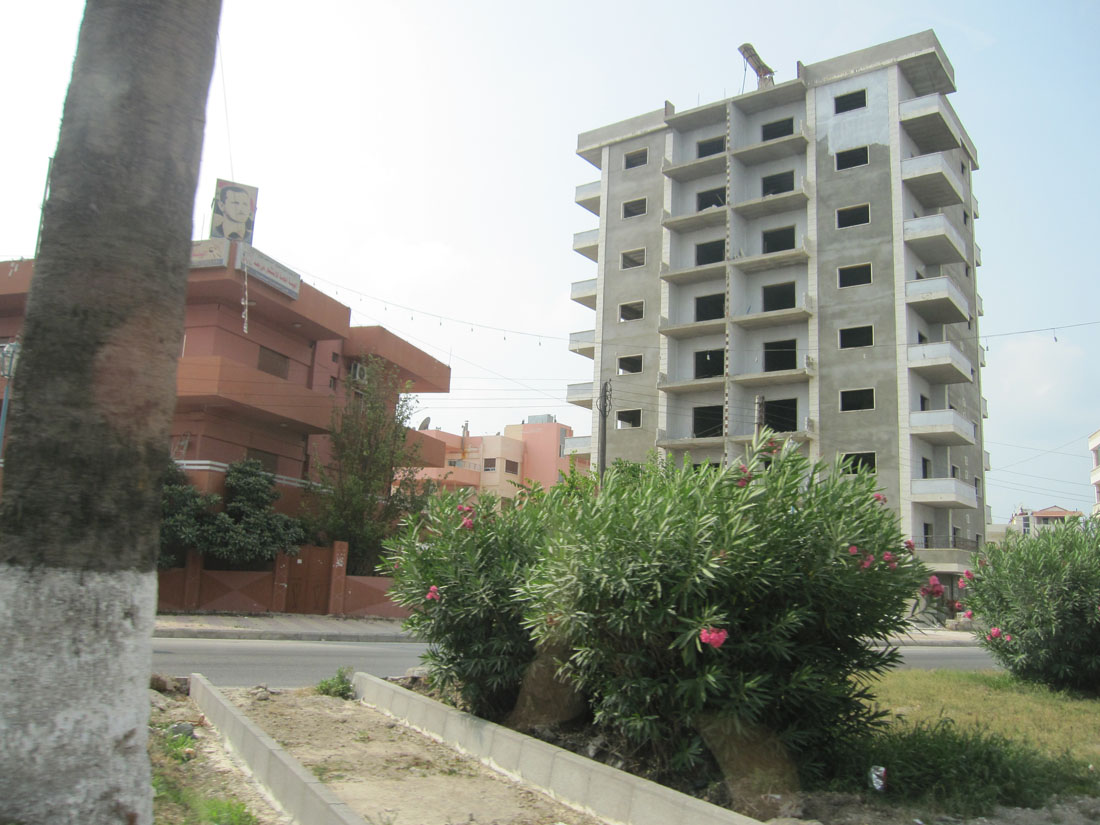
In this regard, Syria is a classic dictatorship with a quite strong cult of personality. Assad is everywhere.
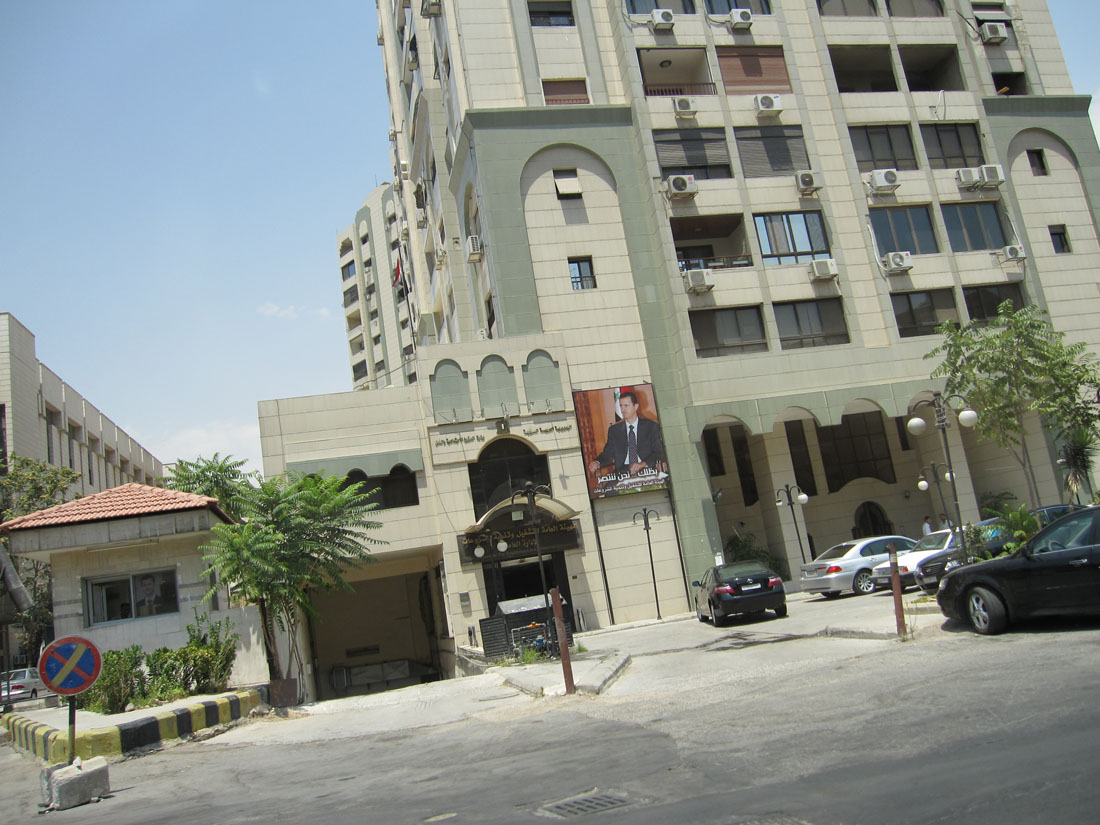
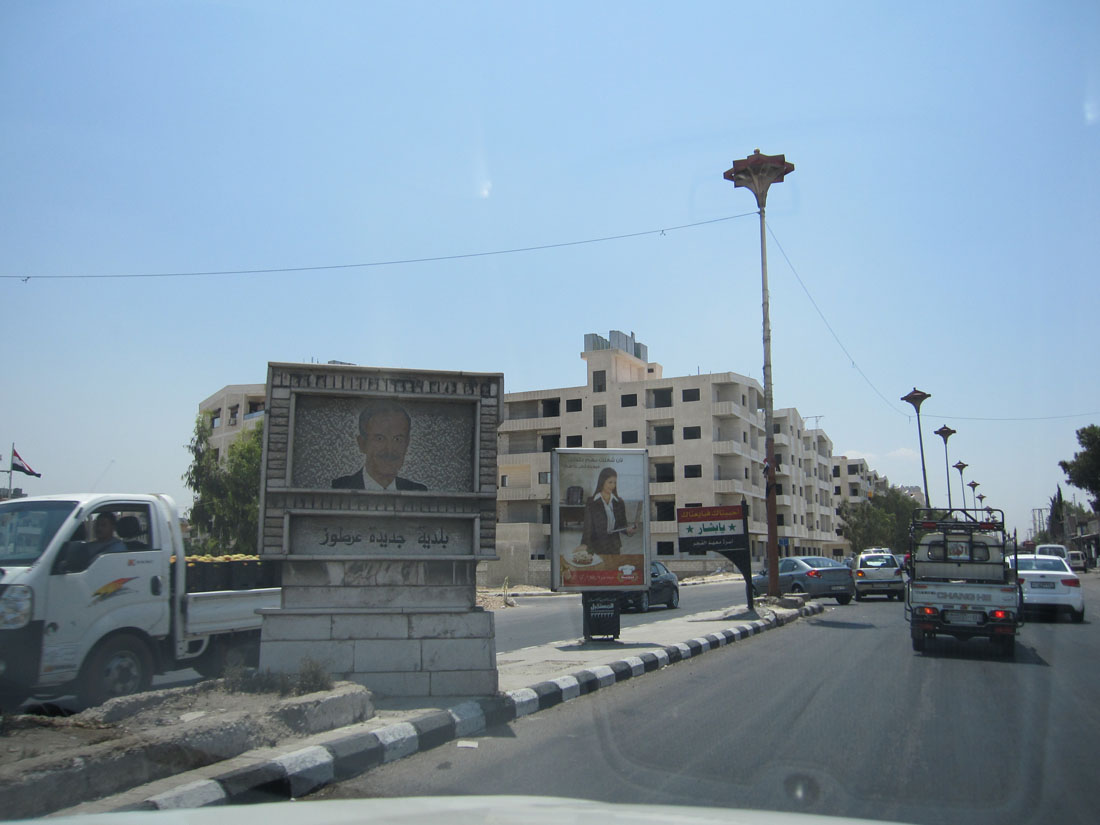
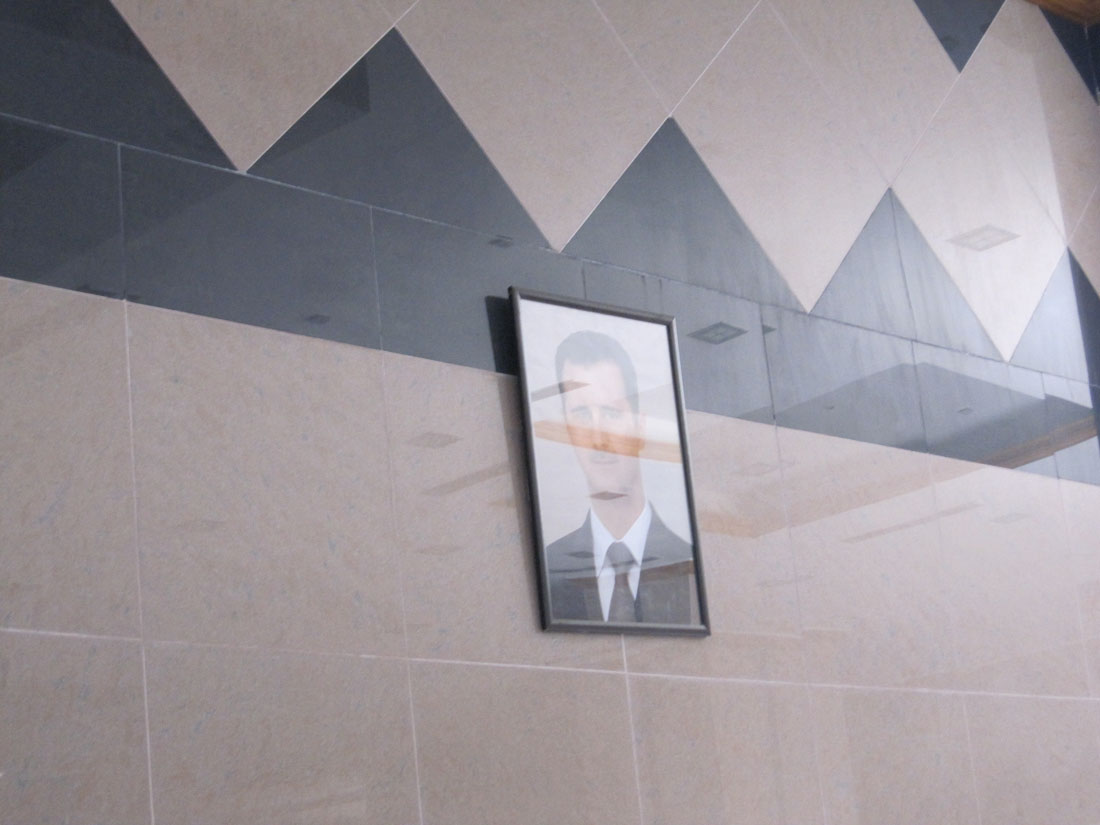
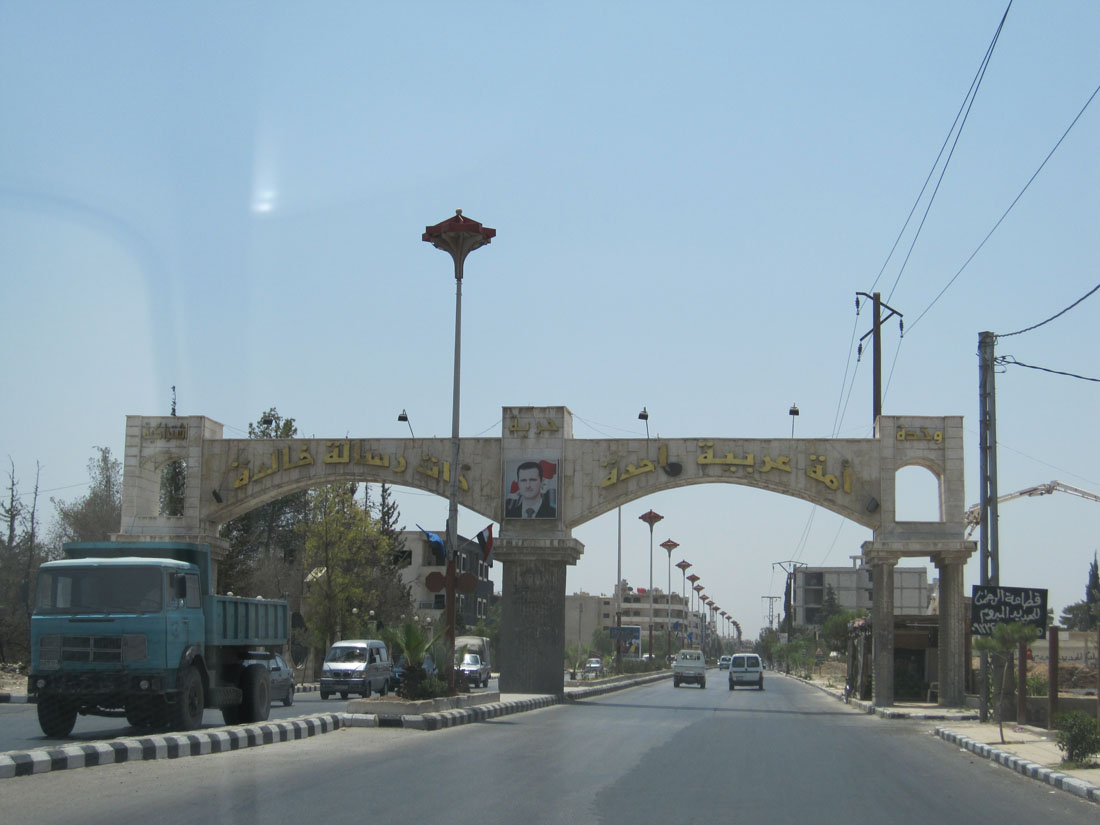
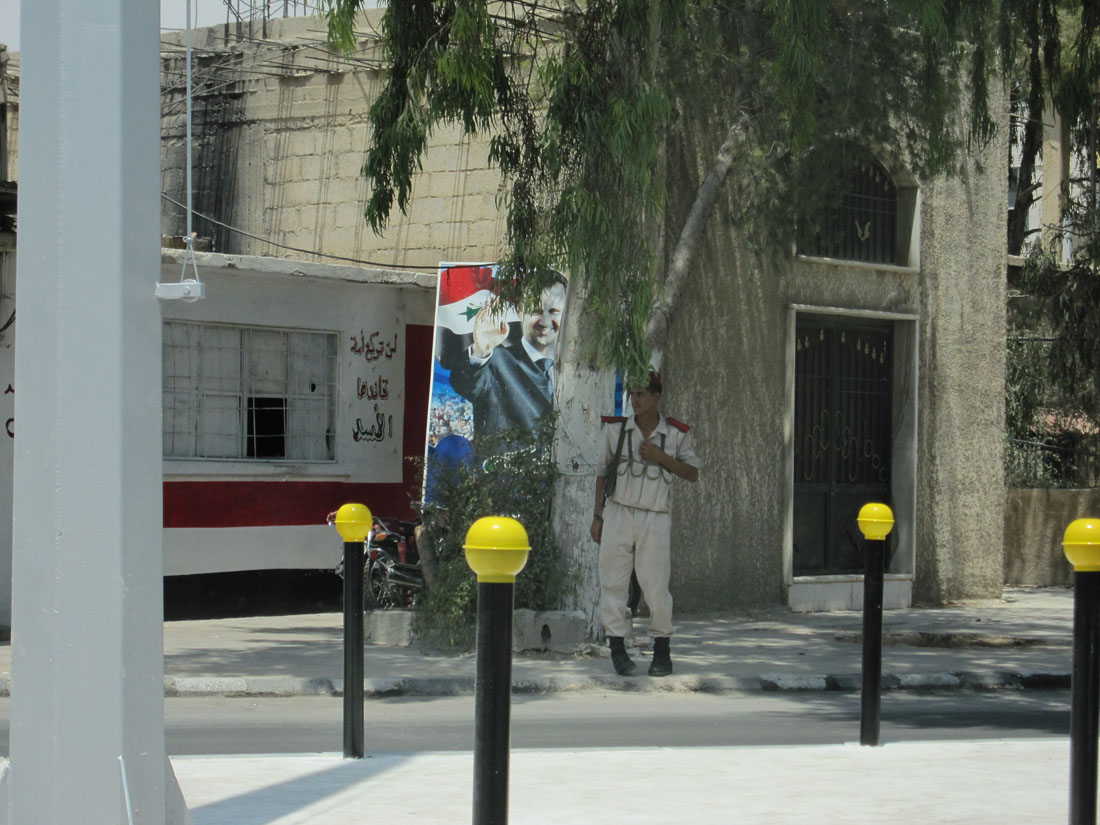
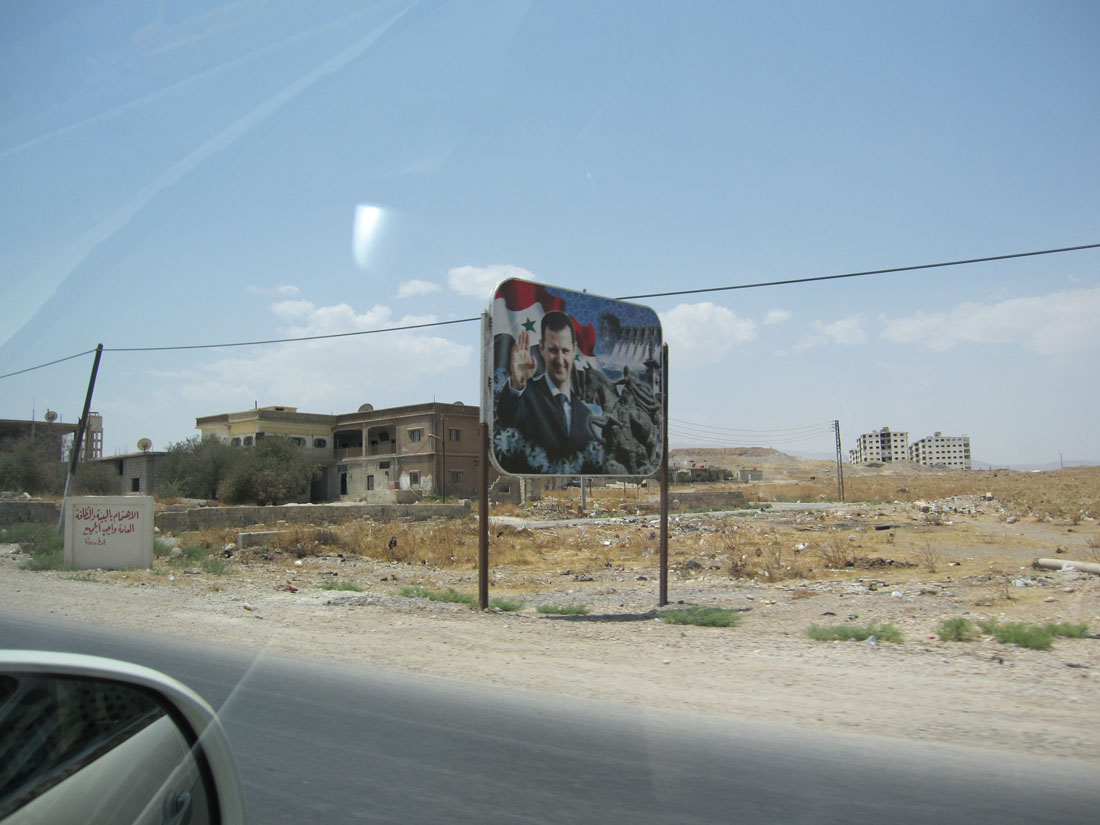
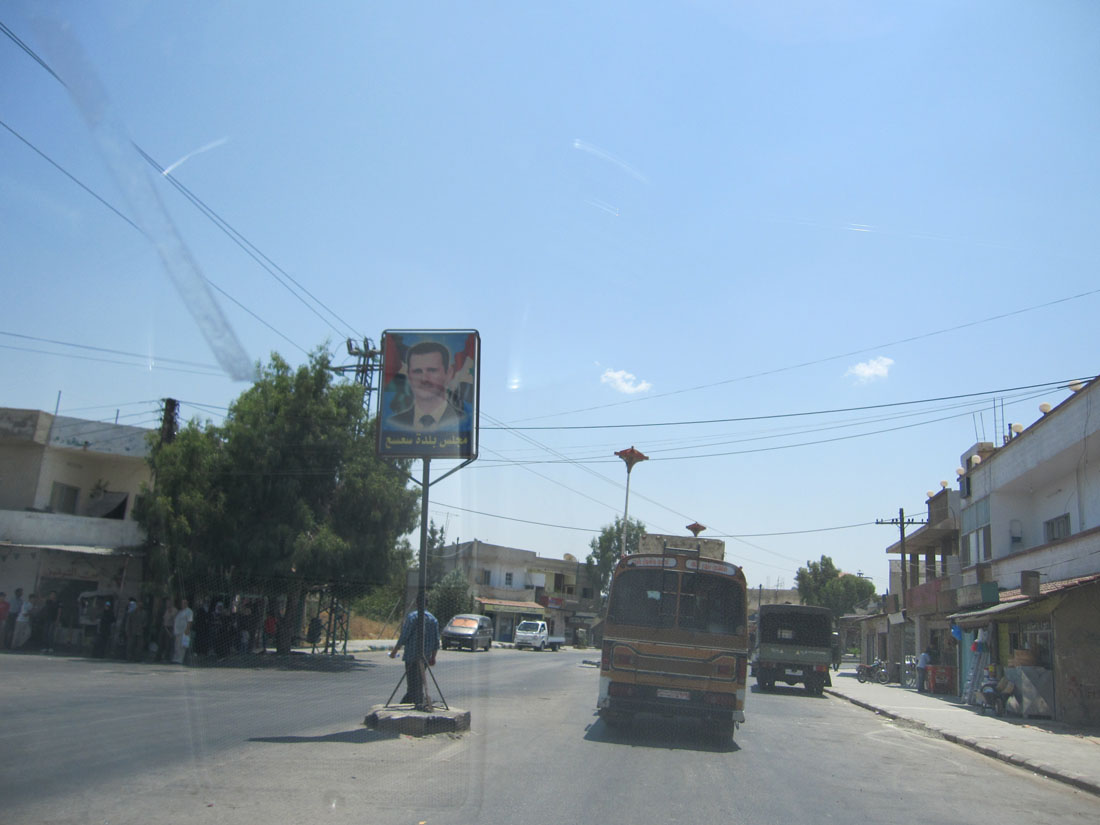
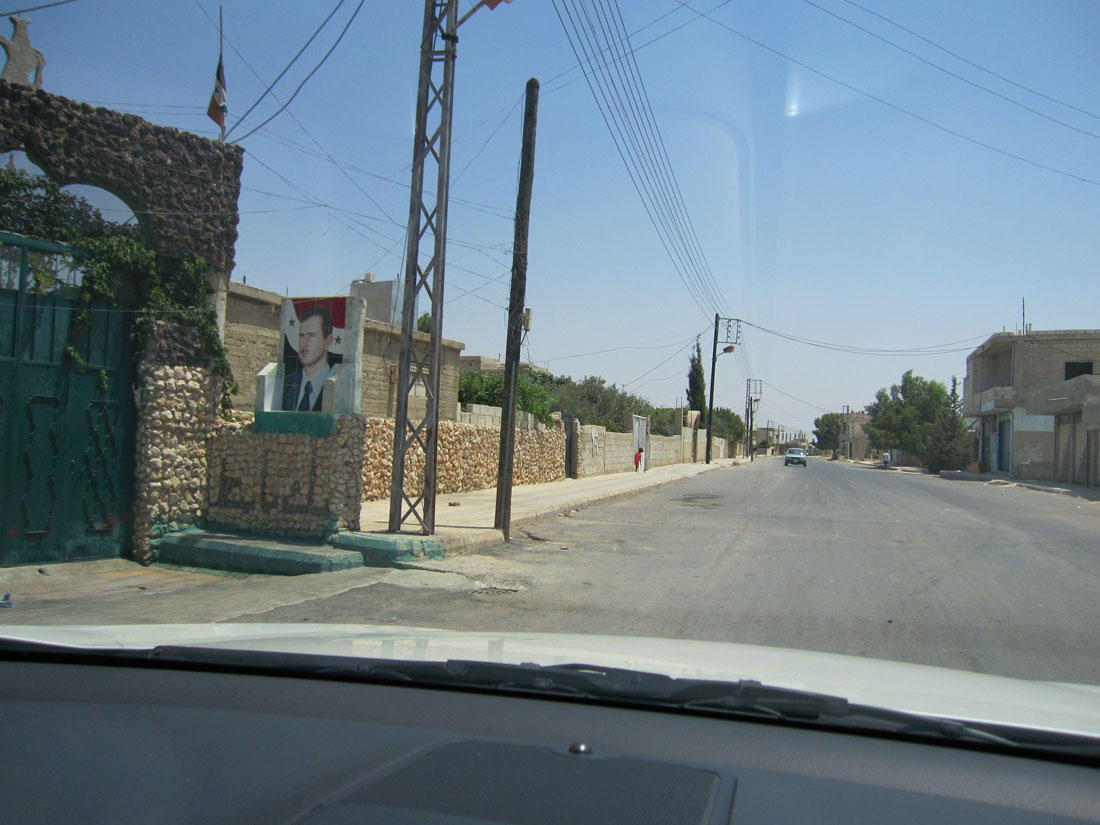
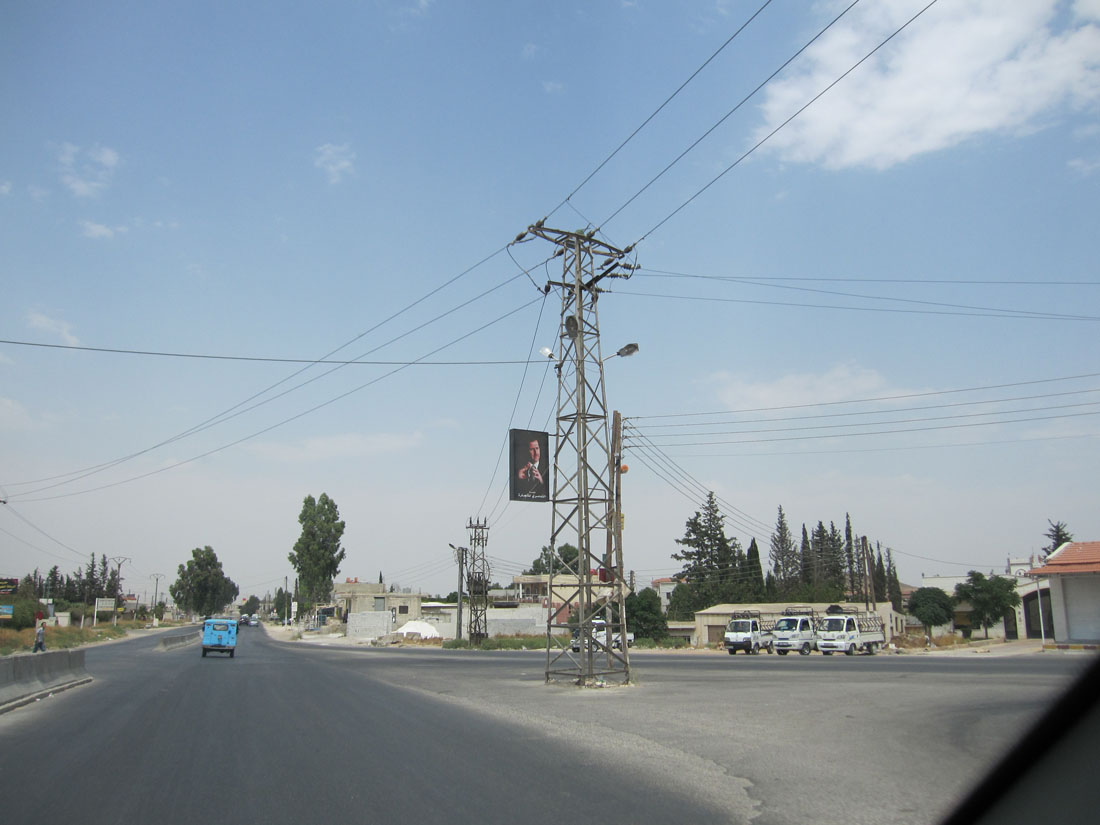
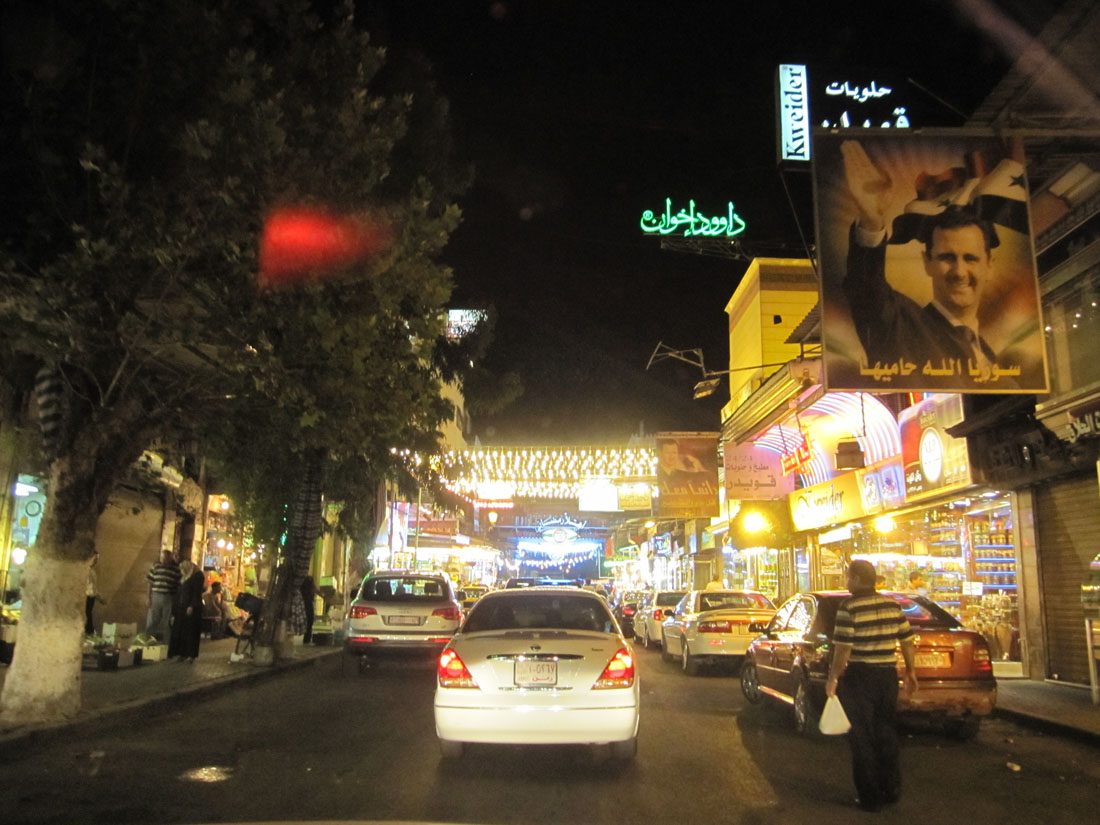
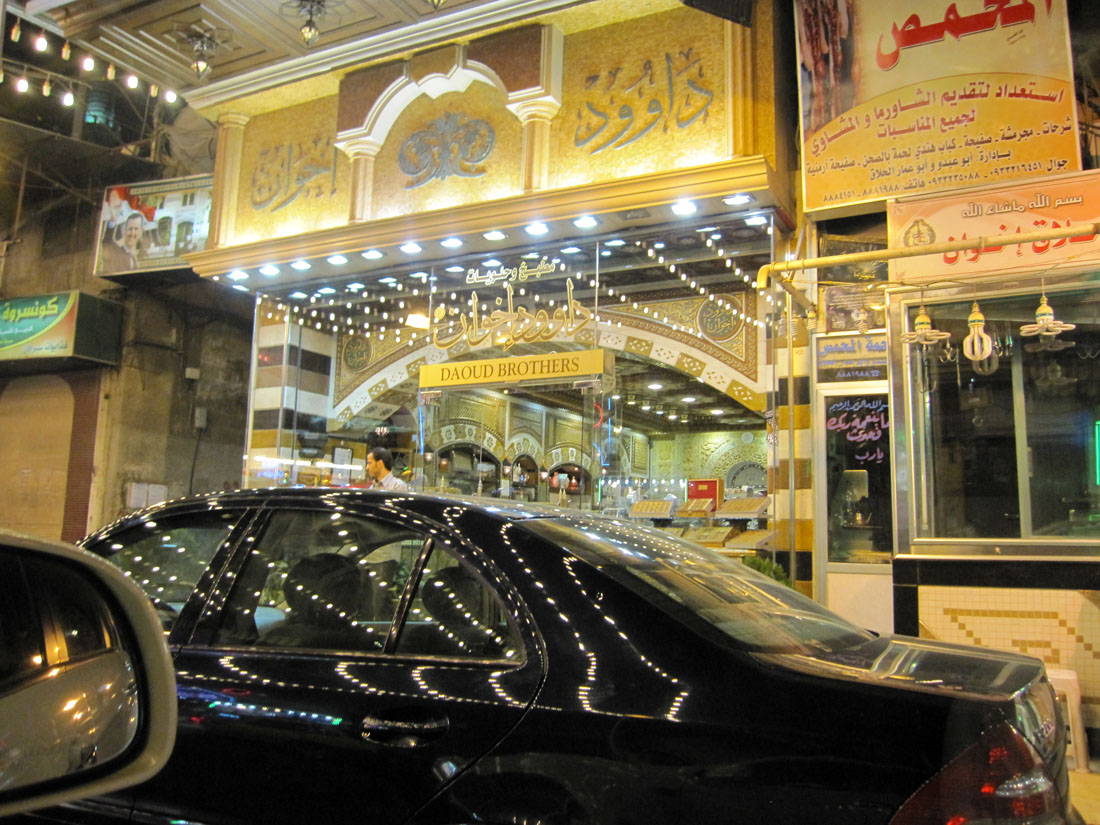
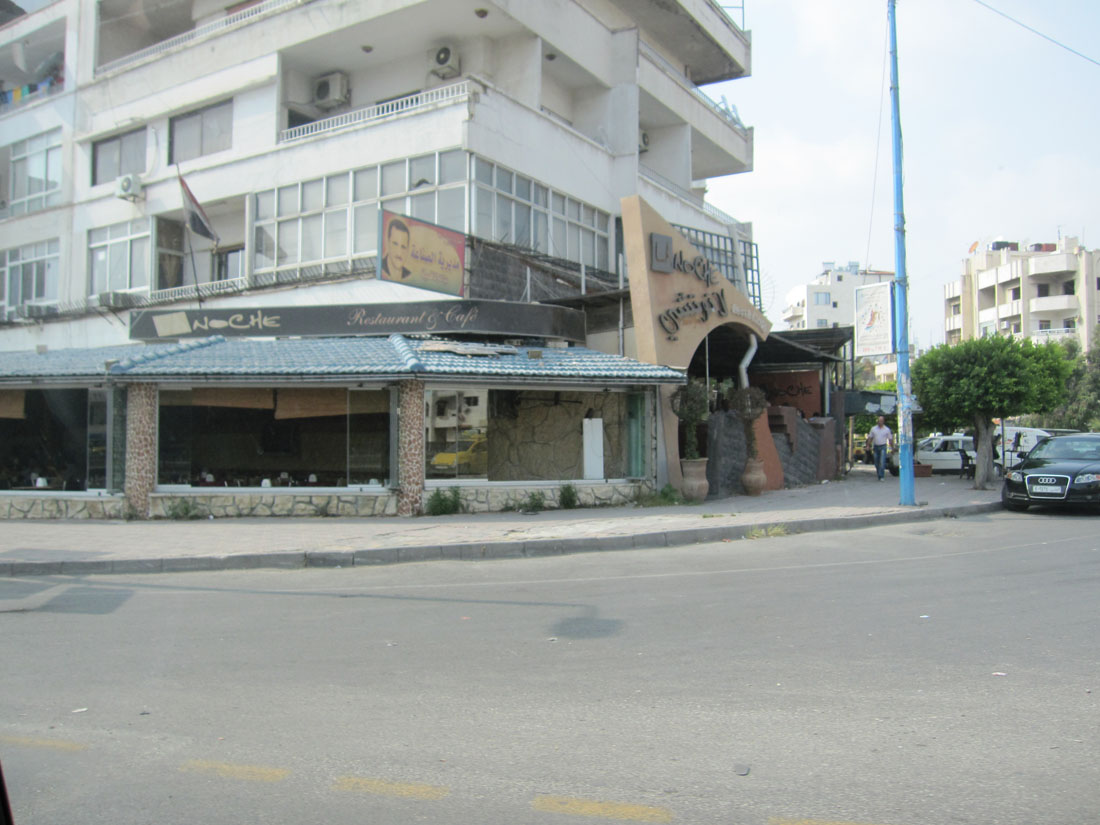
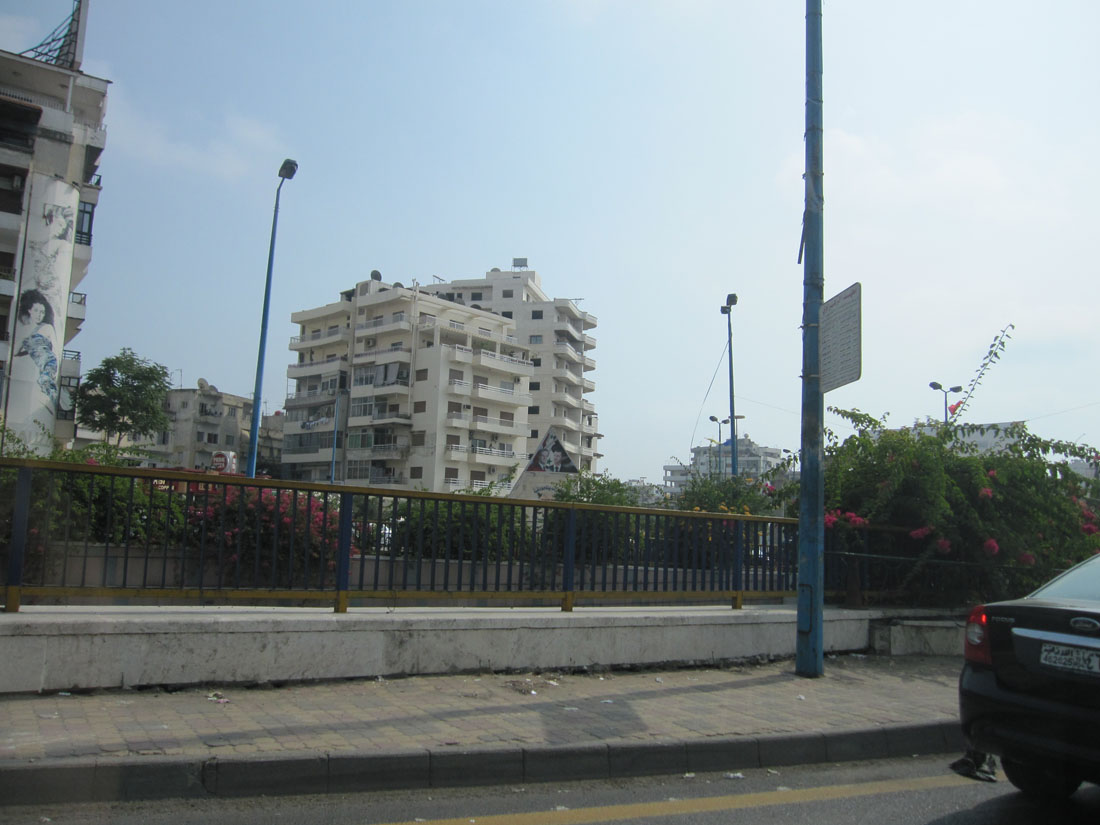
It is seen that everything was done in a slipshod manner — the same collage printed and distributed all over the country. An obligatory order from the above which can be executed anyhow.
Disputes about the legitimacy of Assad and questions like “Is he really a dictator?” can only be heard from Russia and similar friendly regimes with state propaganda.
Bashar al-Assad is the president of Syria since 2000. He inherited his power from his father, who ruled from 1971 until his death in 2000. Forty-six years one family is in power. What kind of legitimacy is this? The official name of the country has no mentions of the monarchy.
Not sure whom the monuments are dedicated to, but keeping in mind the Soviet styling we can assume that these are the brave fighters against the oppressors and they are the “liberators of the people”.

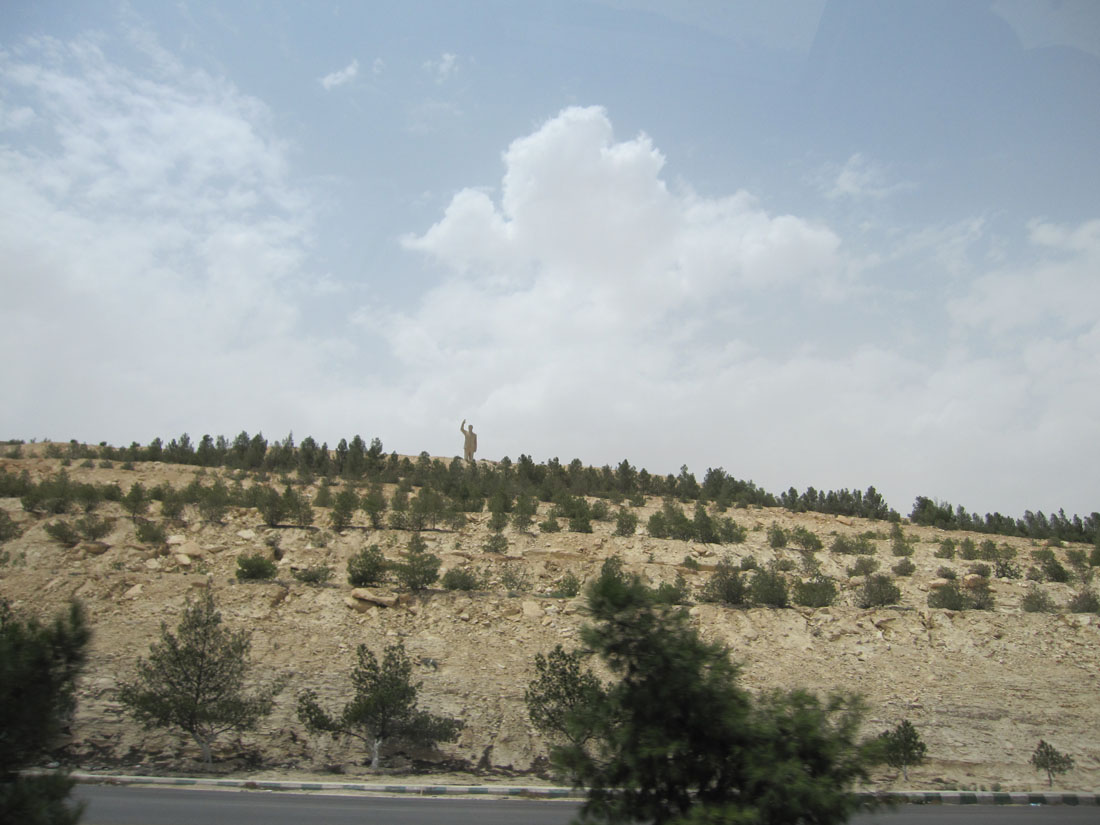
Syria has all the informal features by which one can quite accurately determine that there is a dictatorship (or authoritarianism) in a country. In total there are three of them. The first sign: the country has no proper pedestrian crosswalks (zebras) and uses footbridges or pedestrian tunnels.
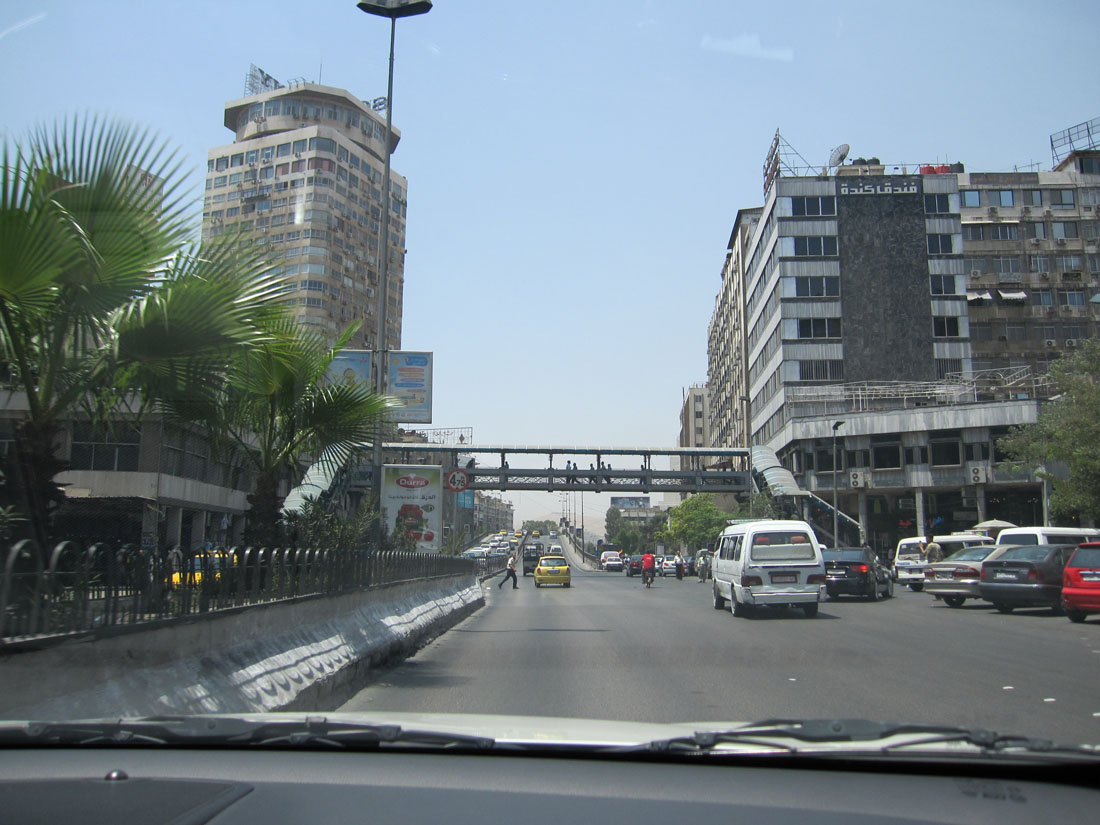
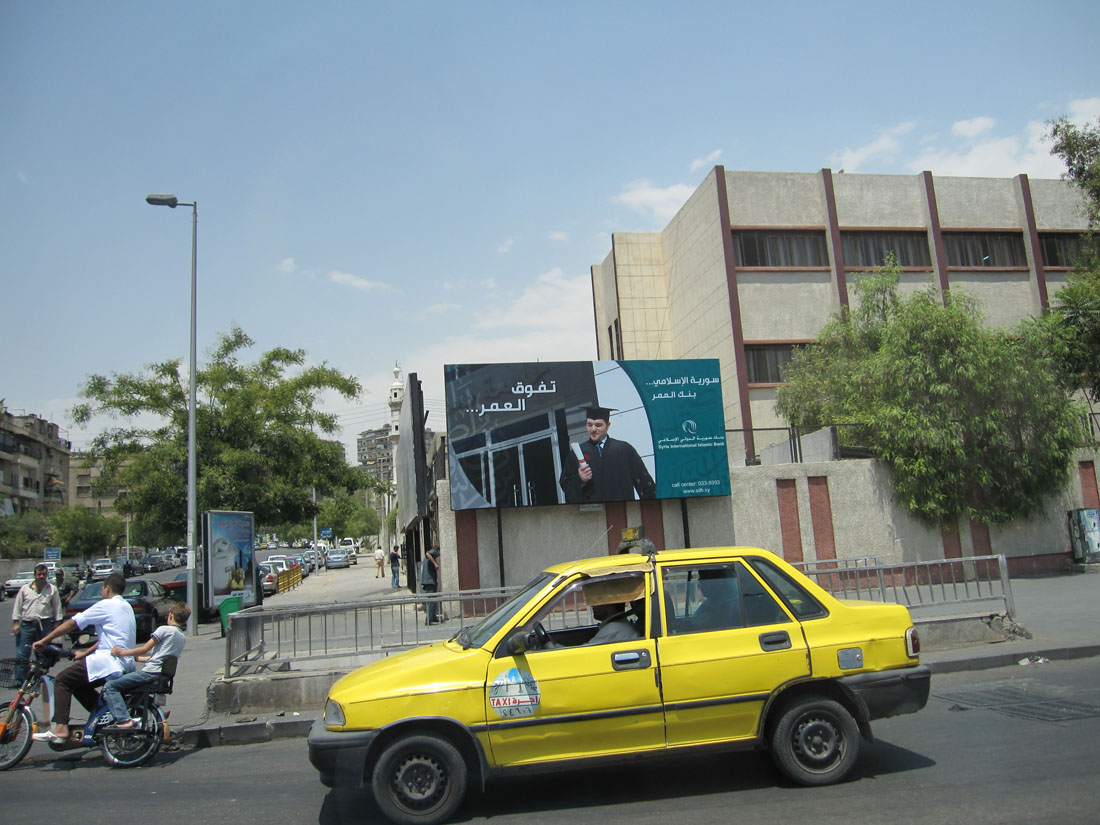
The second sign: the desire to paint the curb (especially in two colors).
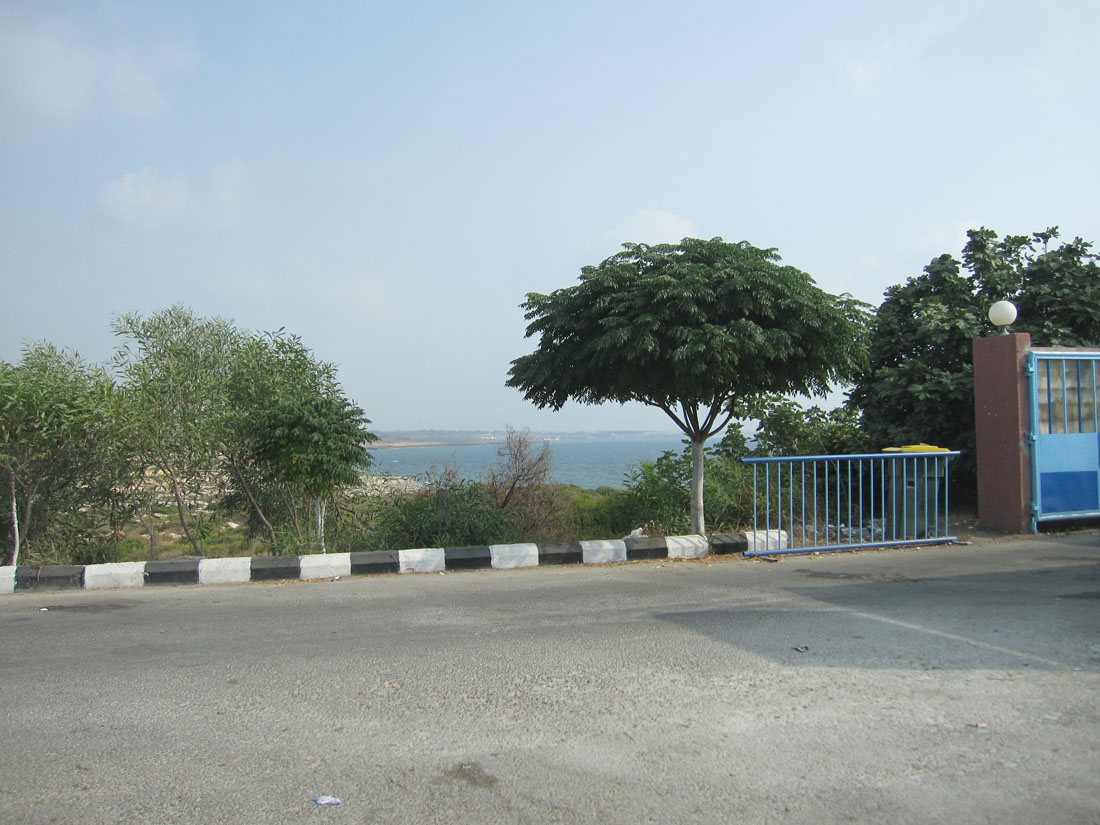
The third sign is the maniacal desire to paint the trees in white.
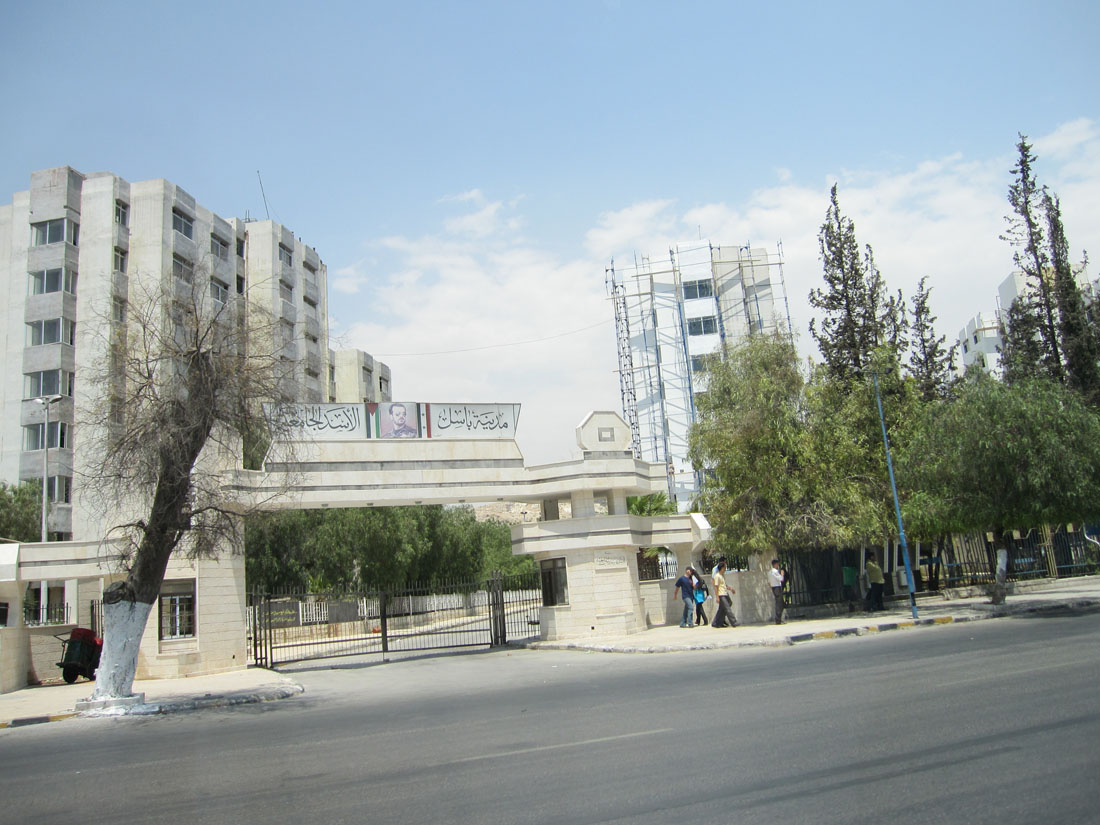
The presence of one, two, or even a combination of these three signs makes the country almost 100 % undemocratic. Don’t believe me? This the Pinsk, Belarus, where Lukashenka reigns for 23 years:
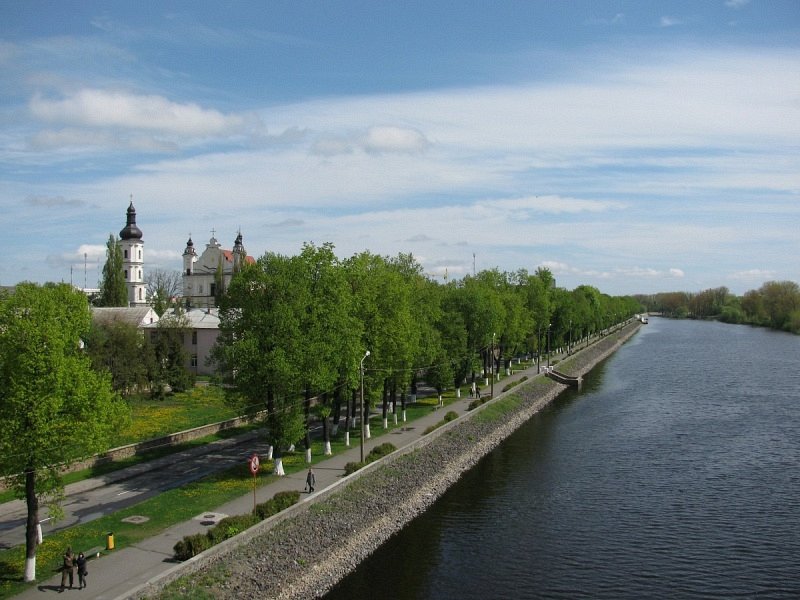
This is the capital of DPRK:
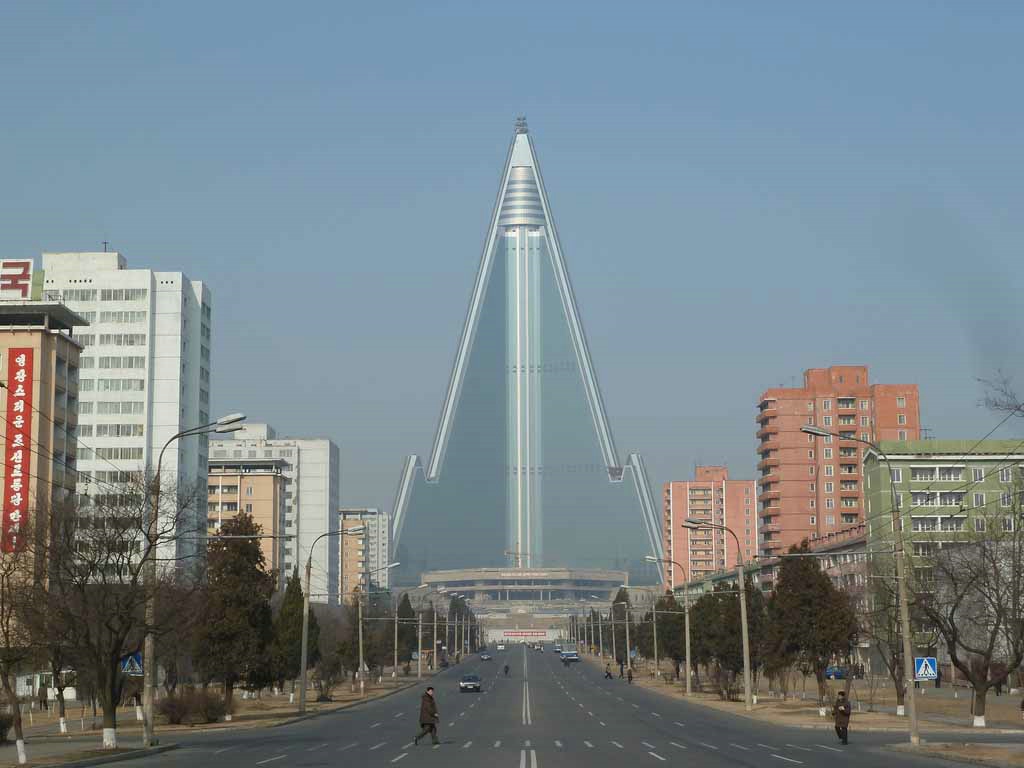
And here’s a pedestrian that uses a pedestrian tunnel, although all roads in North Korea are empty:
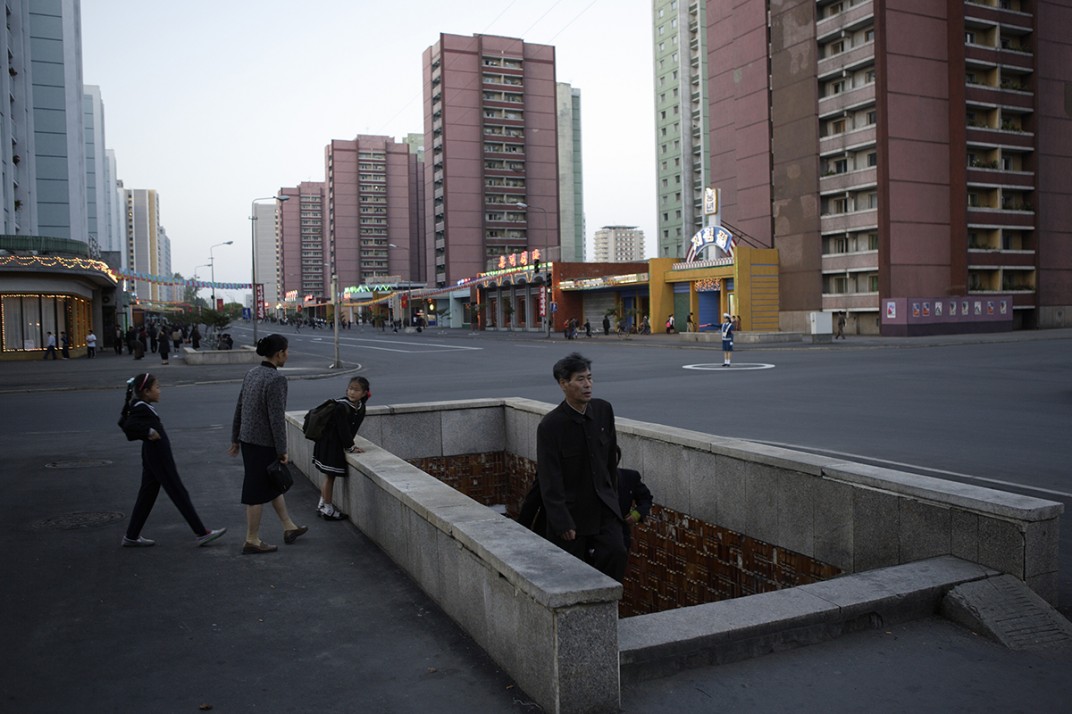
The reader may notice that Syria (and the North Korea) has resources to paint the trees and the curbs and has no paint for the marking on the road.
In Russia, by the way, officials prefer to paint the curbs and the countless number of fences and barriers.

And all this despite the decree of the Moscow mayor which states that curbs should not be painted and the fences can only be painted black. However, local officials operate by their own “laws” and they just changed the palette from a yellow-green to a white-green and continued operating in the same mode.
There is something totalitarian and dumb in this persistence to paint all trees, curbs and force everyone to use the ugly footbridges or tunnels. But, of course, certain logic can be found in this. First of all, a large number of dictatorships take the example of the USSR and does not change many construction laws and standards since these times. It is also the easiest way to show that “something was done” — brightly painted trees and curbs on photos and reports are good indicators that “much work regarding the improvement of the area has been performed”.
And last but not least it is an opportunity for the corrupt officials and their affiliated companies to steal money from the state. Write down the recipe: (a) purchase the cheapest paint, (b) hire the cheapest workers, (c) make them paint everything, (d) take photos, (e) and write a report on the performed work. The result is a huge amount of money that you share with your paint supplier and other interested parties. The paint comes off in one season and you can repeat the procedure.
The situation is similar with the erection of footbridges and pedestrian tunnels, only it is done under the pretext of “safety” and “road traffic optimization”. The construction of such facilities and their maintenance require enormous funding which is only to the benefit of the corrupt officials.
In democratic countries, the state is accountable to the population regarding its expenses and it is just unacceptable to waste a lot of resources every year on unnecessary activities.
Generally, if there are spots in Syria where it is (relatively) cozy and nice, these places are usually privately owned.
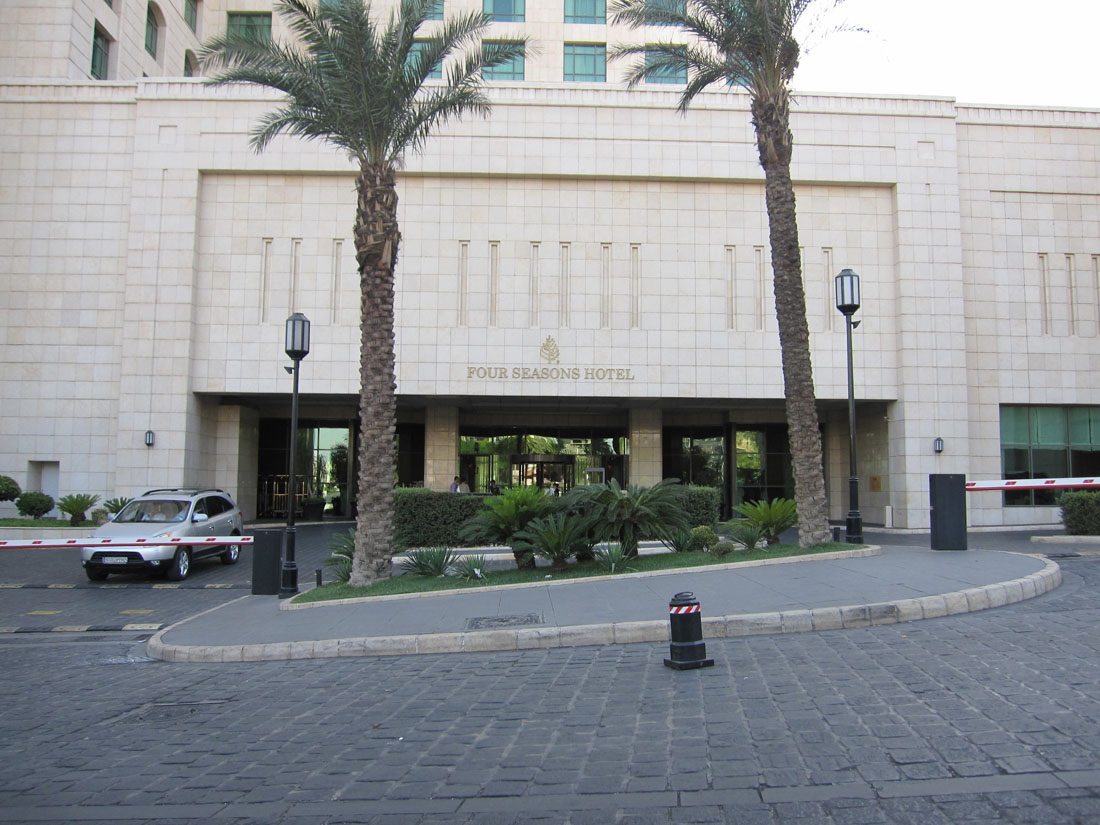
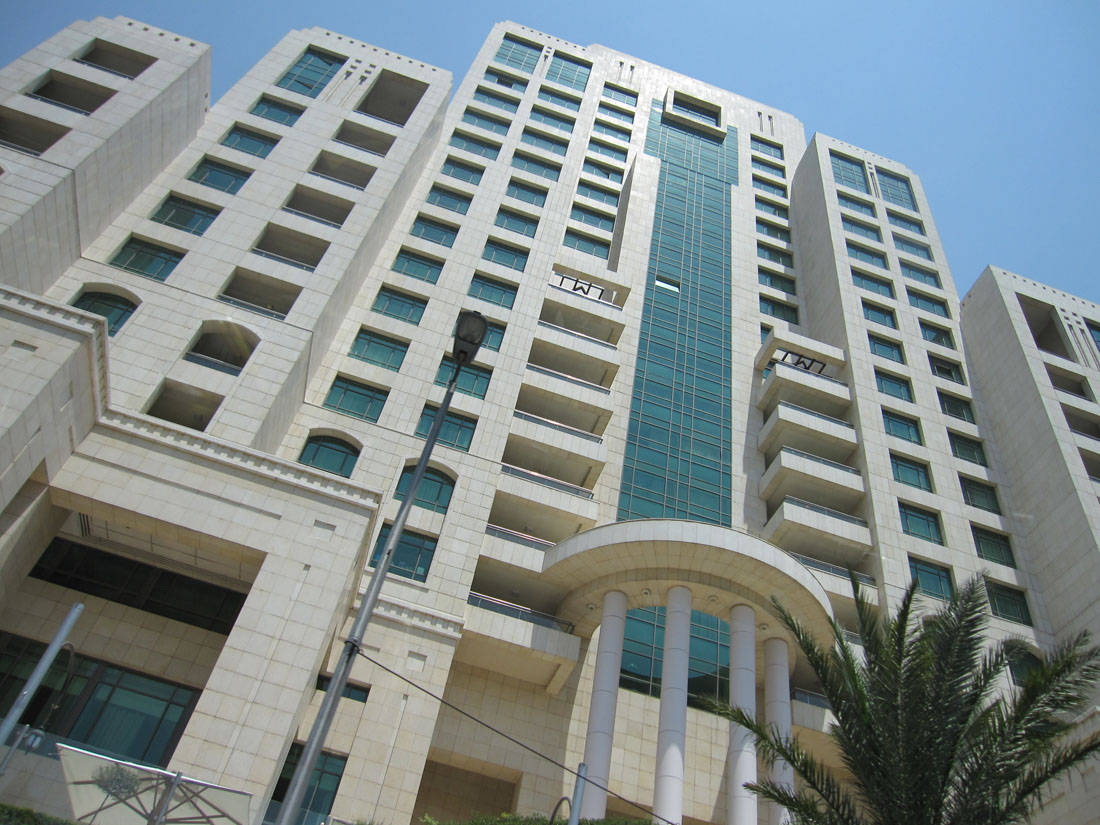
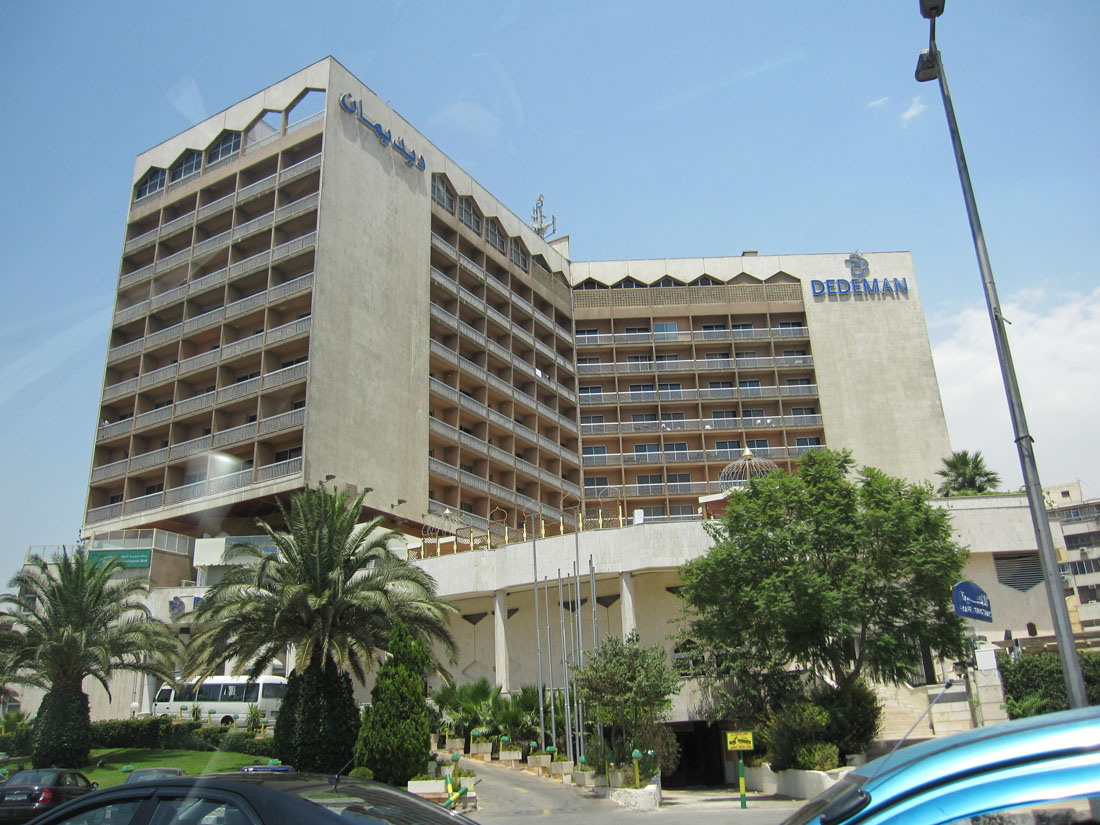
There is much less enthusiasm on these territories when it comes to painting the curbs and trees.
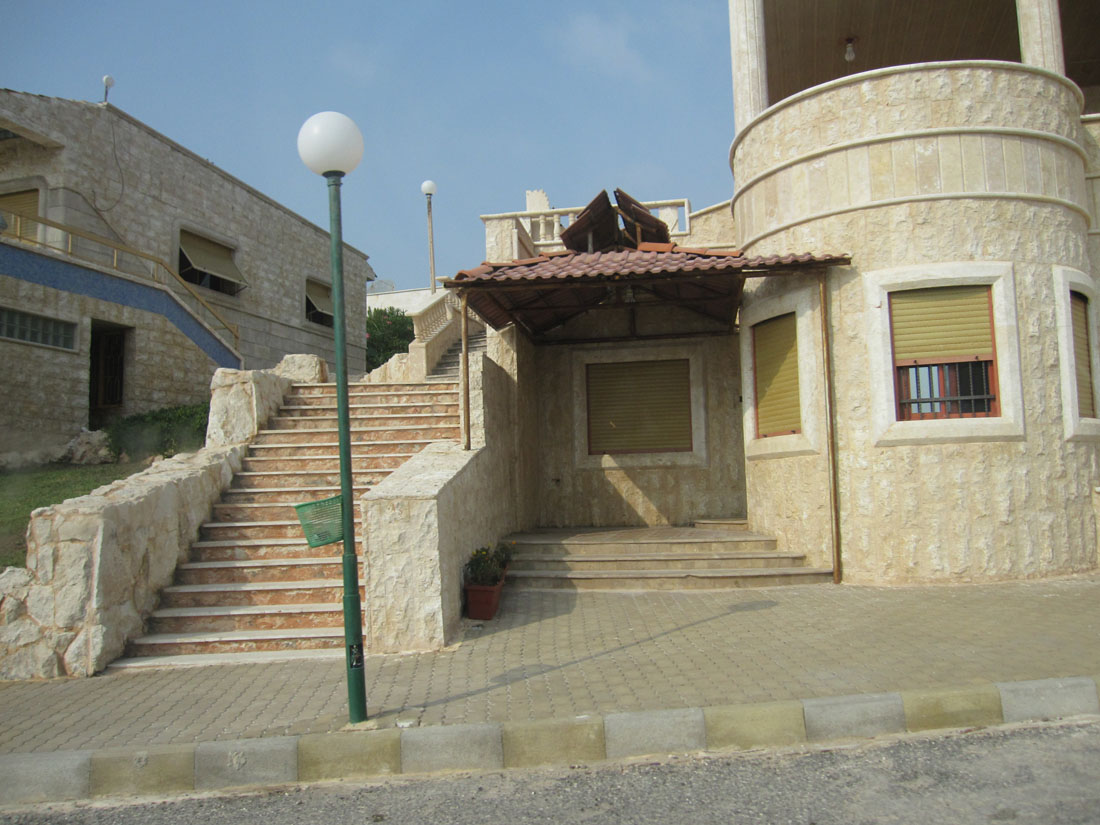
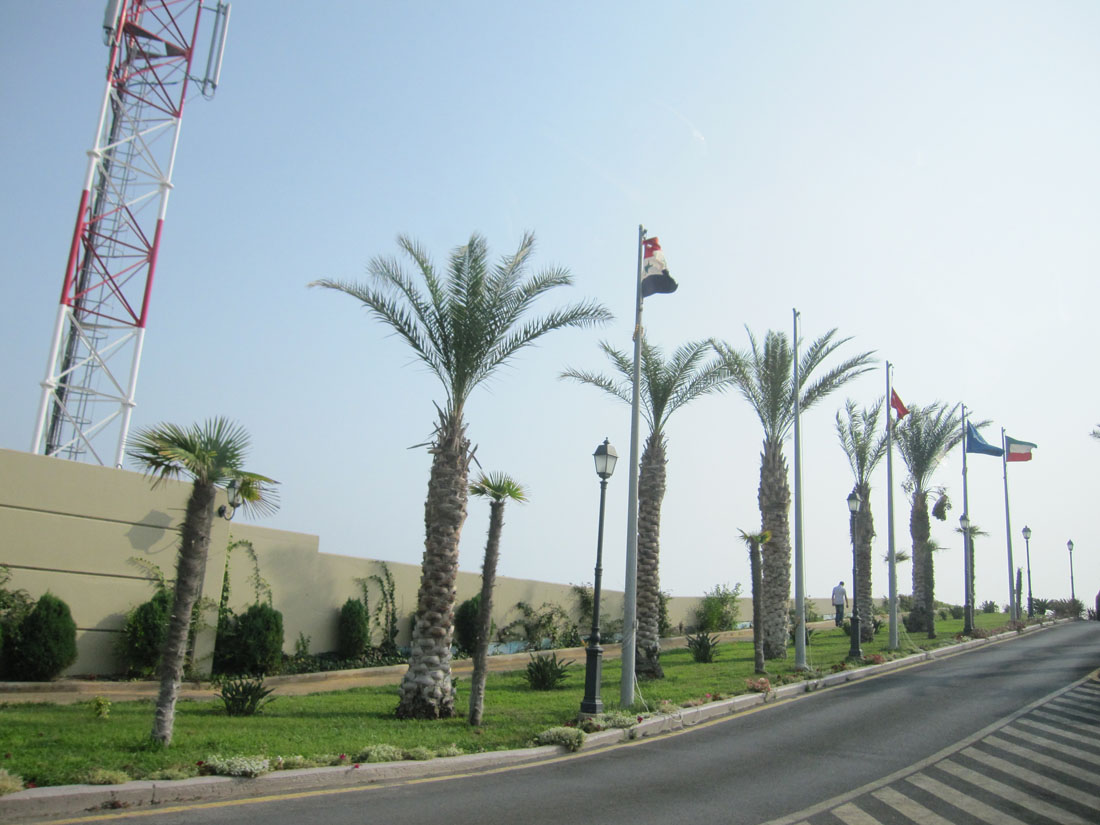
Some spots even look like a fairy tale.
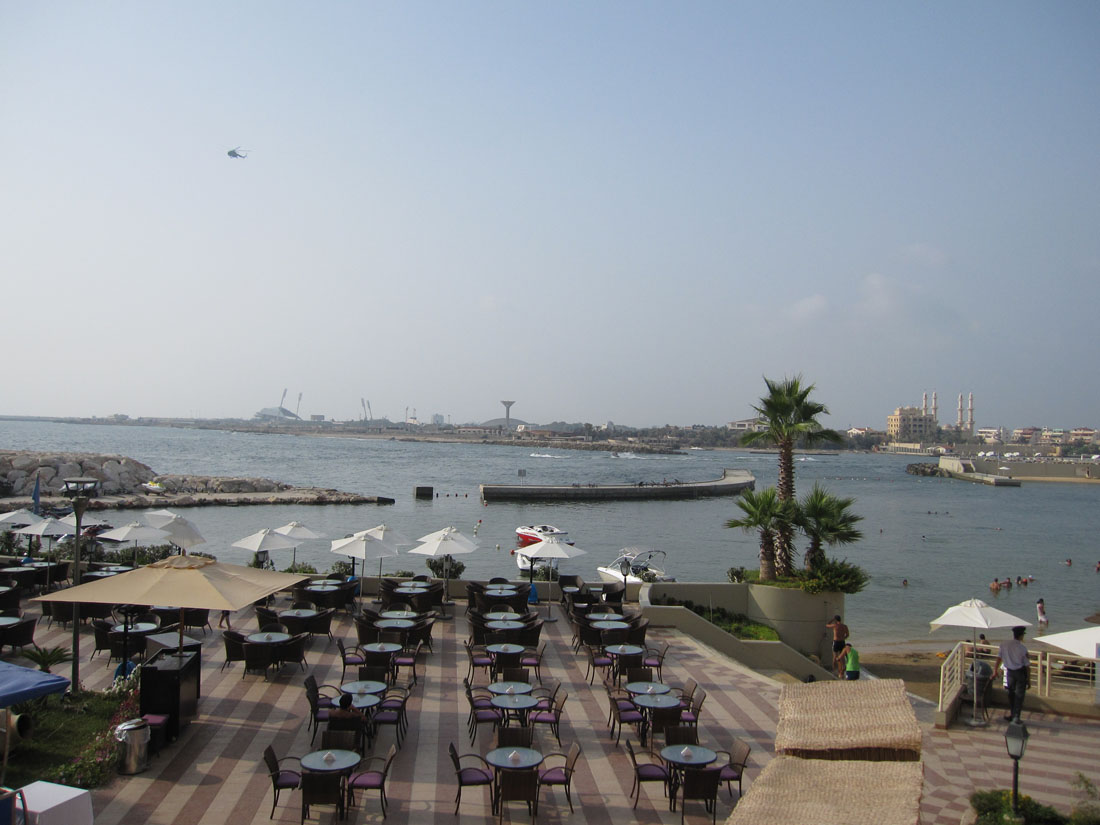

Although, of course, there is no modern architecture in Syria. Buildings resemble some primitive castles and other “wealthy-rich-VIP” forms. This is particularly evident in the trade:
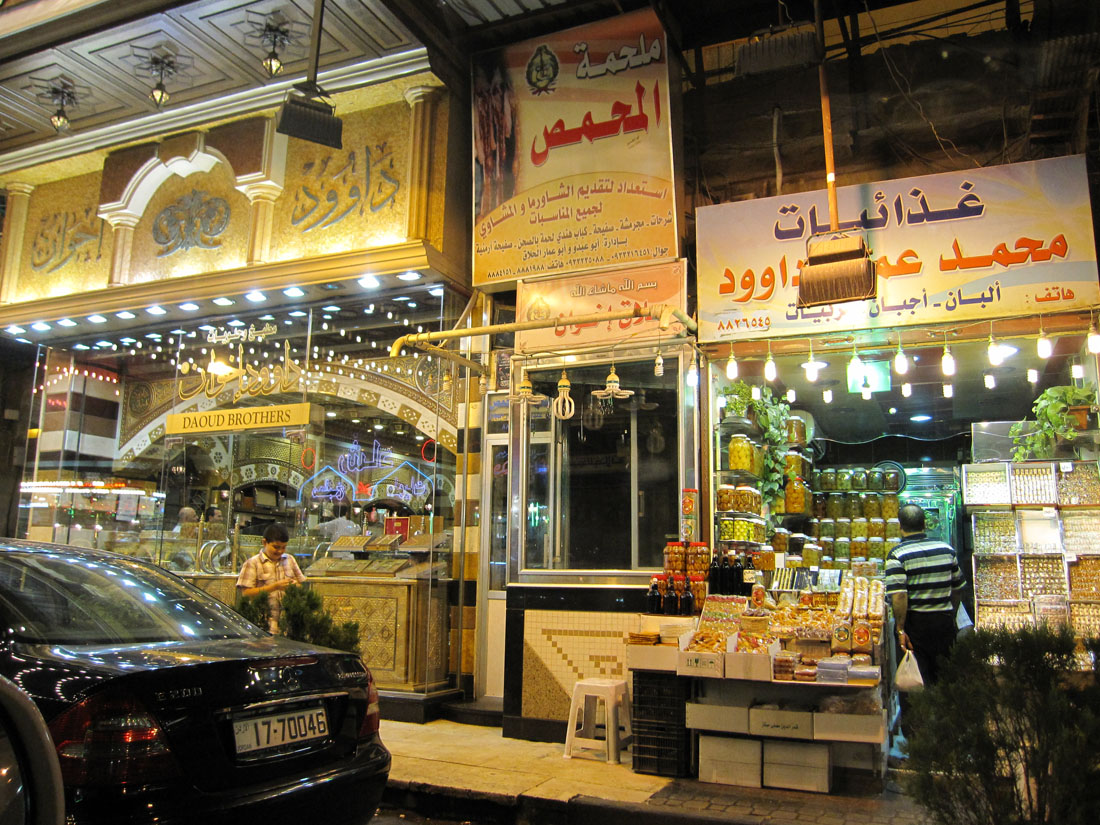
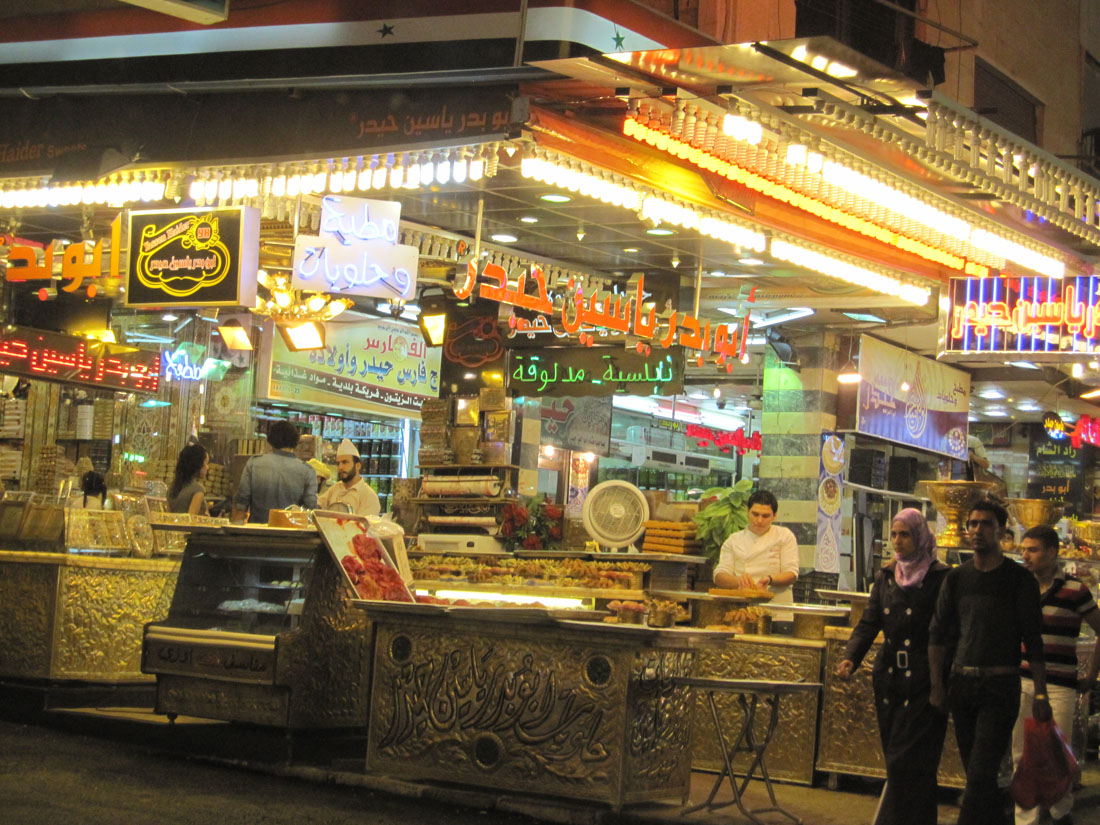
The shopping malls are similar to the ones in the Northern hemisphere:
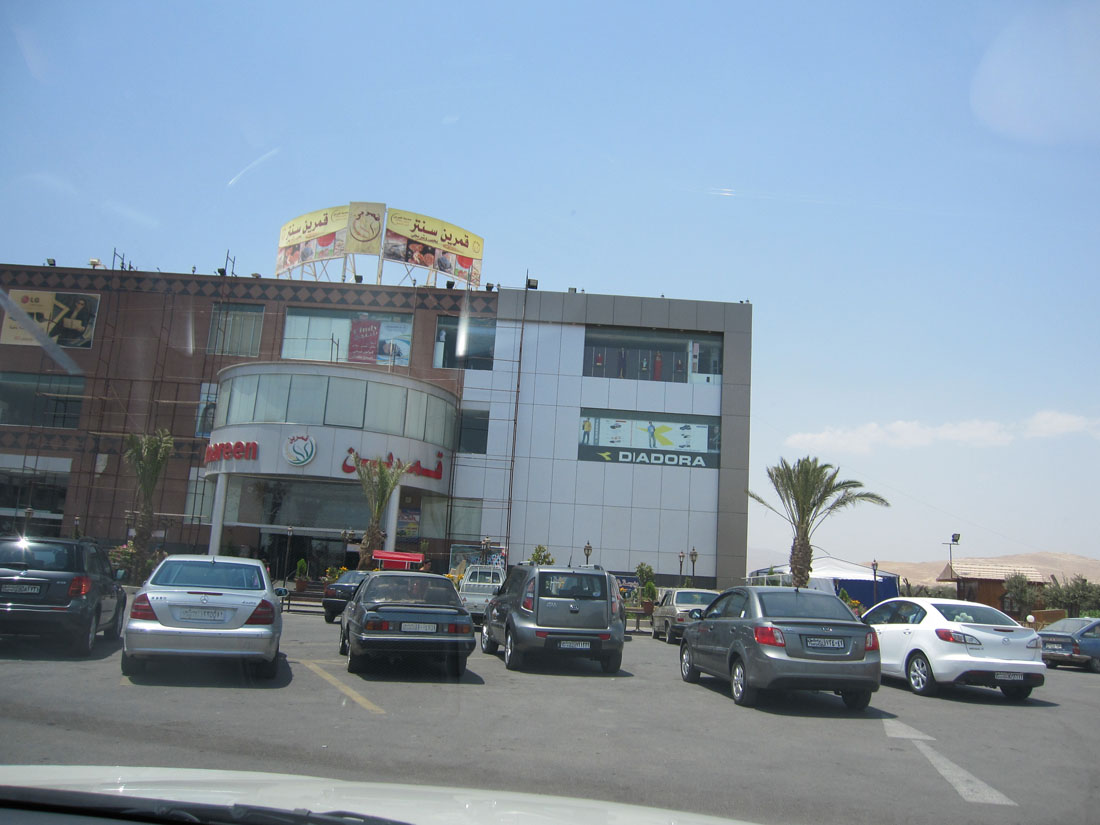

In fact, the Syrian society little differs from other societies. People work, create families, live. One can notice on the previous pictures a large number of new cars. There are European dealers in the suburbs of Damascus.


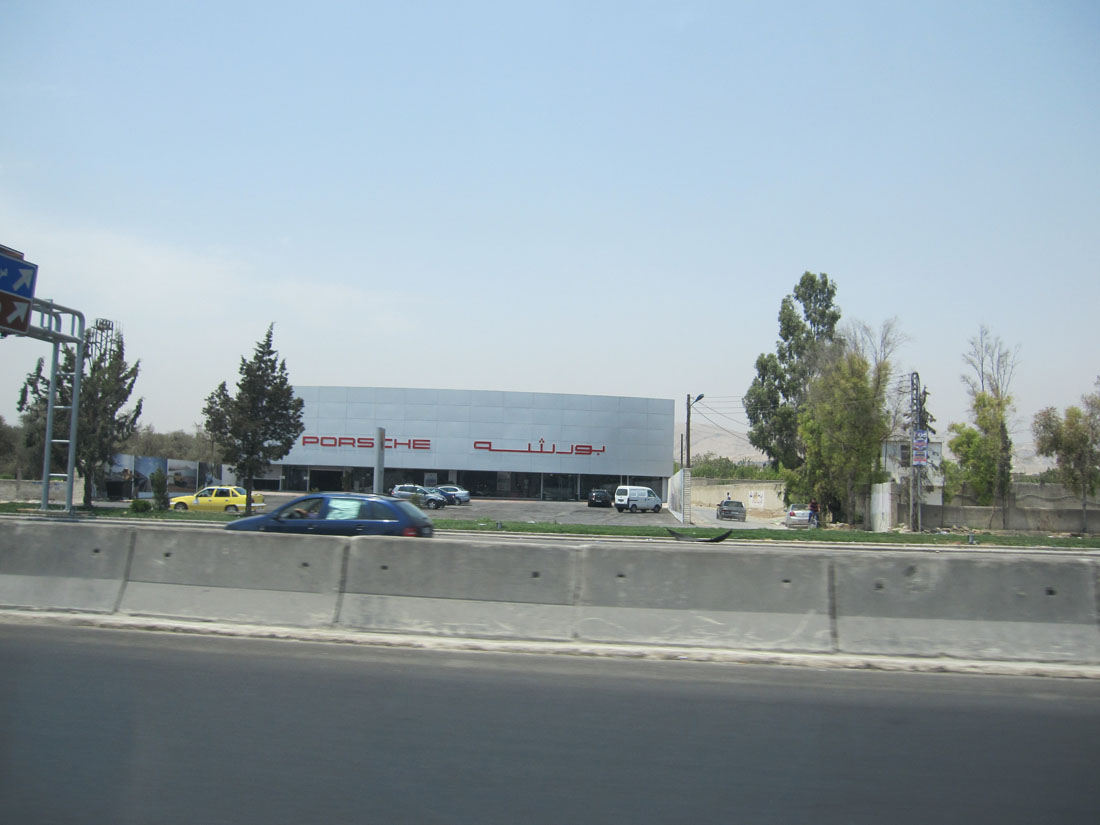
People watch American and European movies with Arabic subtitles.

And I think, in general, Syria is relatively close in its culture to its Northern neighbors.
No one is scared by a woman without a headscarf. Everyone coexists with each other and nothing horrible happens.

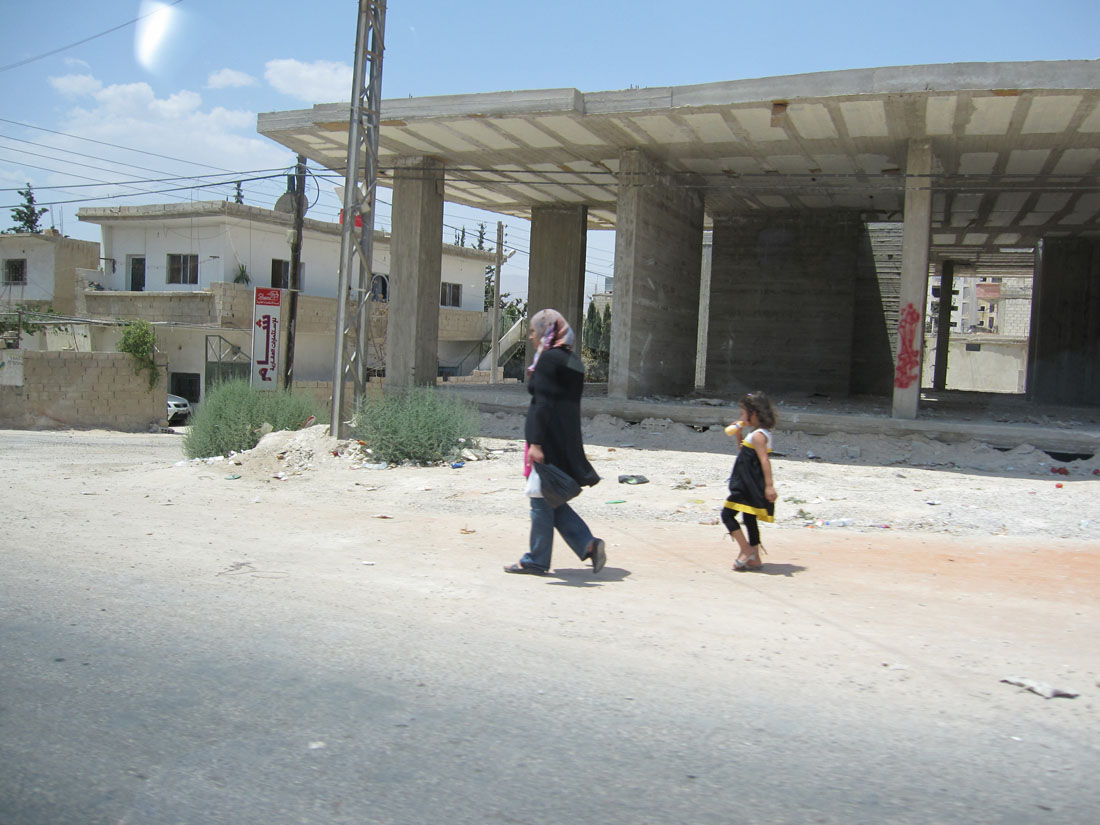
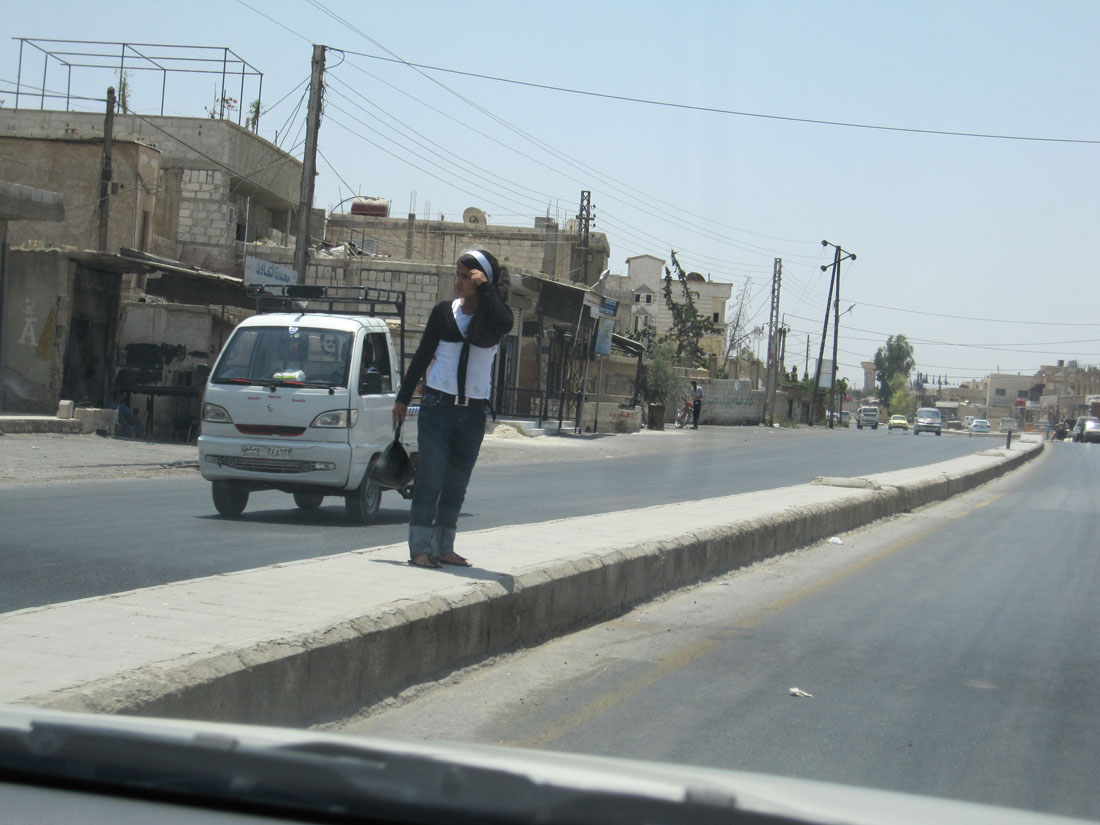

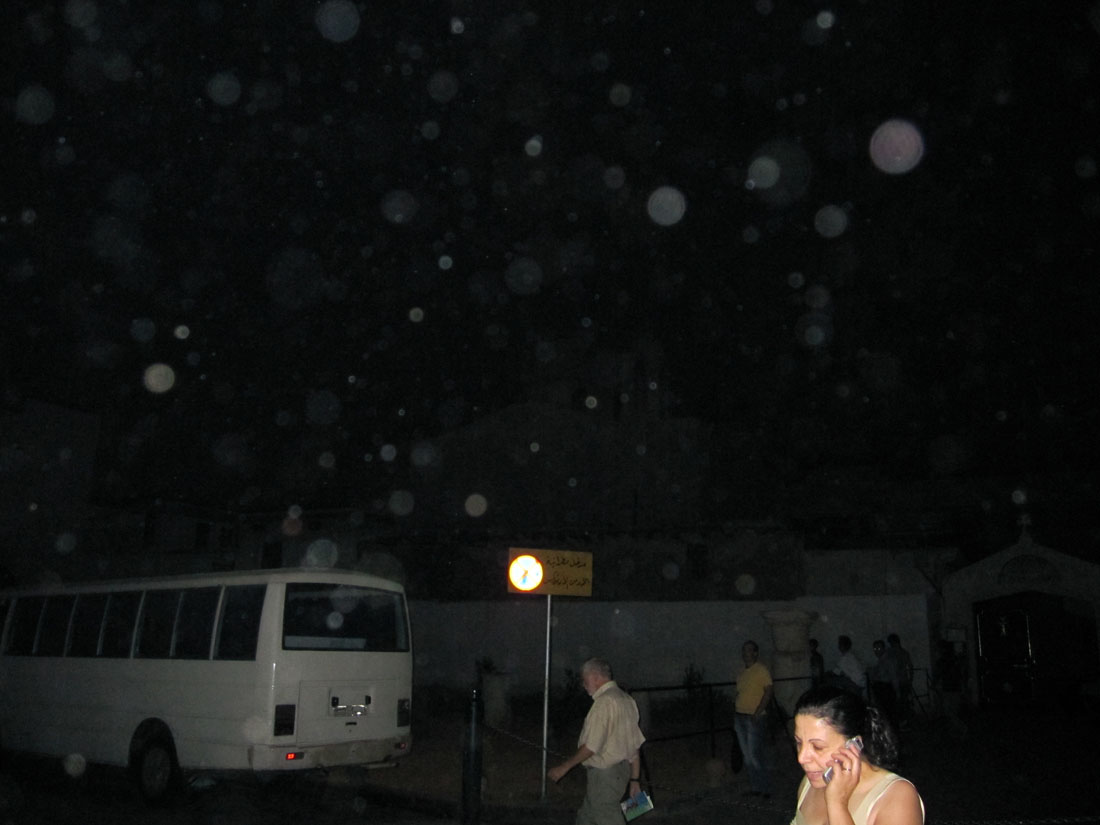
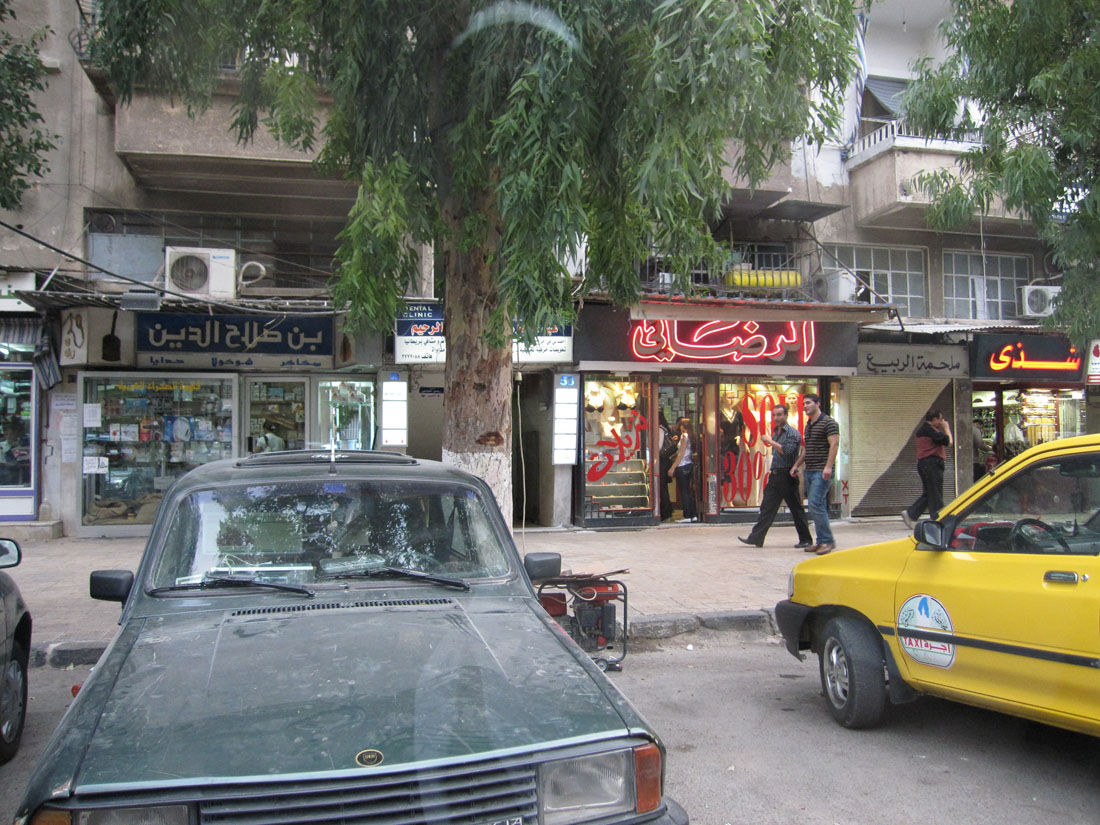
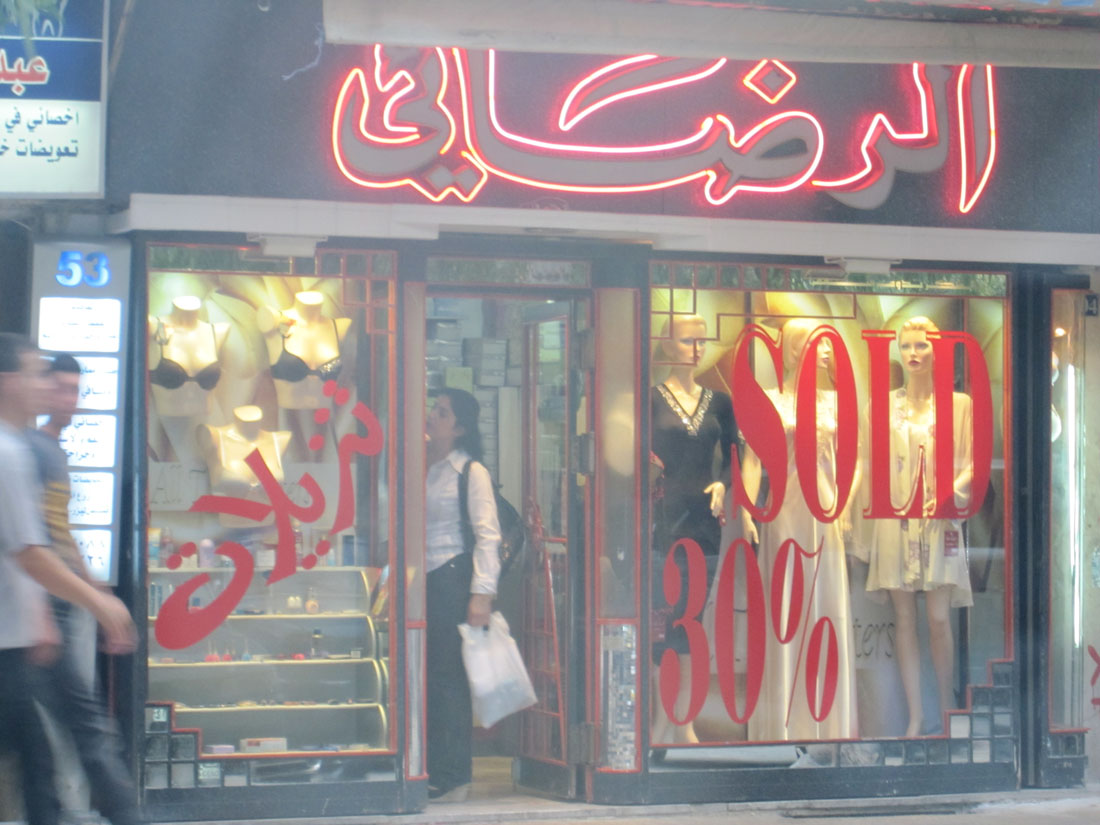
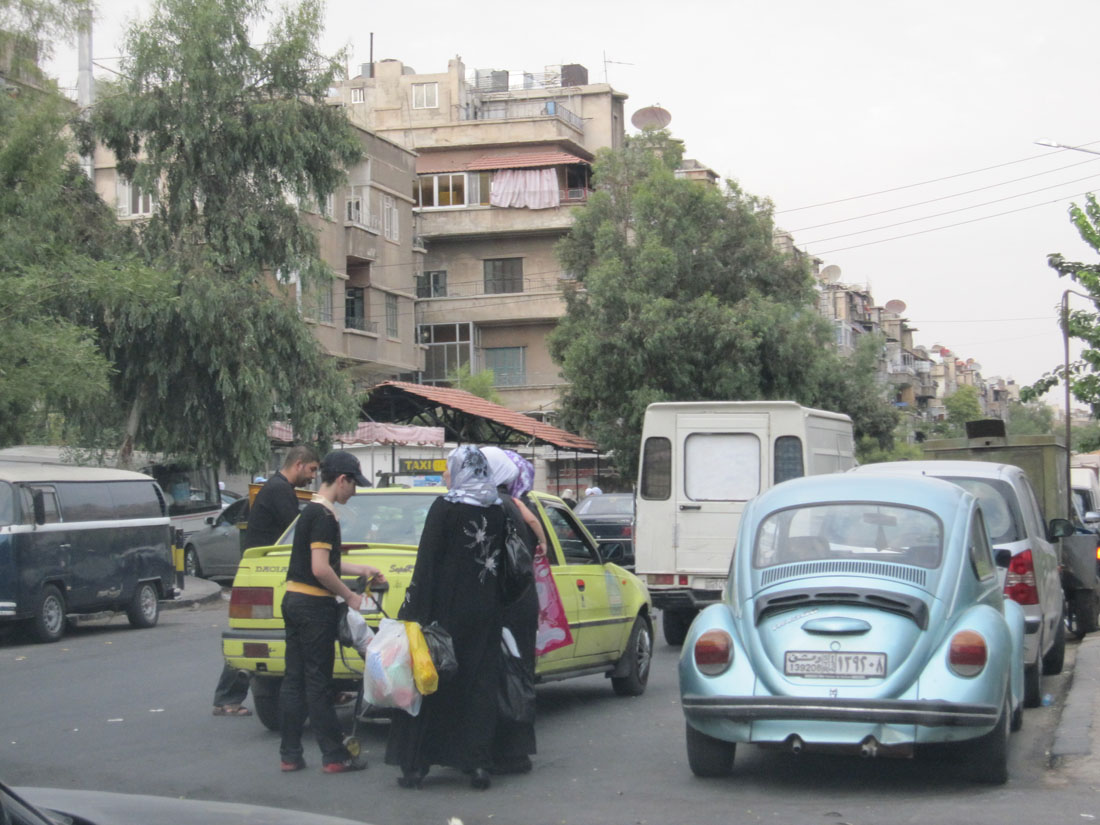
Mostly, as I think, the majority of women wear clothes of modest colors with a headscarf. The influence of France and the USSR can be visible as well as of the neighboring countries like Israel, Lebanon, and Turkey.
I would be skeptical of stories about “Syrian refugees-rapists”. Rapists are present in any population but it’s just not true to claim that all refugees are “savages” that haven’t seen a woman in their life (the last three photos occur on the same street and no one is disturbed by a lingerie shop or by its visitors).
Even the wife of Assad looks absolutely European. It is important to keep in mind that Syria is not Saudi Arabia! And in the North of the country where the territory of Syrian Kurdistan is, the fighting girls don’t differ much in appearance from European girls (see “Women’s Protection Units”). It should also be kept in mind that quite a large number of religions and branches of Islam are practiced in Syria, which is also indicative of a certain “multiculturalism” in the society.
While driving the Syrian roads one can meet the nomadic Bedouins who live in tents.
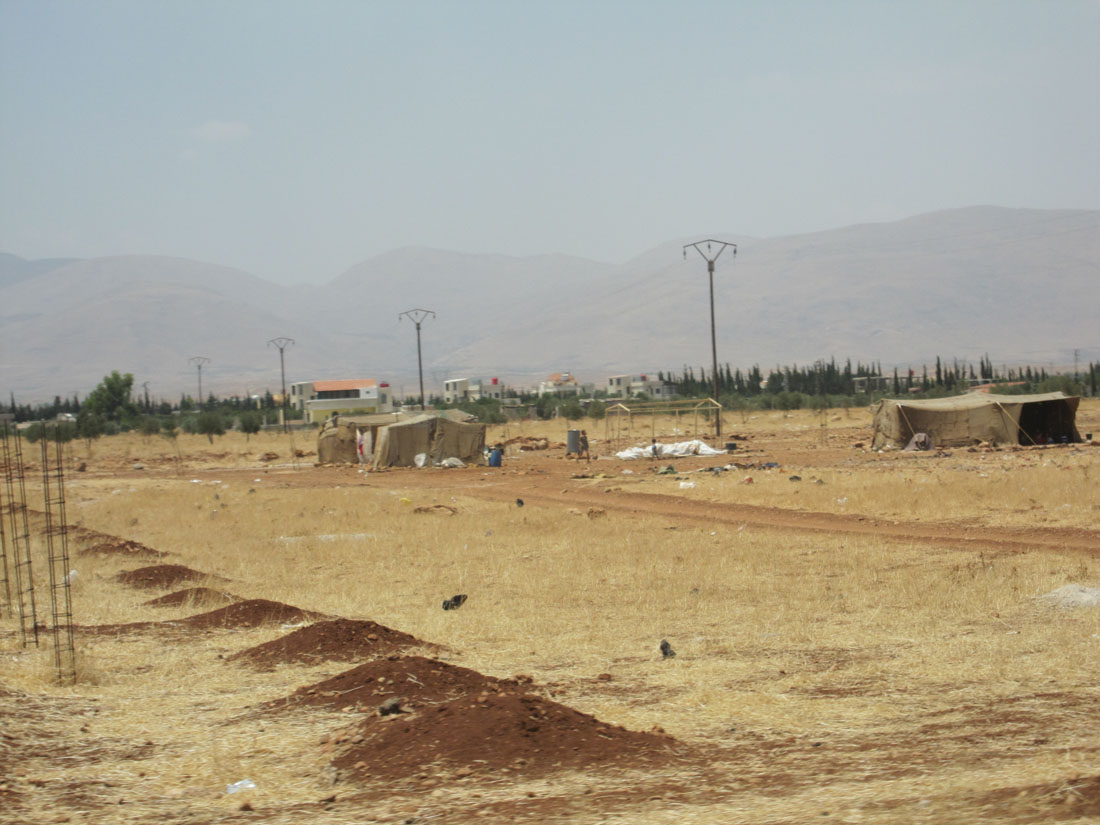
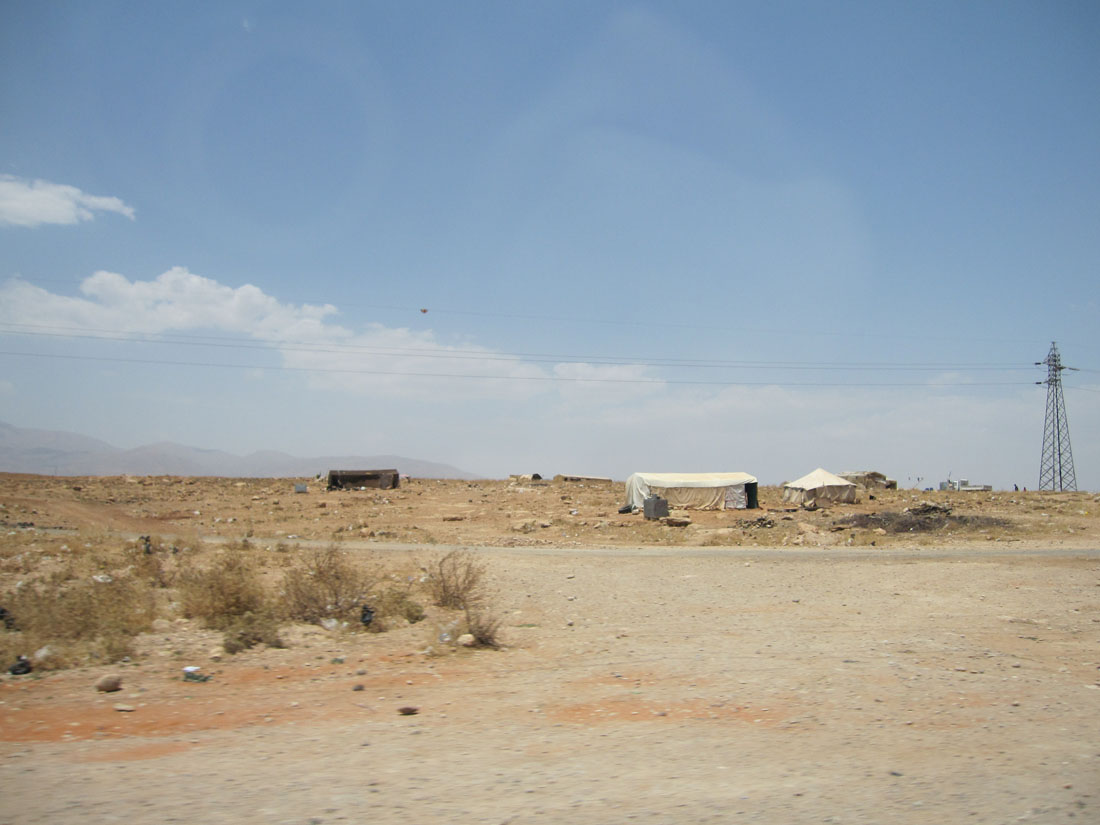
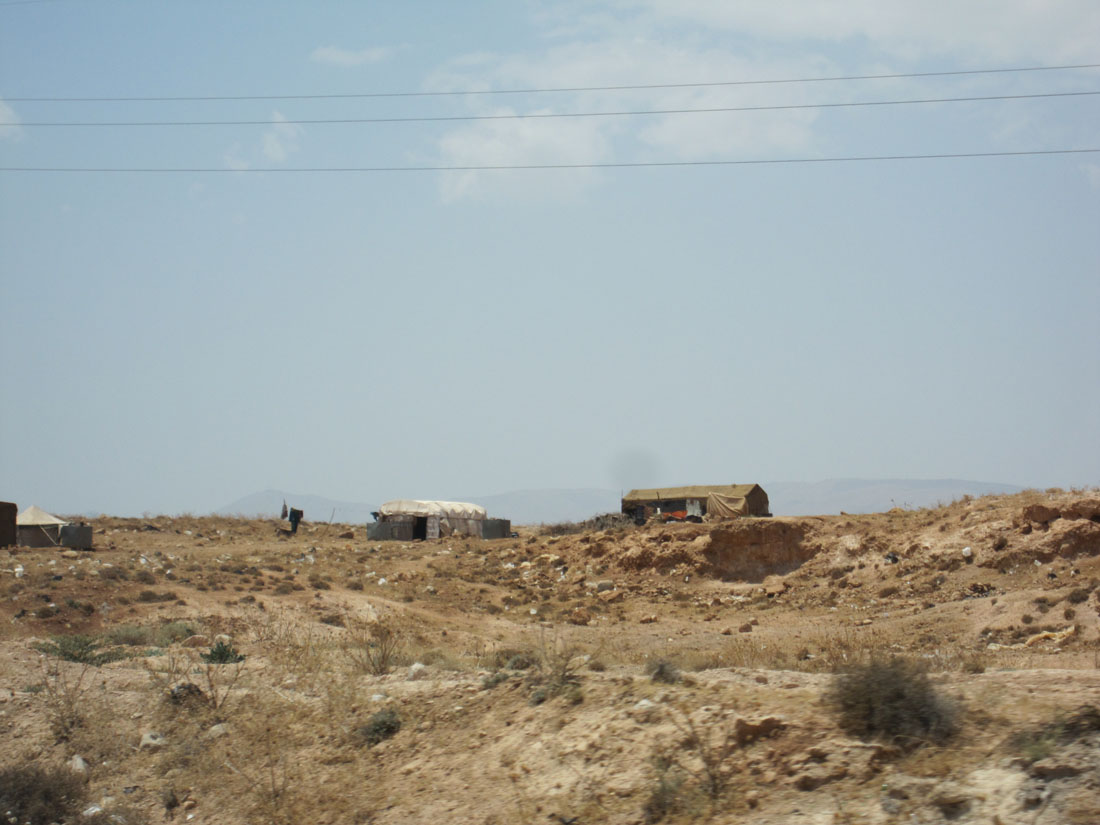
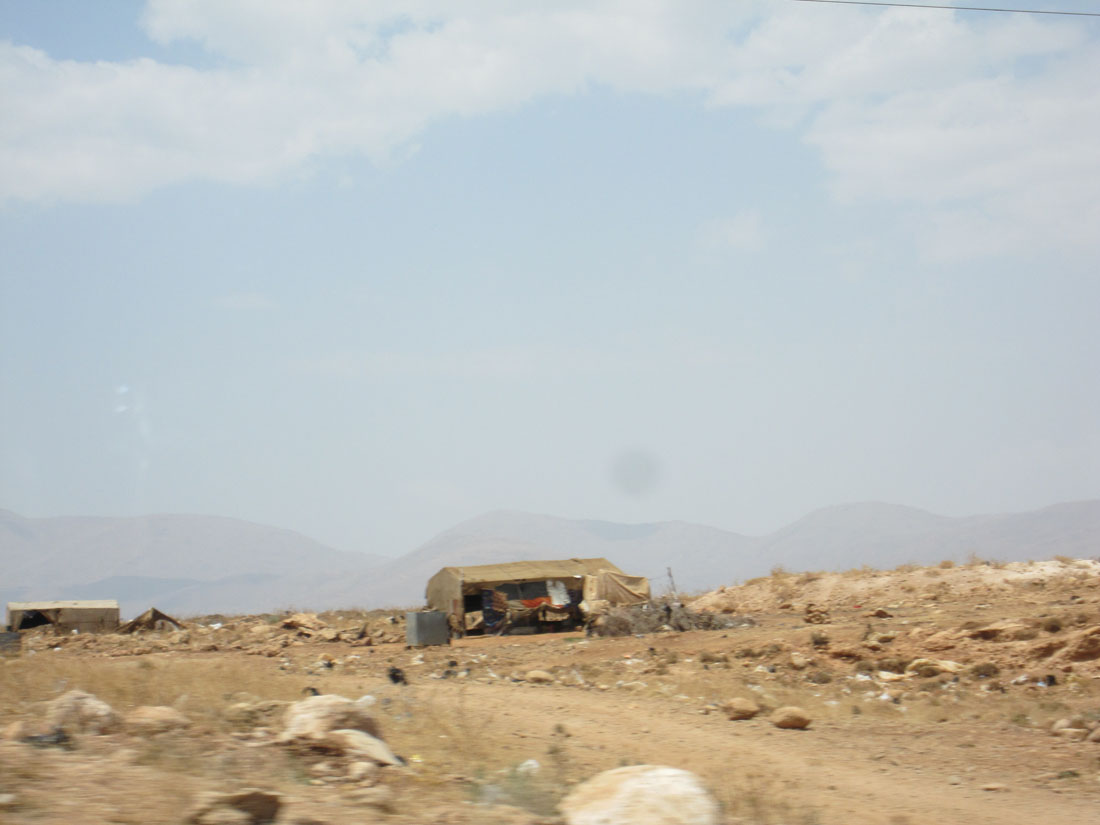
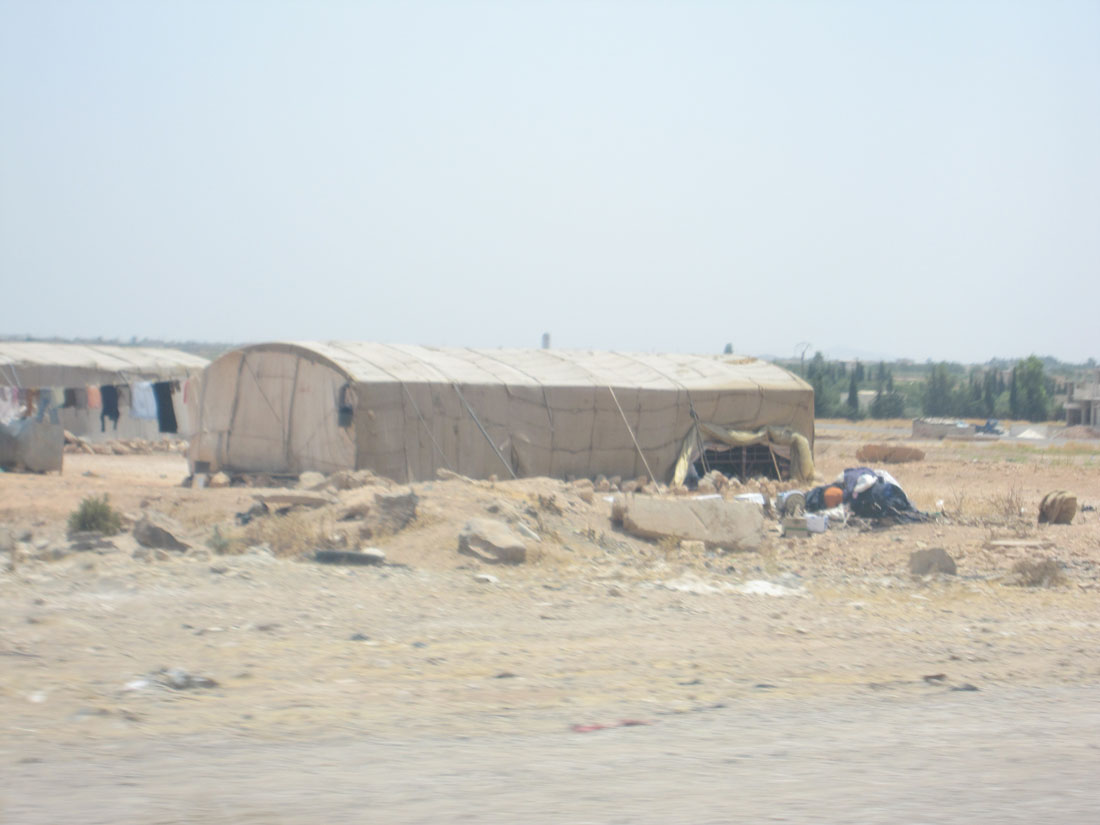
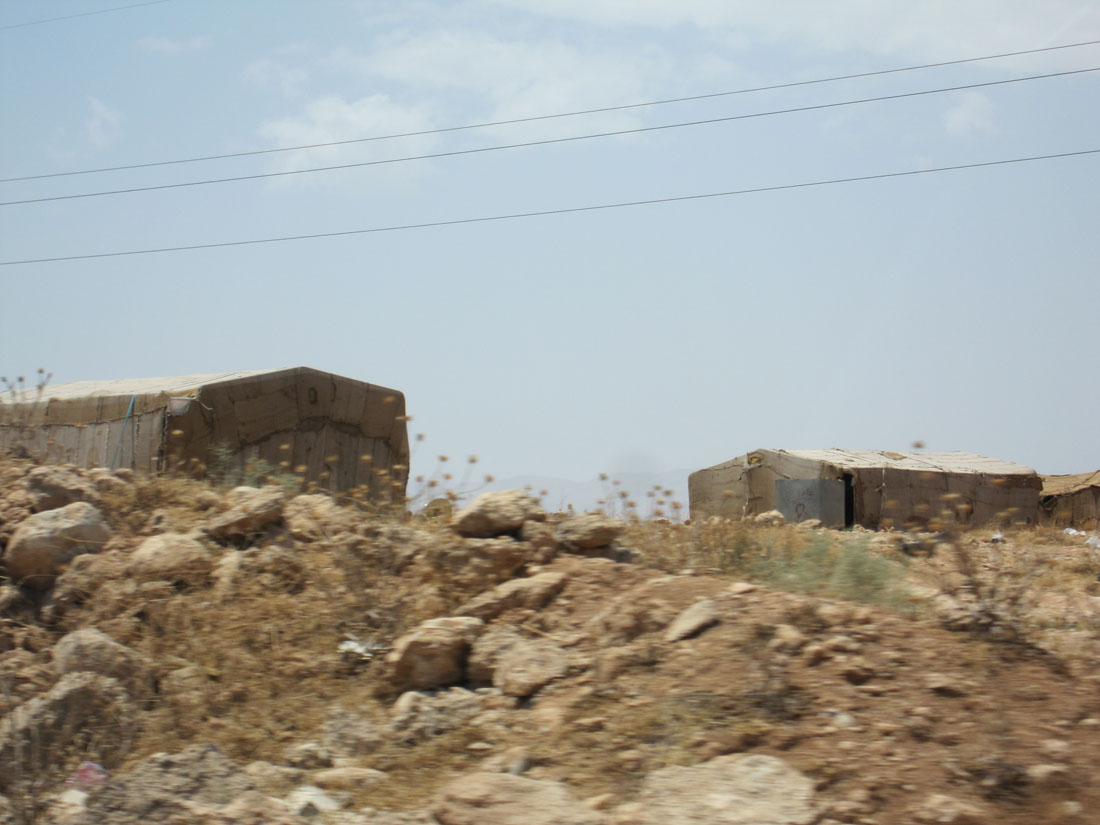
Periodically there are traders of different goods and fruit.
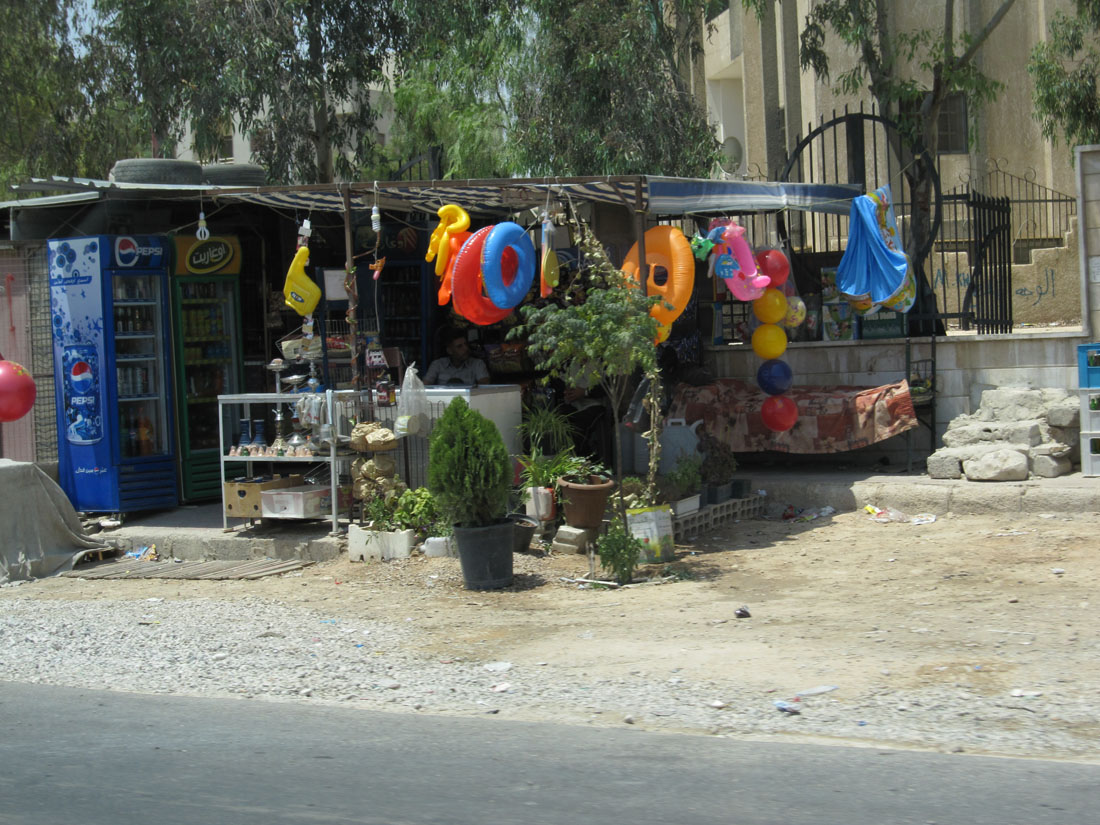
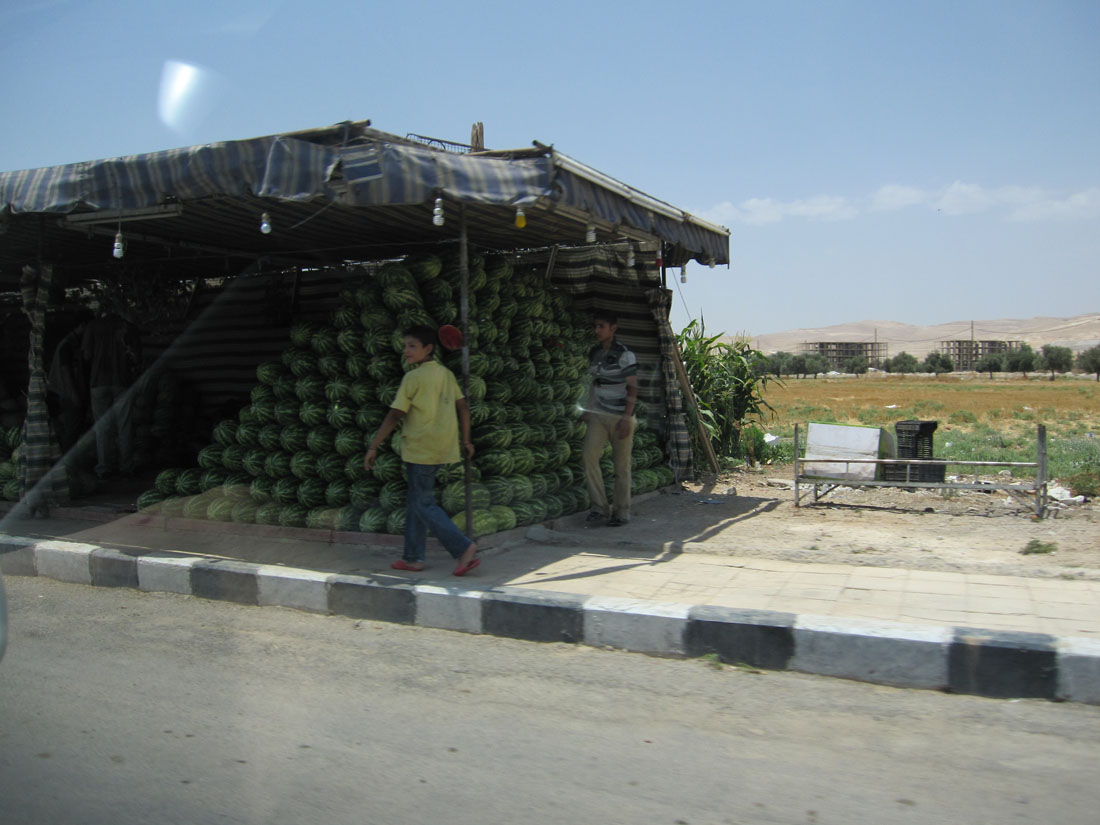
Overall, cities and roads look like this:
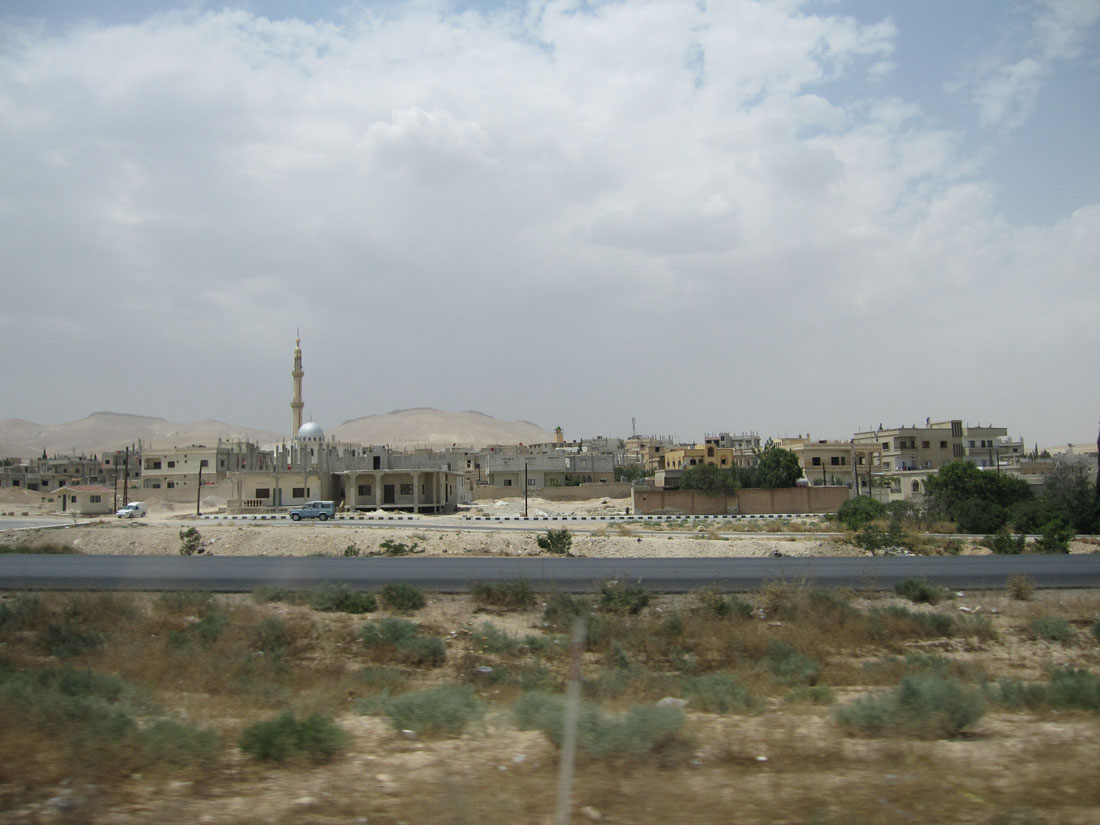

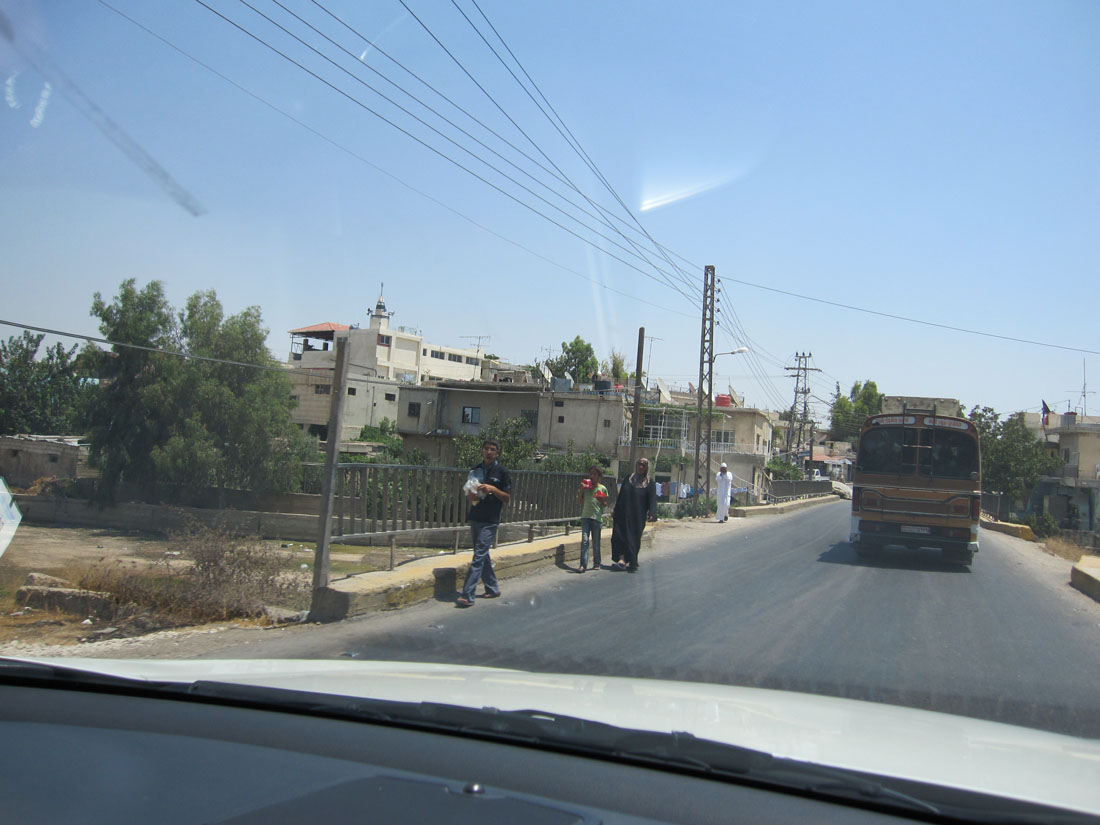
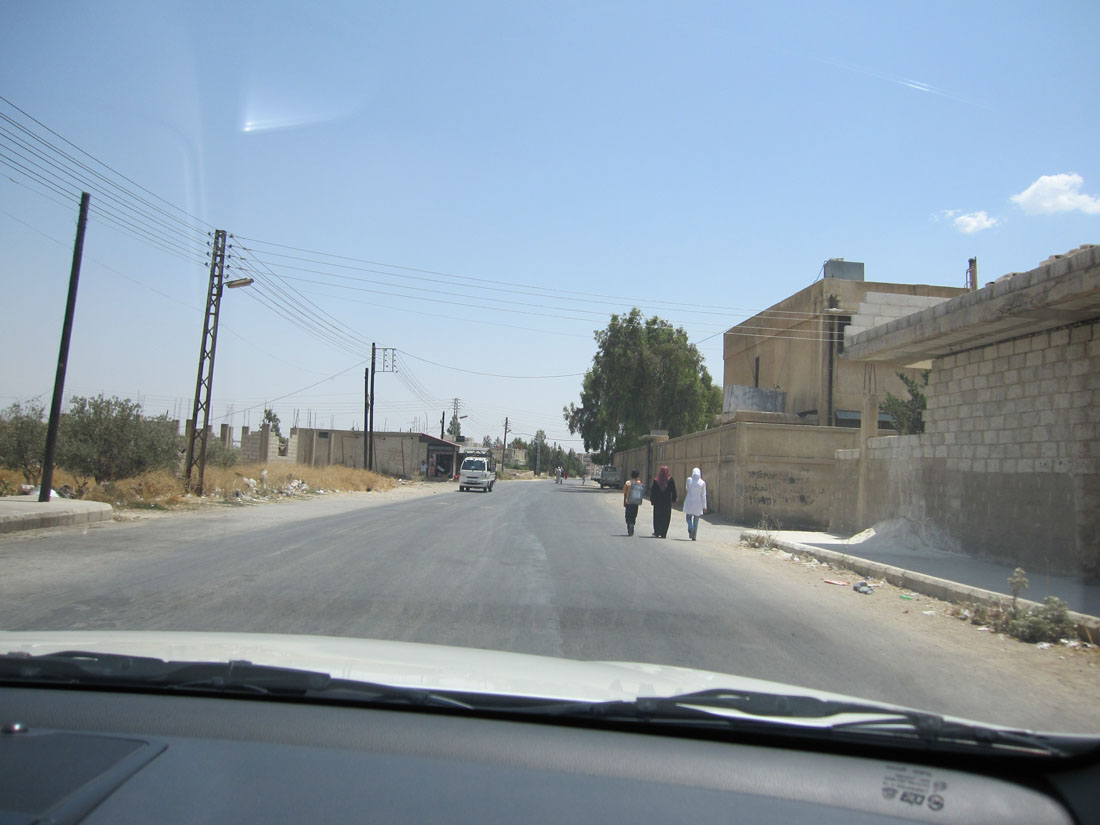
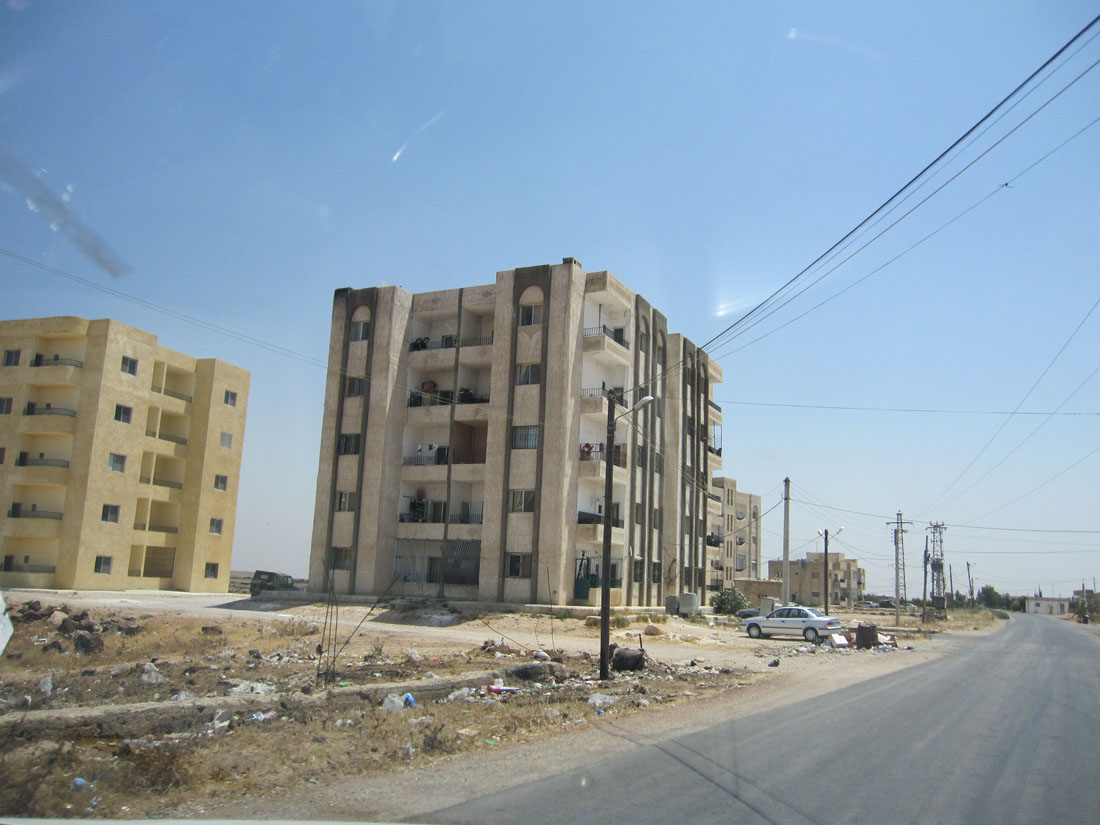
Damascus in the evening looks much more comfortable than during the daytime:
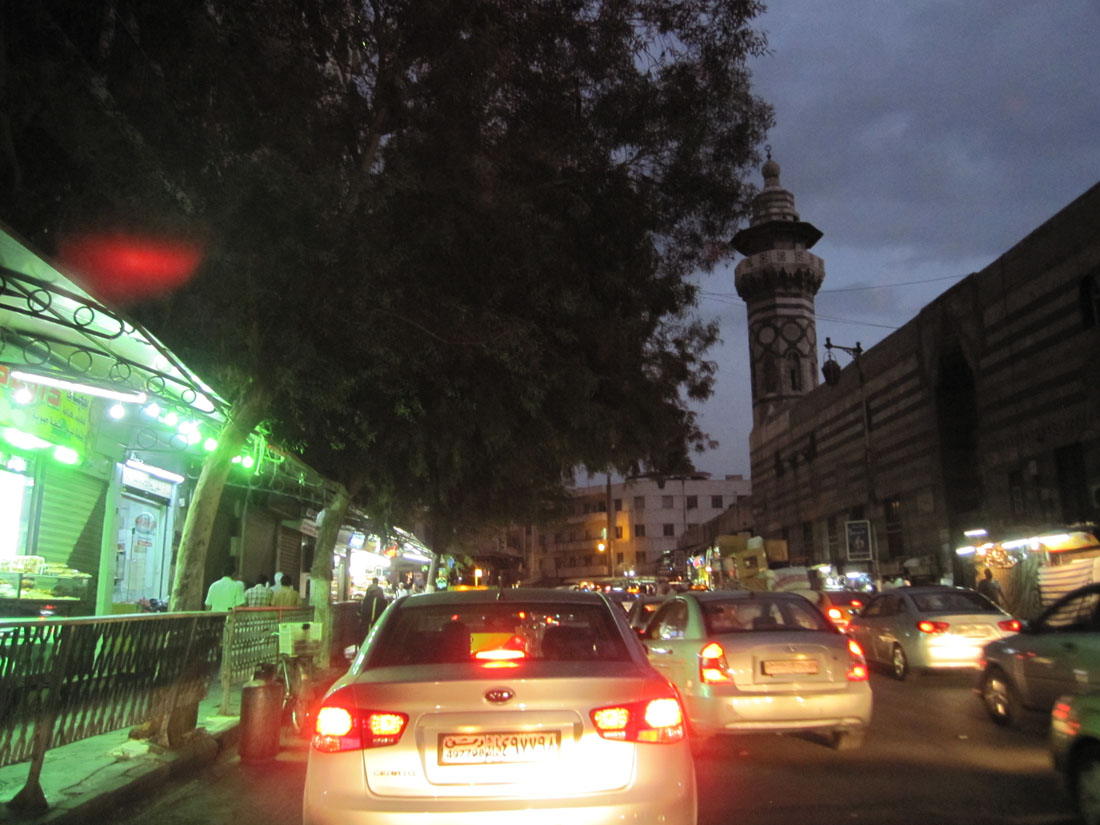

And Latakia is generally much neater and nice than the capital:


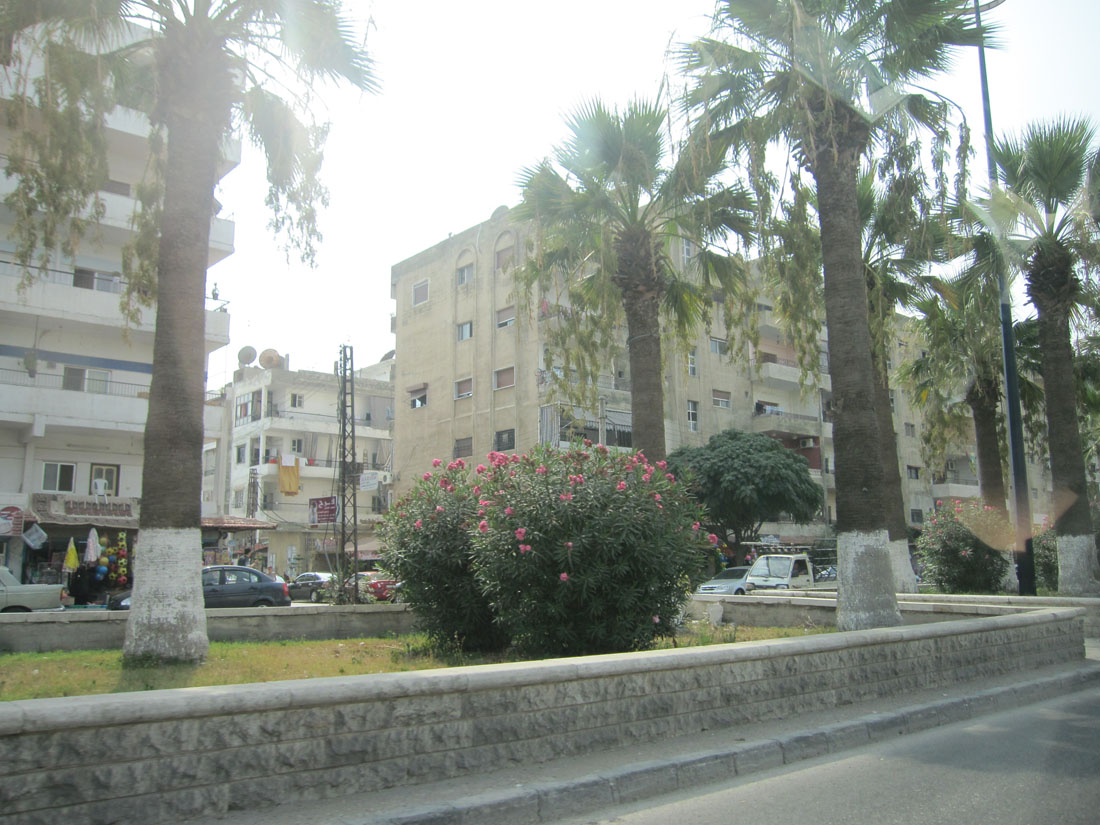
The sea is probably the cause of this as well as the greater amount of greenery (palms which can be painted) and tourists. Although, like everywhere, there are a lot of derelict spots:

By the way, after some time you get used to such a high temperature and it gets relatively comfortable. You also get used to the cold water in the shower. One of the advantages of such climate can be noted by the fact that you almost don’t sweat (clothes are always dry).
We returned to Moscow with huge delays because of the wildfire in Russia. When approaching Moscow we were redirected to, as our Canadian pilot said, “Minsk, Ukraine”. A few minutes later he corrected himself — we were flying to Minsk, Belarus. That was the first time I found myself in the Belarusian capital.
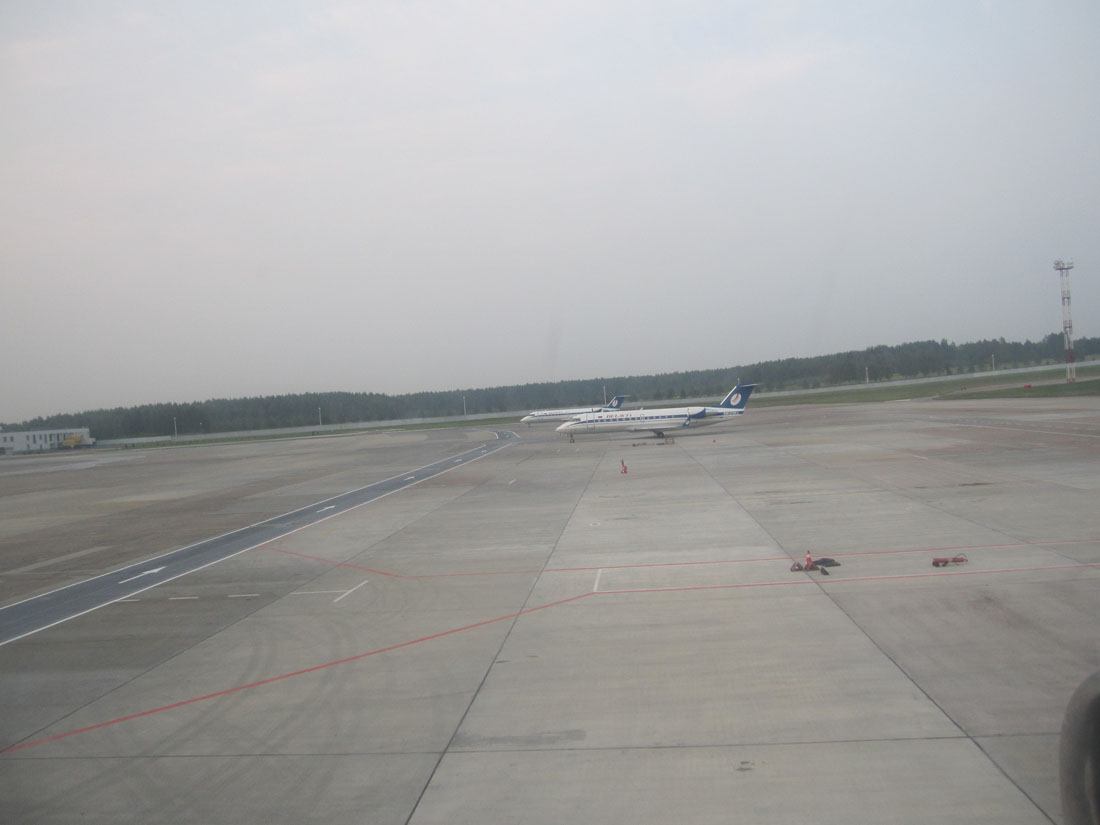
The airport management did not want to refuel our plane and the entire plane was collecting money on fuel. In total, the flight to Moscow took about 24 hours and on arrival, we felt the stifling heat and the unbearable fumes in the air.
I deliberately mentioned the story about the Canadian pilot. I think it perfectly symbolizes the entire Northern hemisphere. We all live in our countries and understand our lives, the political system of our countries and of our neighbors. We know our native language and maybe even speak a second language like English. Generally, we understand how people live in the US, Germany, and Russia. But we obviously cannot know all the details and nuances about other countries and cultures — we simply don’t interact with them.
Unfortunately, when it comes to conflict situations this lack of crucial information is often ignored. For example, how Syria is seen in this material? As a country with a lot of mess, disorder, and garbage. Gray unsightly structures or buildings that look like a parody on a castle. Cities are oriented towards cars and there is no accessible environment — people walk on the side of the road and swallow dust. There is a visible cult of personality and the government is taken over. Corruption and a strong influence of religion are also in place. From what we saw the more or less decent spots were private establishments.
According to this description (and the images), it looks very much like modern Russia. At the same time, the population in Russia is brainwashed with Syrian refugees in Europe as if it is an undoubtedly negative phenomenon. In this case, my experience with the Syrian diaspora will be useful.
Most Syrians I can think of are busy in trade and are ordinary family men. They came to Russia as students and settled here, in spite of Russian racism. In contrast to the residents of the Northern Caucasus (Russia), I did not notice any emphasis on their religious or ethnic affiliation. For the inhabitants of the Middle East Islam is the norm. When they migrate to another country their goal is to feed themselves, their families and to earn money. The best way to achieve this is assimilation into the society.
The situation is completely different with Caucasians who are citizens of Russia. For them, Islam is a distinguishing feature from other Russians. Because of the war in Chechnya Caucasians often have a dismissive attitude towards Russia and Russians. However, unlike Syrian or other immigrants they don’t need to assimilate — they are already in their country (Russia). They also don’t need to be quiet in order not to attract the attention of the authorities. That is how I see the current situation in Russia with the Caucasus. I don’t see any other reasons why many Syrians speak Russian better than many Caucasians I have encountered with.
So the imposed to the Eastern Europeans fear of Syrian refugees is only a manipulation of the public opinion. Many countries are not that far from Syria in their development and many Slavic countries are very conservative and homogeneous to tolerate misbehavior of the immigrants (e. g. Poland where there have recently been small pogroms of migrant-owned cafes in several cities).
The situation in Western Europe and the US is slightly more complicated but once again it is necessary to get out of your (very comfortable) comfort zone and imagine what the people who come from a war zone are going through. One can often find the following question: “Why don’t they stay in neighboring countries or just in the first peaceful country they arrive to?” You can come to the answer logically as you just need to take someone’s place.
Many neighboring Arab countries are also unstable and poor and so it is not so easy to find a good job there. As for Europe, why should the refugees remain in poor Greece or Bulgaria, study a difficult language, assimilate into a society that is more homogeneous and has less chance to financially support you?
For example, in Germany or Sweden, there are already a large number of immigrants from Syria who can support each other financially and give advice. Both countries are more developed in economic terms and the society is more open to migrants than, for example, Poland. I think anyone would prefer a rich country with a less homogeneous society, with a large diaspora from the home country, a $ 100 allowance and a difficult language than a poor country with a homogeneous society, small diaspora, a 10 bucks allowance and a same difficult language (it is equally difficult to learn French, German or Polish after Arabic).
Another question that Europeans ask: “I am not against refugees but I saw on photos that there are strong young guys among them and they can’t be refugees! What are they doing here? They definitely came here for the benefits!” This point of view is full of arrogance. What do you expect from these boys and men aged from 5 to 30? Attend school, enroll in a university and then build a career? The country is in ruins and educational institutions are closed. These are the three job “opportunities”: join the Assad army, join the opposition (which is hated by Russian officials very much) or become a religious fanatic.
A quite typical worldview of the Western countries is seen here — the unwillingness to understand the context. Are children working in a shoe factory in Asia? “This is awful! Child labor is unacceptable! We’re going to protest — children should be in school!” What is the result? Western companies fire children, where they were relatively well paid on a safe production. But they still need the money for them and their family. So they go to more difficult and dangerous factories which pay less but are much more harmful to their health. Or become sex workers.
“Why young healthy guys are coming to us? Refugees don’t look like that!”, yeah, a 70–90-year-old woman will cross half the world to get to Sweden because it is an easy task. And the young guys will stay in Syria and will go to work and pursue a successful career.
It is also strange that some Europeans don’t understand how their society works. It is known that most European countries are aging, which means that in the future one working person will be financially responsible for a larger amount of people who require social benefits from the state. Accepting refugees is a pragmatic move to somehow rejuvenate the population in order to be able to maintain the same number of social programs in the country in the future.
The current situation in Syria is dramatic, but even more dramatic is the attitude to the people who are not much different from the Northern hemisphere. Conflicts of cultures are inevitable, but they should be resolved not by the mutual accusation of each other but with a dialogue.
Instead of fearing refugees and immigrants it is better to try to meet them directly and interact. People tend to fear and oppose what they don’t know and have never encountered with. It is in our genes and it saved our lives. Now is a different time and communication is a solution to this difficult situation. Including direct communication from the refugees themselves — various bloggers, YouTubers and others who can share with the Westerners what the refugees have in mind in a natural for the Westerners way. As an example:
And, of course, materials such as this which make the North and the South of the planet a bit closer.



























Comments